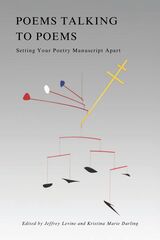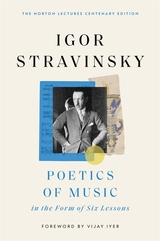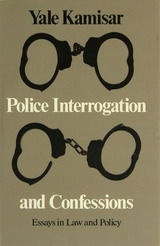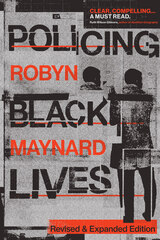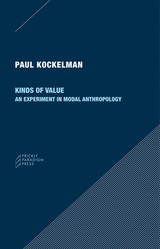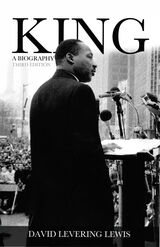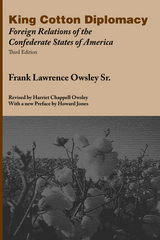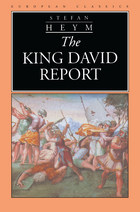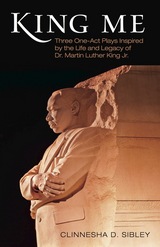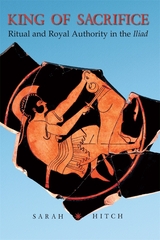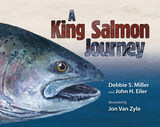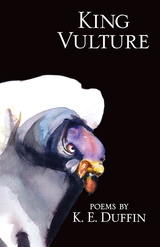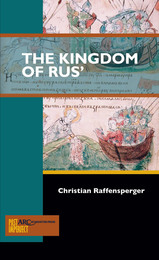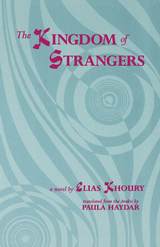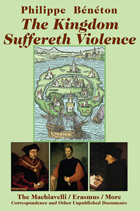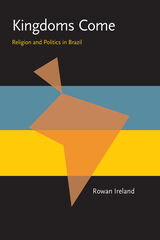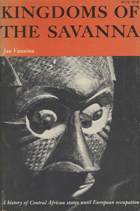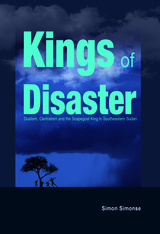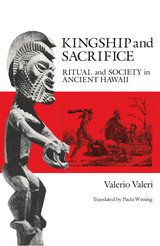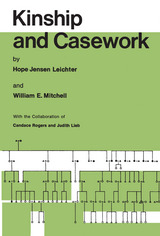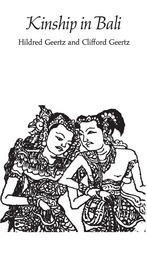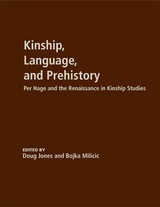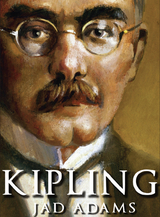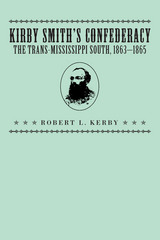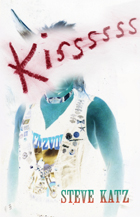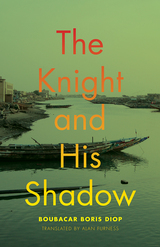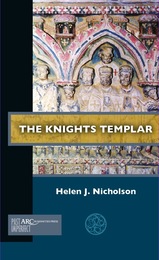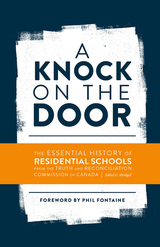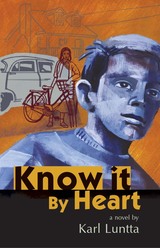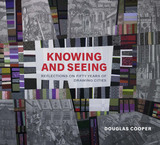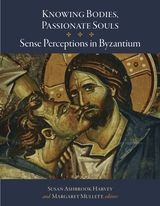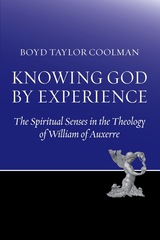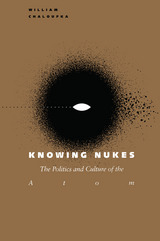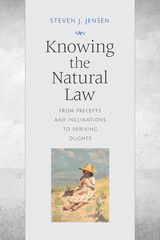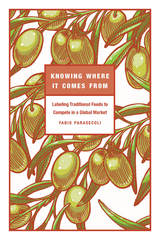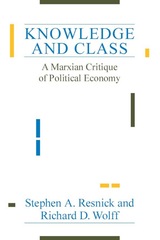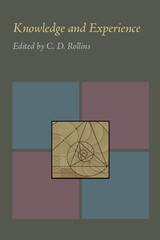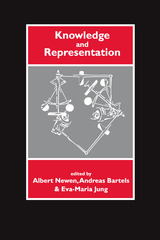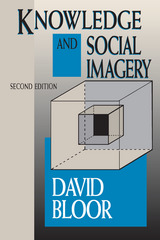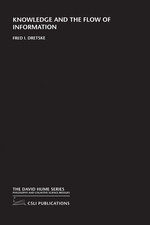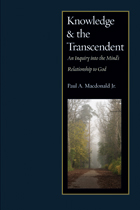The Kinds of Poetry I Want: Essays & Comedies
Charles Bernstein
University of Chicago Press, 2024 A celebration of the radical poetics of invention from Charles Bernstein.
For more than four decades, Charles Bernstein has been at the forefront of experimental poetry, ever reaching for a radical poetics that defies schools, periods, and cultural institutions. The Kinds of Poetry I Want is a celebration of invention and includes not only poetry but also essays on aesthetics and literary studies, interviews with other poets, autobiographical sketches, and more.
At once a dialogic novel, long poem, and grand opera, The Kinds of Poetry I Want arrives amid renewed attacks on humanistic expression. In his polemical, humorous style, Bernstein faces these challenges head-on and affirms the enduring vitality and attraction of poetry, poetics, and literary criticism.
Kinds of Value: An Experiment in Modal Anthropology
Paul Kockelman
Prickly Paradigm Press, 2020 In this slim volume, anthropologist Paul Kockelman showcases, reworks, and extends some of the core resources anthropologists and like-minded scholars have developed for thinking about value. Rather than theorize value head on, he offers a careful interpretation of a Mayan text about an offering to a god that lamentably goes awry. Kockelman analyzes the text, its telling, and the conditions of possibility for its original publication. Starting with a relatively simple definition of value—that which stands at the intersection of what signs stand for and what agents strive for—he unfolds, explicates, and experiments with its variations. Contrary to widespread claims in and around the discipline, Kockelman argues that it is not so-called relations, but rather relations between relations, that are at the heart of the interpretive endeavor.
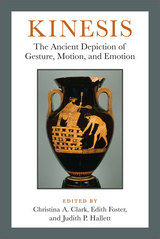 Kinesis: The Ancient Depiction of Gesture, Motion, and Emotion
Christina A. Clark, Edith Foster, and Judith P. Hallett, editors
University of Michigan Press, 2015 Donald Lateiner, in his groundbreaking work The Sardonic Smile, presented the first thorough study of nonverbal behavior in Homeric epics, drawing a significant distinction between ancient and modern gesture and demonstrating the intrinsic relevance of this “silent language” to psychological, social, and anthropological studies of the ancient world. Using Lateiner’s work as a touchstone, the scholars in Kinesis analyze the depiction of emotions, gestures, and other nonverbal cues in ancient Greek and Roman texts and consider the precise language used to depict them. Individual contributors examine genres ranging from historiography and epic to tragedy, philosophy, and vase decoration. They explore evidence as disparate as Pliny’s depiction of animal emotions, Plato’s presentation of Aristophanes’ hiccups, and Thucydides’ use of verb tenses. Sophocles’ deployment of silence is considered, as are Lucan’s depiction of death and the speaking objects of the medieval Alexander Romance. This collection will be valuable to scholars studying Greek and Roman society and literature, as well as to those who study the imitation of ancient literature in later societies. Jargon is avoided and all passages in ancient languages are translated, making this volume accessible to advanced undergraduates. Contributors in addition to the volume editors include Jeffrey Rusten, Rosaria Vignolo Munson, Hans-Peter Stahl, Carolyn Dewald, Rachel Kitzinger, Deborah Boedeker, Daniel P. Tompkins, John Marincola, Carolin Hahnemann, Ellen Finkelpearl, Hanna M. Roisman, Eliot Wirshbo, James V. Morrison, Bruce Heiden, Daniel B. Levine, and Brad L. Cook.
Kinesthetic Empathy in Creative and Cultural Practices
Edited by Dee Reynolds and Matthew Reason
Intellect Books, 2012 A key interdisciplinary concept in our understanding of social interaction across creative and cultural practices, kinesthetic empathy describes the ability to experience empathy merely by observing the movements of another human being. Encouraging readers to sidestep the methodological and disciplinary boundaries associated with the arts and sciences, Kinesthetic Empathy in Creative and Cultural Practices offers innovative and critical perspectives on topics ranging from art to sport, film to physical therapy.
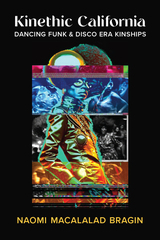 Kinethic California: Dancing Funk and Disco Era Kinships
Naomi Macalalad Bragin
University of Michigan Press, 2024 Kinethic California: Dancing Funk and Disco Era Kinships documents the emergence of new forms of black social and vernacular dance invented by youth living in 1970s California, who helped build the foundations of contemporary hip hop/streetdance culture. Naomi Macalalad Bragin weaves interviews and ethnographies of first-generation (1960s-70s) dancers of strutting, boogaloo, robotting, popping, locking, waacking, and punking styles, as it advances a theory of dance as kinetic kinship formation through a focus on techniques and practices of the dancers themselves. She offers that the term given to these collective movement practices is kinethic to bring attention to motion at the core of black aesthetics that generate dances as forms of kinship beyond blood relation. Kinethics reorient dancers toward kinetic kinship in ways that give continuity to black dance lineages under persistent conditions of disappearance and loss. As dancers engage kinethics, they reinvent gestural vocabularies that describe worlds they imagine into knowing-being.
The stories in Kinethic California attend to the aesthetics of everyday movement, seen through the lens of young artists who, from childhood, listened to their family’s soul and funk records, observed the bent-leg strolls and rhythmic handshakes of people moving through their neighborhoods, and watched each other move at house parties, school gyms, and around-the-way social clubs. Their aesthetic sociality and geographic movement provided materials for collective study and creative play. Bragin attends to such multidirectional conversations between dancer, community, and tradition, by which California dance lineages emerge and take flight.
 Kinflix: Adoption and Assisted Reproductive Technologies in Film
Marina Fedosik
Ohio State University Press, 2025 In Kinflix, Marina Fedosik analyzes cinematic representations of adoption and technologically assisted reproduction to identify the intersecting paradigms through which Western cultures understand these ways of making families. Looking at diverse genres—films include The Omen,Raising Arizona,Losing Isaiah,Blade Runner, and more—Fedosik finds that the heterocoital family remains a hegemonic metaphor for representing and structuring all other methods of reproduction. This potentially precludes understanding adoption and ARTs on their own terms and requires those involved in nontraditional family formation to negotiate kinship connections and identities against the cultural demands of this model.
Resisting simple ideological readings of film genres, Fedosik unsettles cultural scripts around adoption and reproduction and scrutinizes moments where formulaic genre logic may be troubled by representations of lived experience that transcend common tropes of family formation. She argues that adoption as a reproductive technology is uniquely situated to expose cultural tensions around nontraditional methods of reproduction that are rapidly developing in the post-IVF biocultural landscape. Rapidly changing reproductive technologies, Fedosik asserts, demand a cultural response—and require more expansive reflection on reproductive futurities.
 Kinfolks: The Wilgus Stories
Gurney Norman
Ohio University Press, 2024 Published in 1977 by Gnomon Press.Kinfolks is a novelistic collection of short stories centered around Wilgus Collier, a young boy growing up in rural Kentucky during the 1940s and 1950s. The stories follow Wilgus from childhood into his early adulthood, exploring his relationships with his extended family and his Appalachian community. Gurney Norman introduces readers to Wilgus’s world through a series of vignettes that depict experiences with his family, particularly his parents and grandparents. These stories highlight the challenges and joys of rural life, offering a poignant look at complex family dynamics and the deep-rooted traditions of Appalachia. Throughout the book, Norman’s writing is characterized by its rich, evocative descriptions of the Appalachian landscape and its authentic portrayal of the region’s culture and people. Kinfolks—adapted for the screen as The Wilgus Stories—is celebrated for vivid storytelling that captures the essence of life in Kentucky coal country.
King: A Biography
David Levering Lewis
University of Illinois Press, 2013 Acclaimed by leading historians and critics when it appeared shortly after the death of Dr. Martin Luther King Jr., this foundational biography wends through the corridors in which King held court, posing the right questions and providing a keen measure of the man whose career and mission enthrall scholars and general readers to this day. Updated with a new preface and more than a dozen photographs of King and his contemporaries, this edition presents the unforgettable story of King's life and death for a new generation.
King Alfred: Burnt Cakes and Other Legends
David Horspool
Harvard University Press, 2006 When the BBC ran a poll in 2001 to name the greatest Briton, Alfred, a ninth-century monarch, was the only king to make the top 20. Also the only English sovereign to be called "the Great," Alfred used to be remembered as much through folklore as through his accomplishments.
Horspool sees Alfred as inextricably linked to the legends and stories that surround him, and rather than attempting to separate the myth from the "reality," he explores how both came together to provide a historical figure that was all things to all men. This book offers a vivid picture of Alfred's England, but also of the way that history is written, and how much myth has had to do with that.
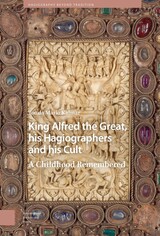 King Alfred the Great, his Hagiographers and his Cult: A Childhood Remembered
Tomás Mario Kalmar
Amsterdam University Press, 2023 This book situates Alfred the Great in his hagiographic context. For 150 years, the fables told in the ninth century about Alfred’s childhood have posed interlocking disciplinary challenges to historians committed to evicting romance from history. Blending current Hagiography Studies with historical, literary, and biblical hermeneutics can help us forgo the anti-hagiographic commitments which motivated the scholars who purified the Victorian cult of Alfred by expunging his legends and salvaging his historicity. The book focusses on the typological functions of three Alfredian fables from the Old English Chronicle, the Old English Boethius, and Asser’s Vita Ælfredi, analyses the plot common to all three, critiques the psychological conjecture that Alfred’s childhood memory was their common source, and shows that synoptically they can help us see how Alfred shaped the curve of his own life’s destiny and how he engaged in the formation of his own cult to last a thousand years.
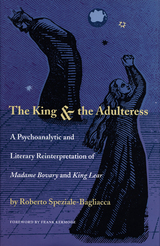 The King and the Adulteress: A Psychoanalytic and Literary Reinterpretation of Madame Bovary and King Lear
Roberto Speziale-Bagliacca
Duke University Press, 1998 The King and the Adulteress brings together two essays that propose radically revisionary readings of two of the most important literary works in the Western canon, Flaubert’s Madame Bovary and Shakespeare’s King Lear. In offering a new understanding of a deeply sadomasochistic relationship and of an authoritarian pathology, renowned psychoanalyst Roberto Speziale-Bagliacca combines psychoanalysis with literary studies to challenge the conventional judgments of readers and the stereotyped interpretations of literary critics to these masterpieces.
Approaching the characters in Bovary and Lear from both an analytic and a critical viewpoint, Speziale-Bagliacca reinterprets many issues and events that involve archetypal figures of modern literary mythology. In fact, he reverses much of the received opinion about them. Charles Bovary, for example, far from being a victim of his wife’s neurotic restlessness or the epitome of a passive imbecile, is a masochist of the highest order who makes a decisive contribution to Emma’s miserable end. Lear, rather than a tragedy involving the sweet Cordelia, noble Kent, and the Fool as good and loyal supporters of an old king driven to madness by his overbearing evil daughters, is precisely the opposite. The sympathetic understanding of the reader should go, Speziale-Bagliacca suggests, also to Regan, Goneril, and Edmund, while the king, whose crisis is interpreted in the light of psychoanalytic findings on depression, finally becomes the true unbeloved "bastard" of the play.
Roberto Speziale-Bagliacca is a psychoanalyst and Professor of Psychotherapy at the Medical School of the University of Genoa. He is the author of On the Shoulders of Freud and many other works.
King Benjamin's Speech Made Simple
John W. Welch
Foundation for Ancient Research and Mormon Studies, 1999 King Benjamin’s Speech Made Simple is a popular abridgment of the expansive volume King Benjamin’s Speech: “That Ye May Learn Wisdom” . Prepared with the general reader in mind, this streamlined version presents the essential contents of the original book. Eleven studies examine the classic speech from many angles, viewing it as a manual for Christian discipleship, a coronation and covenant-renewal text, an ancient farewell address, a key part of a religious celebration, a prophetic lawsuit, a masterful oration of stunning structural complexity, and much more.
King Cotton Diplomacy: Foreign Relations of the Confederate States of America
Frank L. Owsley Sr., revised by Harriet Chappell Owsley, and with a new Preface by Howard Jones
University of Alabama Press, 2008 The exhaustive, definitive study of Southern attempts to gain international support for the Confederacy by leveraging the cotton supply for European intervention during the Civil War. Using previously untapped sources from Britain and France, along with documents from the Confederacy’s state department, Frank Owsley’s King Cotton Diplomacy is the first archival-based study of Confederate diplomacy.
 King Croesus’ Gold: Excavations at Sardis and the History of Gold Refining
Andrew Ramage and Paul Craddock
Harvard University Press, 2000 The fabulous wealth of the Lydian Kingdom (in what is now western Turkey) was renowned throughout the classical world—in fact, Lydia’s kings created the world’s first coinage. The Harvard–Cornell Sardis Expedition has unearthed a gold refinery from the time of King Croesus (the sixth century BC) where impure gold from the Pactolus River was treated to produce pure gold and silver. Though the ancient treasure is now gone, this volume illuminates the industry and technology that produced the riches and offers the first authoritative survey of early gold refining and assaying techniques from around the world. The authors fully describe the excavation of the only known ancient refinery and the scientific study at the British Museum to reconstruct the refining process. The unique evidence from Sardis and accounts from historical sources shed light on ancient metallurgy.
The King David Report
Stefan Heym
Northwestern University Press, 1997 In this retelling of the biblical story, King Solomon commissions Ethan the Scribe to write the official history of King David. In return for the finest cooking in the land and the wages of a minor prophet, Ethan must write a proper record, full of glory and battles, statecraft and honor--a tribute to David and, of course, to Solomon, his heir. But as Ethan explores the story, he finds another life hidden behind the iron curtain dividing past from present: the story of a David who seduced, lied, bragged, and plundered his way to power. Ethan wonders: which life should be reported in the King David Report?
Written by one of Germany's most acclaimed dissident authors, The King David Report is both an analysis of the writer's obligations to truth, and an astute satire on the workings of history and politics in a totalitarian state.
 King George's War and the Thirty Year Peace: The Third Contest for North America
Michael G. Laramie
Westholme Publishing, 2024 The Final Volume in the Award-Winning Wars for North America Trilogy: King William's, Queen Anne's and King George's Wars
King George’s War and the Thirty-Year Peace continues the contest for North America from the end of Queen Anne’s War in 1713, marking the beginning of the Thirty-Year Peace, through the start of King George’s War in 1744, to its conclusion with the signing of Treaty of Aix-la-Chapelle four years later. While there would be little fighting between the French, Spanish, and British colonies in North America during the Thirty-Year Peace—the Franco-Spanish conflict of 1719 being an exception—for the French and British internally it did not prove to be peaceful. Conflicts with former Indigenous allies erupted, including with the Three Years War, the Yamassee War, and the Natchez and Chickasaw Wars. In the south the peace was ruptured by the opening of the War of Jenkin’s Ear in 1739, which led to an attempt by South Carolina and the new colony of Georgia to seize Spanish St. Augustine, and a counter-attack by St. Augustine and Cuba aimed at the destruction of the two British colonies. While this Anglo-Spanish conflict would shift farther south into the Caribbean, to the north, news of another war between France and Britain would arrive in 1744. King George’s War, the North American component of Europe’s War of Austrian Succession, would start in Nova Scotia with French attacks on the weakly held British colony. This provocation inspired a response in the form of one of the boldest expeditions of the colonial period—Massachusetts Governor William Shirley’s successful campaign against Louisbourg on Cape Breton Island. With the French fortress in British hands and the cry of delenda est Canadaechoing through the American colonial assemblies, Shirley turned to the conquest of French Canada and convinced London to dispatch a fleet to assist in the capture of Montreal and Quebec. In Paris, news of Louisbourg’s surrender elicited an unexpected reaction in the form of one of the largest French naval expeditions ever sent to North America, with explicit orders to retake Cape Breton and expel the British from Nova Scotia. Thus, by the summer of 1746, both British and French sentries scanned the eastern horizon daily for a fleet that would determine the destiny of the conflict, but neither would be happy with what they found.
The final volume in Michael G. Laramie’s acclaimed histories of the European struggle for North America that set the stage for the French and Indian War, King George’s War and the Thirty-Year Peace: The Third Contest for North America, 1714–1748, takes the reader along with the combatants into the field and waterways, including Native American, French, Spanish, Provincial, and British. Based on a rich variety of primary sources and fully illustrated with original maps, this volume joins the author’s King William’s War and Queen Anne’s War as the modern history of these lesser-known—but enormously important—conflicts that shaped the political story of North America.
 King Hancock: The Radical Influence of a Moderate Founding Father
Brooke Barbier
Harvard University Press, 2023 A rollicking portrait of the paradoxical patriot, whose measured pragmatism helped make American independence a reality.
Americans are surprisingly more familiar with his famous signature than with the man himself. In this spirited account of John Hancock’s life, Brooke Barbier depicts a patriot of fascinating contradictions—a child of enormous privilege who would nevertheless become a voice of the common folk; a pillar of society uncomfortable with radicalism who yet was crucial to independence. About two-fifths of the American population held neutral or ambivalent views about the Revolution, and Hancock spoke for them and to them, bringing them along.
Orphaned young, Hancock was raised by his merchant uncle, whose business and vast wealth he inherited—including household slaves, whom Hancock later freed. By his early thirties, he was one of New England’s most prominent politicians, earning a place on Britain’s most-wanted list and the derisive nickname King Hancock. While he eventually joined the revolution against England, his ever moderate—and moderating—disposition would prove an asset after 1776. Barbier shows Hancock appealing to southerners and northerners, Federalists and Anti-Federalists. He was a famously steadying force as president of the fractious Second Continental Congress. He parlayed with French military officials, strengthening a key alliance with his hospitable diplomacy. As governor of Massachusetts, Hancock convinced its delegates to vote for the federal Constitution and calmed the fallout from the shocking Shays’s Rebellion.
An insightful study of leadership in the revolutionary era, King Hancock traces a moment when passion was on the side of compromise and accommodation proved the basis of profound social and political change.
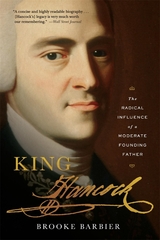 King Hancock: The Radical Influence of a Moderate Founding Father
Brooke Barbier
Harvard University Press A concise and highly readable biography…[Hancock’s] legacy is very much worth our remembering. —Wall Street Journal
“King Hancock is a vastly enjoyable work of popular history that wears its impressive scholarship lightly. It deftly explains the wider forces that unraveled the colonists’ close bonds with the mother country… The book also features an almost tactile account of what it was like to live in Boston in the eighteenth century.” —New Criterion
“A terrific book. Barbier’s meticulous research sheds light on how one of the wealthiest men of his time made himself into a man of the people—a politician whose genuine capacity for sensing the popular mood commanded fierce loyalty, even as he clashed with both Loyalists and radical Patriots. John Hancock was an important figure, and this biography helps restore him to his proper place.” —Robert J. Allison, author of The American Revolution: A Very Short Introduction
In this spirited account of John Hancock’s life, Brooke Barbier depicts a patriot of fascinating contradictions: a child of privilege who became a voice of the common people, uncomfortable with radicalism yet a promoter of revolution. Hancock spoke for and to Americans ambivalent about independence, bringing them along.
The man behind the famous signature was one of New England’s most prominent politicians, earning a place on Britain’s most-wanted list and the derisive nickname King Hancock. Yet he joined the revolution cautiously, and after 1776 his ever-moderating disposition proved a frequent asset. Barbier shows Hancock appealing to southerners and northerners, Federalists and Anti-Federalists. He steadied the fractious Second Continental Congress and parlayed with the great powers of Europe. As governor of Massachusetts, Hancock convinced its delegates to back the federal Constitution and calmed the fallout from Shays’s Rebellion.
An insightful study of leadership in the revolutionary era, King Hancock traces a moment when passion was on the side of compromise and accommodation was the basis of profound social and political change.
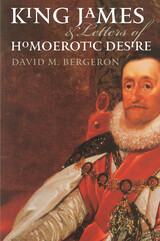 King James and Letters of Homoerotic Desire
David M. Bergeron
University of Iowa Press, 1999 What can we know of the private lives of early British sovereigns? Through the unusually large number of letters that survive from King James VI of Scotland/James I of England (1566-1625), we can know a great deal. Using original letters, primarily from the British Library and the National Library of Scotland, David Bergeron creatively argues that James' correspondence with certain men in his court constitutes a gospel of homoerotic desire. Bergeron grounds his provocative study on an examination of the tradition of letter writing during the Renaissance and draws a connection between homosexual desire and letter writing during that historical period. King James, commissioner of the Bible translation that bears his name, corresponded with three principal male favorites—Esmé Stuart (Lennox), Robert Carr (Somerset), and George Villiers (Buckingham). Esmé Stuart, James' older French cousin, arrived in Scotland in 1579 and became an intimate adviser and friend to the adolescent king. Though Esmé was eventually forced into exile by Scottish nobles, his letters to James survive, as does James' hauntingly allegorical poem Phoenix. The king's close relationship with Carr began in 1607. James' letters to Carr reveal remarkable outbursts of sexual frustration and passion. A large collection of letters exchanged between James and Buckingham in the 1620s provides the clearest evidence for James' homoerotic desires. During a protracted separation in 1623, letters between the two raced back and forth. These artful, self-conscious letters explore themes of absence, the pleasure of letters, and a preoccupation with the body. Familial and sexual terms become wonderfully intertwined, as when James greets Buckingham as "my sweet child and wife." King James and Letters of Homoerotic Desire presents a modern-spelling edition of seventy-five letters exchanged between Buckingham and James. Across the centuries, commentators have condemned the letters as indecent or repulsive. Bergeron argues that on the contrary they reveal an inward desire of king and subject in a mutual exchange of love.
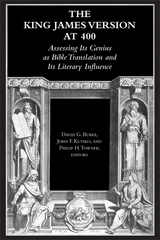 The King James Version at 400: Assessing Its Genius as Bible Translation and Its Literary Influence
David G. Burke
SBL Press, 2013 In this collection of essays, thirty scholars from diverse disciplines offer their unique perspectives on the genius of the King James Version, a translation whose 400th anniversary was recently celebrated throughout the English-speaking world. While avoiding nostalgia and hagiography, each author clearly appreciates the monumental, formative role the KJV has had on religious and civil life on both sides of the Atlantic (and beyond) as well as on the English language itself. In part 1 the essayists look at the KJV in its historical contexts—the politics and rapid language growth of the era, the emerging printing and travel industries, and the way women are depicted in the text (and later feminist responses to such depictions). Part 2 takes a closer look at the KJV as a translation and the powerful precedents it set for all translations to follow, with the essayists exploring the translators’ principles and processes (with close examinations of “Bancroft’s Rules” and the Prefaces), assessing later revisions of the text, and reviewing the translation’s influence on the English language, textual criticism, and the practice of translation in Jewish and Chinese contexts. Part 3 looks at the various ways the KJV has impacted the English language and literature, the practice of religion (including within the African American and Eastern Orthodox churches), and the broader culture.
The contributors are Robert Alter, C. Clifton Black, David G. Burke, Richard A. Burridge, David J. A. Clines, Simon Crisp, David J. Davis, James D. G. Dunn, Lori Anne Ferrell, Leonard J. Greenspoon, Robin Griffith-Jones, Malcolm Guite, Andrew E. Hill, John F. Kutsko, Seth Lerer, Barbara K. Lewalski, Jacobus A. Naudé, David Norton, Jon Pahl, Kuo-Wei Peng, Deborah W. Rooke, Rodney Sadler Jr., Katharine Doob Sakenfeld, Harold Scanlin, Naomi Seidman, Christopher Southgate, R. S. Sugirtharajah, Joan Taylor, Graham Tomlin, Philip H. Towner, David Trobisch, and N. T. Wright.
 King John
William Shakespeare
Arizona Center for Medieval and Renaissance Studies, 2023 A rousing contemporary translation of Shakespeare’s classic exploration of early English monarchy.
In this modern take on Shakespeare’s King John, Brighde Mullins navigates the political twists and turns of early English monarchy. Mullins’s translation parses Shakespeare’s language carefully, with a focus on its sonic qualities. Her version focuses on the listener, developing the play for the immense pleasure of it—the fortuitous juxtapositions of the fates of these characters.
This translation of King John was written as part of the Oregon Shakespeare Festival’s Play On! project, which commissioned new translations of thirty-nine Shakespeare plays. These translations present the work of “The Bard” in language accessible to modern audiences while never losing the beauty of Shakespeare’s verse. Enlisting the talents of a diverse group of contemporary playwrights, screenwriters, and dramaturges from diverse backgrounds, this project reenvisions Shakespeare for the twenty-first century. These volumes make these works available for the first time in print—a new First Folio for a new era.
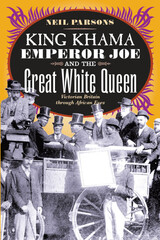 King Khama, Emperor Joe, and the Great White Queen: Victorian Britain through African Eyes
Neil Parsons
University of Chicago Press, 1997 In 1895 three African chiefs, dressed in the finest British clothing available, began a tour of the British Isles. That tour foiled Cecil Rhodes' grand plan for Africa and culminated in the Chamberlain Settlement, the document that indirectly led to the independence of present-day Botswana. King Khama, Emperor Joe, and the Great White Queen is the story of this bizarre journey, one of the most neglected events in British Victorian history, here revealed for the first time in its full detail and cultural complexity.
The chiefs initially went to England to persuade Queen Victoria not to give their lands to ruthless Rhodes and his British South Africa Company. Abandoned by the Secretary of State for the Colonies, Joseph Chamberlain, and denied an audience with the queen, the three rulers decided to tour the British Isles to plead their case to the populace. Appealing to the middle-class morality of Victorian society, the chiefs were remarkably successful in gaining support, eventually swaying Chamberlain into drafting the agreement that secured their territories against the encroachment of Rhodesia.
Historian Neil Parsons has reconstructed this journey with the help of African archival materials and news clippings from British papers, garnered from the clippings service the chiefs had the foresight to employ. In equal parts narrative of pilgrimage, voyage of discovery, and colonial resistance, King Khama, Emperor Joe, and the Great White Queen provides a view from the other side of colonialism and imperialism. It demonstrates the nuances of cultural and religious interaction between Africans and Europeans, and it does so with the richness and depth of a fully realized novel.
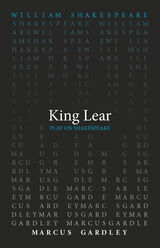 King Lear
William Shakespeare
Arizona Center for Medieval and Renaissance Studies, 2022 A new translation of Shakespeare’s great tragedy that renews it for today’s audiences.
Marcus Gardley’s translation of King Lear renews the language of one of Shakespeare’s most frequently staged tragedies for a modern audience. Gardley’s update allows audiences to hear the play anew while still finding themselves in the tragic midst of Shakespeare’s play.
This translation of King Lear was written as part of the Oregon Shakespeare Festival’s Play On! project, which commissioned new translations of thirty-nine Shakespeare plays. These translations present the work of “The Bard” in language accessible to modern audiences while never losing the beauty of Shakespeare’s verse. Enlisting the talents of a diverse group of contemporary playwrights, screenwriters, and dramaturges from diverse backgrounds, this project reenvisions Shakespeare for the twenty-first century. These volumes make these works available for the first time in print—a new First Folio for a new era.
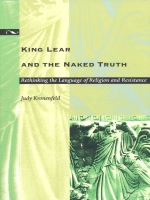 King Lear and the Naked Truth: Rethinking the Language of Religion and Resistance
Judy Kronenfeld
Duke University Press, 1998 Taking King Lear as her central text, Judy Kronenfeld seriously questions the critical assumptions of much of today’s most fashionable Shakespeare scholarship. Charting a new course beyond both New Historicist and deconstructionist critics, she suggests a theory of language and interpretation that provides essential historical and linguistic contexts for the key terms and concepts of the play. Opening the play up to the implications of these contexts and this interpretive theory, she reveals much about Lear, English Reformation religious culture, and the state of contemporary criticism. Kronenfeld’s focus expands from the text of Shakespeare’s play to a discussion of a shared Christian culture—a shared language and set of values—a common discursive field that frames the social ethics of the play. That expanded focus is used to address the multiple ways that clothing and nakedness function in the play, as well as the ways that these particular images and terms are understood in that shared context. As Kronenfeld moves beyond Lear to uncover the complex resonances of clothing and nakedness in sermons, polemical tracts, legislation, rhetoric, morality plays, and actual or alleged practices such as naked revolts by Anabaptists and the Adamians’ ritual disrobing during religious services, she demonstrates that many key terms and concepts of the period cannot be tied to a single ideology. Instead, they represent part of an intricate network of thought shared by people of seemingly opposite views, and it is within such shared cultural networks that dissent, resistance, and creativity can emerge. Warning her readers not to take the language of literary texts out of the linguistic context within which it first appeared, Kronenfeld has written a book that reinterprets the linguistic model that has been the basis for much poststructuralist criticism.
King Me: Three One-Act Plays Inspired by the Life and Legacy of Dr. Martin Luther King Jr.
Clinnesha D. Sibley
University of Arkansas Press, 2013 A trio of short dramas set in the South and spanning 1968 to the present, King Me features compelling characters and relevant themes that examine our ongoing understanding of Dr. Martin Luther King Jr. Bound by Blood, #communicate, and Paradox in the Parish richly dramatize three of King's popular quotes, offering creative methods for teaching history and social studies and setting the stage for inspiring discussions for contemporary theater goers. Readers and audiences will also learn about current civil rights issues such as the Jena Six Case in Jena, Louisiana, while appreciating, or appreciating anew, how King impacted the lives of his own and future generations.
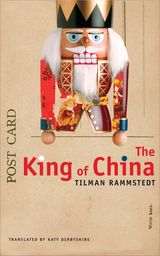 The King of China
Tilman Rammstedt
Seagull Books, 2019 When Keith Stapperpfennig and his family give their grandfather the trip of a lifetime—an all expenses paid holiday to any destination in the world—the eccentric old man arbitrarily chooses China, and he asks Keith to accompany him. But when Keith loses all the money for the journey at a casino, he goes into hiding—mostly under his desk—and his grandfather—equally uninterested in actually traveling to China—heads down the road to engage in a similar subterfuge.
And it is here that the novel opens, two men in hiding, mere miles apart. But when his grandfather dies unexpectedly, Keith is left to continue the farce alone. With the aid of a guidebook, Keith writes a series of letters home to his brothers and sisters, detailing their imaginary travels and the bizarre sights they see. These start off harmlessly, but before long he starts adding invented details: non-stop dental hygiene shows on television, dog vaccinations at the post office—and the letters get longer and longer. Engaging, strange, and ultimately moving, this hilarious novel from Tilman Rammstedt won him the prestigious Ingeborg Bachmann Prize in 2008 and confirmed him as one of Germany’s most compelling writers.
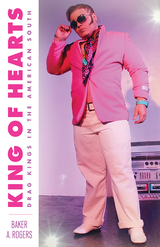 King of Hearts: Drag Kings in the American South
Baker A. Rogers
Rutgers University Press, 2022 While drag subcultures have gained mainstream media attention in recent years, the main focus has been on female impersonators. Equally lively, however, is the community of drag kings: cis women, trans men, and non-binary people who perform exaggerated masculine personas onstage under such names as Adonis Black, Papi Chulo, and Oliver Clothesoff.
King of Hearts shows how drag king performers are thriving in an unlikely location: Southern Bible Belt states like Tennessee, Georgia, and South Carolina. Based on observations and interviews with sixty Southern drag kings, this study reveals how they are challenging the region’s gender norms while creating a unique community with its own distinctive Southern flair. Reflecting the region’s racial diversity, it profiles not only white drag kings, but also those who are African American, multiracial, and Hispanic.
Queer scholar Baker A. Rogers—who has also performed as drag king Macon Love—takes you on an insider’s tour of Southern drag king culture, exploring its history, the communal bonds that unite it, and the controversies that have divided it. King of Hearts offers a groundbreaking look at a subculture that presents a subversion of gender norms while also providing a vital lifeline for non-gender-conforming Southerners.
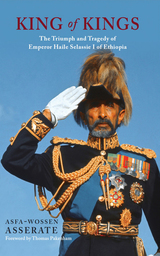 King of Kings: The Triumph and Tragedy of Emperor Haile Selassie I of Ethiopia
Asfa-Wossen Asserate
Haus Publishing, 2015 Haile Selassie I, the last emperor of Ethiopia, was as brilliant as he was formidable. An early proponent of African unity and independence who claimed to be a descendant of King Solomon, he fought with the Allies against the Axis powers during World War II and was a messianic figure for the Jamaican Rastafarians. But the final years of his empire saw turmoil and revolution, and he was ultimately overthrown and assassinated in a communist coup.
Written by Asfa-Wossen Asserate, Haile Selassie’s grandnephew, this is the first major biography of this final “king of kings.” Asserate, who spent his childhood and adolescence in Ethiopia before fleeing the revolution of 1974, knew Selassie personally and gained intimate insights into life at the imperial court. Introducing him as a reformer and an autocrat whose personal history—with all of its upheavals, promises, and horrors—reflects in many ways the history of the twentieth century itself, Asserate uses his own experiences and painstaking research in family and public archives to achieve a colorful and even-handed portrait of the emperor.
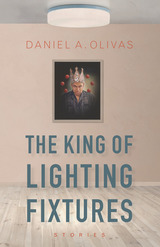 The King of Lighting Fixtures: Stories
Daniel A. Olivas
University of Arizona Press, 2017 Wanderers and writers, gangbangers and lawyers, dreamers and devils. The King of Lighting Fixtures paints an idiosyncratic but honest portrait of Los Angeles, depicting how the city both entrances and confounds. Each story serves as a reflection of Daniel A. Olivas’s grand City of Angels, a “magical metropolis where dreams come true.”
The characters here represent all walks of L.A. life—from Satan’s reluctant Craigslist roommate to a young girl coping with trauma at her brother’s wake—and their tales ebb and flow among various styles, including magical realism, social realism, and speculative fiction. Like a jazz album, they glide and bop, tease and illuminate, sadden and hearten as they navigate effortlessly from meta to fabulist, from flash fiction to longer, more complex narratives.
These are literary sketches of a Los Angeles that will surprise, connect, and disrupt readers wherever they may live.
 King of Odessa: A Novel of Isaac Babel
Robert A. Rosenstone
Northwestern University Press, 2007 An offbeat and brilliant imagining of a "lost novel" by Isaac Babel
A celebrated writer returns to his hometown of Odessa, pondering a deal with the secret police, pining for a daughter living abroad, and hoping to pen one last homage to his own past. Isaac Babel, the world famous spinner of tales about Cossacks and gangsters, arrives in Odessa to be treated for asthma-and perhaps help a condemned prisoner to escape. Or is it Babel who intends to escape?
For six decades our only record of Babel's visit has been the contents of letters and postcards sent abroad to his mother and sister. In King of Odessa, Robert A. Rosenstone imagines a version of this visit and the novel Babel wrote during those weeks. Babel himself is concerned with more than literary plots as he considers an escape just as he starts an affair with an actress who may be a police spy. He also ruminates on his past-his childhood as a sickly Jewish boy, the horrifying 1905 pogrom, the famous rides with the Cossacks that inspired Red Calvary, and above all his complicated relationships with women. Throughout the novel Rosenstone captures Babel's lively wit, his exhaustion with fame and the Soviet system, and his infectious charm.
This would prove to be Babel's last visit to Odessa. Three years later, he was arrested as a spy and executed. Rosenstone, the acclaimed biographer of writer and activist John Reed, mixes historical facts and fiction with the talent of a gifted storyteller. The result is a captivating exploration of a great writer surrounded by history and on the brink of falling out of it forever.
King of Sacrifice: Ritual and Royal Authority in the Iliad
Sarah Hitch
Harvard University Press, 2009 Descriptions of animal sacrifice in Homer offer us some of the most detailed accounts of this attempt at communication between man and gods. What is the significance of these scenes within the framework of the Iliad? This book explores the structural and thematic importance of animal sacrifice as an expression of the quarrel between Akhilleus and Agamemnon through the differing perspectives of the primary narrative and character speech. In the Iliad, animal sacrifice is incorporated into the primary narrative to bolster the royal authority of Agamemnon and further emphasize Akhilleus' isolation. The sacrifices embedded in character speech express frustration with the failure of reciprocity and the inability of sacrifice to influence the course of human events.
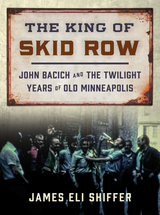 The King of Skid Row: John Bacich and the Twilight Years of Old Minneapolis
James Eli Shiffer
University of Minnesota Press, 2023 The story of a much different Minneapolis, through the words and photographs of one of its most colorful characters—now in paperback
City blue laws drove the liquor trade and its customers—hard-drinking lumberjacks, pensioners, farmhands, and railroad workers—into the oldest quarter of Minneapolis. In the fifty-cent-a-night flophouses of the city’s Gateway District, they slept in cubicles with ceilings of chicken wire. In rescue missions, preachers and nuns tried to save their souls. Sociology researchers posing as vagrants studied them. And in their midst John Bacich, aka Johnny Rex, who owned a bar, a liquor store, and a cage hotel, documented the gritty neighborhood’s last days through photographs and film of his clientele. The King of Skid Row follows Johnny Rex into this vanished world that once thrived in the heart of Minneapolis. Drawing on hours of interviews conducted in the three years before Bacich’s death in 2012, James Eli Shiffer brings to life the eccentric characters and strange events of an American skid row. Supplemented with archival and newspaper research and his own photographs, Bacich’s stories recreate the violent, alcohol-soaked history of a city best known for its clean, progressive self-image. His life captures the seamy, richly colorful side of the city swept away by a massive urban renewal project in the early 1960s and gives us, in a glimpse of those bygone days, one of Minneapolis’s most intriguing figures—spinning some of its most enduring and enthralling tales.
 King of the Cowboys, Queen of the West: Roy Rogers and Dale Evans
Raymond E. White
University of Wisconsin Press, 2006 For more than sixty years, Roy Rogers and Dale Evans personified the romantic, mythic West that America cherished well into the modern age. Blazing a trail through every branch of the entertainment industry—radio, film, recordings, television, and even comic books—the couple capitalized on their attractive personas and appealed to the nation's belief in family values, an independent spirit, community.
King of the Cowboys, Queen of the West presents these two celebrities in the most comprehensive and inclusive account to date. Part narrative, part reference, this impeccably researched, highly accessible survey spans the entire scope of Rogers's and Evans's careers, illuminating and celebrating their place in twentieth-century American popular culture. Following the pair through each stage of their professional and personal trajectories, author Raymond E. White explores the unique alchemy of the singing cowboy and his free-spirited yet feminine partner. In a dual biography, he shows how Rogers and Evans carefully husbanded their public image and—of particular note—incorporated their Christian faith into their performances. And in a series of exhaustive appendixes, he documents their contributions to each medium they worked in. Testifying to both the breadth and the longevity of their careers, the book includes radio logs, discographies, filmographies, and comicographies that will delight historians and collectors alike. With its engaging tone and meticulous research, King of the Cowboys, Queen of the West is bound to become the definitive source on the lives of these two great American icons.
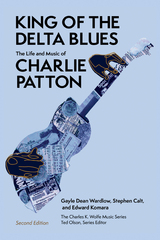 King of the Delta Blues: The Life and Music of Charlie Patton
Gayle Dean Wardlow
University of Tennessee Press, 2022 Born 130 years ago in the heart of Mississippi, Charlie Patton (c. 1891–1934) is considered by many to be a father of the Delta blues. With his bullish baritone voice and his fluid slide guitar touch, Patton established songs like “Pony Blues,” “A Spoonful Blues,” and “High Water Everywhere” in the blues lexicon and, through his imitators, in American music. But over the decades, his contributions to blues music have been overshadowed in popularity by those of Robert Johnson, Muddy Waters, and other mid-century bluesmen and women who’ve experienced a resurgence in their music. King of the Delta Blues Singers, originally published in 1988, began a small renaissance in blues and Patton research and set a new scholarly precedent touching even the spelling his name—which, to Patton himself, was "Charlie," not the "Charley" of the early records. And now, with the wide availability of Patton’s complete discography in multiple formats, this revised second edition brings the legend of Charlie Patton into a clarity of detail that was previously impossible.
Gayle Dean Wardlow and the late Stephen Calt (1946–2010) originally probed Patton’s career in the Mississippi Delta, his early performances and recordings, and his musical legacy that continues to influence today’s guitarists and performers, including such musicians as Jack White and Larkin Poe. For this second edition, Wardlow and Edward Komara refined the text and rewrote major sections, updating them with new scholarship on Patton and Delta blues. And finally, Komara has added a new afterword bringing Patton into the contemporary blues conversation and introducing numerous musical examples for the modern researcher and musician.
The second edition of King of the Delta Blues Singers will further cement Patton’s legacy among important blues musicians, and it will be of interest to anyone absorbed in the beginnings of the Delta blues and music biographies.
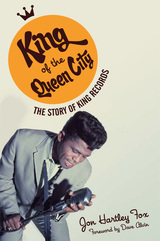 King of the Queen City: The Story of King Records
Jon Hartley Fox. Foreword by Dave Alvin
University of Illinois Press, 2014 King of the Queen City is the first comprehensive history of King Records, one of the most influential independent record companies in the history of American music. Founded by businessman Sydney Nathan in the mid-1940s, this small outsider record company in Cincinnati, Ohio, attracted a diverse roster of artists, including James Brown, the Stanley Brothers, Grandpa Jones, Redd Foxx, Earl Bostic, Bill Doggett, Ike Turner, Roy Brown, Freddie King, Eddie Vinson, and Johnny "Guitar" Watson. While other record companies concentrated on one style of music, King was active in virtually all genres of vernacular American music, from blues and R & B to rockabilly, bluegrass, western swing, and country. A progressive company in a reactionary time, King was led by an interracial creative and executive staff that redefined the face and voice of American music as well as the way it was recorded and sold. Drawing on personal interviews, research in newspapers and periodicals, and deep access to the King archives, Jon Hartley Fox weaves together the elements of King's success, focusing on the dynamic personalities of the artists, producers, and key executives such as Syd Nathan, Henry Glover, and Ralph Bass. The book also includes a foreword by legendary guitarist, singer, and songwriter Dave Alvin.
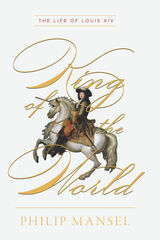 King of the World: The Life of Louis XIV
Philip Mansel
University of Chicago Press, 2020 Louis XIV was a man in pursuit of glory. Not content to be the ruler of a world power, he wanted the power to rule the world. And, for a time, he came tantalizingly close.
Philip Mansel’s King of the World is the most comprehensive and up-to-date biography in English of this hypnotic, flawed figure who continues to captivate our attention. This lively work takes Louis outside Versailles and shows the true extent of his global ambitions, with stops in London, Madrid, Constantinople, Bangkok, and beyond. We witness the importance of his alliance with the Spanish crown and his success in securing Spain for his descendants, his enmity with England, and his relations with the rest of Europe, as well as Asia, Africa, and the Americas. We also see the king’s effect on the two great global diasporas of Huguenots and Jacobites, and their influence on him as he failed in his brutal attempts to stop Protestants from leaving France. Along the way, we are enveloped in the splendor of Louis’s court and the fascinating cast of characters who prostrated and plotted within it.
King of the World is exceptionally researched, drawing on international archives and incorporating sources who knew the king intimately, including the newly released correspondence of Louis’s second wife, Madame de Maintenon. Mansel’s narrative flair is a perfect match for this grand figure, and he brings the Sun King’s world to vivid life.
This is a global biography of a global king, whose power was extensive but also limited by laws and circumstances, and whose interests and ambitions stretched far beyond his homeland. Through it all, we watch Louis XIV progressively turn from a dazzling, attractive young king to a belligerent reactionary who sets France on the path to 1789. It is a convincing and compelling portrait of a man who, three hundred years after his death, still epitomizes the idea of le grand monarque.
 The King of Time: Selected Writings of the Russian Futurian
Velimir Khlebnikov
Harvard University Press, 1985 Velimir Khlebnikov, who died in 1922 at the age of thirty-six, is one of the great, untranslated Russian poets of this century. Hailed by his contemporaries and by later writers and scholars as the creative genius behind the Russian Futurist movement, Khlebnikov is famous more for his inaccessibility than for the excellence of what he actually produced. Even Russians are generally baffled by him.
Now, in a powerful American rendition, we are given access to the strange and beautiful world of Khlebnikov, “the word’s wild highwayman.” Trained in the natural sciences and mathematics and by temperament an artist, Khlebnikov thought he had discovered the Laws of Time and Tables of Destiny, by which enlightened humans could live in harmony with themselves and with nature. He coined the terms “Futurian” and “Presidents of Planet Earth” for himself and his friends, and he devoted all of his short, restless life to finding a language appropriate to his vision. Experiments with words became magical paths to a reinvigorated future, and produced some of the most extraordinary poems in the Russian language.
These goals and researches were variously embodied as well in stories, plays, and visionary essays in which Khlebnikov advances architectural plans for mobile cities, a new alphabet based on universal meanings of sounds, and communication by way of vast television networks. The result is poetry of startling originality, modernity, and linguistic virtuosity—a true challenge to translators and one that has been met brilliantly here by Paul Schmidt and Charlotte Douglas.
The King of Time is a representative sampling of Khlebnikov’s writings, taken from the translation of his complete works prepared under the auspices of the Dia Art Foundation. It includes many pieces, among them the full text of the astounding poem-play Zangezi, never before translated. General readers will be introduced to the legendary Khlebnikov, and cognoscenti will applaud the inventiveness of the rendering.
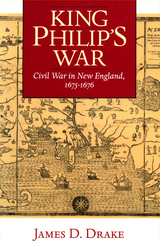 King Philip's War: Civil War in New England, 1675-1676
James D. Drake
University of Massachusetts Press, 1999 Sometimes described as "America's deadliest war," King Philip's War proved a critical turning point in the history of New England, leaving English colonists decisively in command of the region at the expense of native peoples. Although traditionally understood as an inevitable clash of cultures or as a classic example of conflict on the frontier between Indians and whites, in the view of James D. Drake it was neither. Instead, he argues, King Philip's War was a civil war, whose divisions cut across ethnic lines and tore apart a society composed of English colonizers and Native Americans alike. According to Drake, the interdependence that developed between English and Indian in the years leading up to the war helps explain its notorious brutality. Believing they were dealing with an internal rebellion and therefore with an act of treason, the colonists and their native allies often meted out harsh punishments. The end result was nothing less than the decimation of New England's indigenous peoples and the consequent social, political, and cultural reorganization of the region. In short, by waging war among themselves, the English and Indians of New England destroyed the world they had constructed together. In its place a new society emerged, one in which native peoples were marginalized and the culture of the New England Way receded into the past.
A King Salmon Journey
Debbie Miller and John H. Eiler
University of Alaska Press, 2014 Two thousand miles is a staggering distance for any kind of journey. But imagine making it not by car or even foot—but by fin. That’s what faces Chinook, a female king salmon, as she takes a dramatic trip to safely deliver her eggs. From the Bering Sea, up the Yukon River, and on to the Nisutlin River, A King Salmon Journey takes young readers on an engaging ride through the waters of Alaska and Canada, bringing to life the biology—and mystery—of one of the world’s most popular fish. Based on the story of a real-life Chinook, this beautifully illustrated book deftly combines science with a fast-paced tale of survival and perseverance.
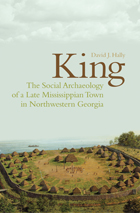 King: The Social Archaeology of a Late Mississippian Town in Northwestern Georgia
David Hally
University of Alabama Press, 2008 At the time of Spanish contact in A.D. 1540, the Mississippian inhabitants of the great valley in northwestern Georgia and adjacent portions of Alabama and Tennessee were organized into a number of chiefdoms distributed along the Coosa and Tennessee rivers and their major tributaries. The administrative centers of these polities were large settlements with one or more platforms mounds and a plaza. Each had a large resident population, but most polity members lived in a half dozen or so towns located within a day’s walk of the center. This book is about one such town, located on the Coosa River in Georgia and known to archaeologists as the King site. Excavations of two-thirds of the 5.1 acre King site reveal a detailed picture of the town’s domestic and public architecture and overall settlement plan. Intensive analysis of architectural features, especially of domestic structures, enables a better understanding of the variation in structure size, compass orientation, construction stages, and symbolic cosmological associations; the identification of multi-family households; and the position of individual structures within the town’s occupation sequence or life history. Comparison of domestic architecture and burials reveals considerable variation between households in house size, shell bead wealth, and prominence of adult members. One household is preeminent in all these characteristics and may represent the household of the town chief or his matrilineal extended family. Analysis of public architectural features has revealed the existence of a large meeting house with likely historical connections to 18th-century Creek town houses; a probable cosmological basis for the town’s physical layout; and an impressive stockade-and-ditch defensive perimeter. The King site represents a nearly ideal opportunity to identify the kinds of status positions that were held by individual inhabitants; analyze individual households and investigate the roles they played in King site society; reconstruct the community that existed at King, including size, life history, symbolic associations, and integrative mechanisms; and place King in the larger regional political system. With excavations dating back to 1973, and supported in part by the National Endowment for the Humanities and the National Geographic Society, this is social archaeology at its best.
King Vulture: Poems
K. E. Duffin
University of Arkansas Press, 2005 This stunning collection heralds the debut of a most gifted poet, one who turns to the formal traditions of the past to celebrate and elegize our vast and transient world in which human stories—tragedies and triumphs—are invariably bound up with nature. K. E. Duffin’s poems are about transformations, from life to death and from death to life, from the sprawl of experience to the spare music of the poem that can reach the future only through memory. These are poems that court the ear and eye alike. They surprise us with their elegant forms and rich, classical themes; they delight us with their force of language and delicious renderings of the vast complications of things.
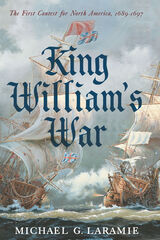 King William's War: The First Contest for North America, 1689–1697
Michael Laramie
Westholme Publishing, 2017 Winner of the New York Society of Colonial Wars Annual Book Award
Fought in New York, New England, and Canada, the Conflict that Began the Long French and English Struggle for the New World
While much has been written on the French and Indian War of 1754–1763, the colonial conflicts that preceded it have received comparatively little attention. Yet in King William’s War, the first clash between England and France for control of North America, the patterns of conflict for the next seventy years were laid, as were the goals and objectives of both sides, as well as the realization that the colonies of the two nations could not coexist.
King William’s War actually encompassed several proxy wars being fought by the English and the French through their native allies. The Beaver Wars was a long running feud between the Iroquois Confederacy, New France, and New France’s native allies over control of the lucrative fur trade. Fueled by English guns and money, the Iroquois attempted to divert the French fur trade towards their English trading partners in Albany, and in the process gain control over other Indian tribes. To the east the pro-French Wabanaki of Maine, Nova Scotia, and New Brunswick had earlier fought a war with New England, but English expansion and French urgings, aided by foolish moves and political blunders on the part of New England, erupted into a second Wabanaki War on the eve of King William’s War. Thus, these two conflicts officially became one with the arrival of news of a declaration of war between France and England in 1689. The next nine years saw coordinated attacks, including French assaults on Schenectady, New York, and Massachusetts, and English attacks around Montreal and on Nova Scotia. The war ended diplomatically, but started again five years later in Queen Anne’s War.
A riveting history full of memorable characters and events, and supported by extensive primary source material, King William’s War: The First Contest for North America, 1689–1697 by Michael G. Laramie is the first book-length treatment of a war that proved crucial to the future of North America.
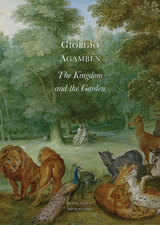 The Kingdom and the Garden
Giorgio Agamben
Seagull Books, 2020 In a tour-de-force reinterpretation of the Christian tradition, Agamben shows that the Garden of Eden has always served as a symbol for humanity’s true nature.
What happened to paradise after Adam and Eve were expelled? The question may sound like a theological quibble, or even a joke, but in The Kingdom and the Garden, Giorgio Agamben uses it as a starting point for an investigation of human nature and the prospects for political transformation. In a tour-de-force reinterpretation of the Christian tradition, Agamben shows that the Garden of Eden has always served as a symbol of humanity’s true nature. Where earlier theologians viewed the expulsion as temporary, Augustine’s doctrine of original sin makes it permanent, reimagining humanity as the paradoxical creature that has been completely alienated from its own nature. From this perspective, there can be no return to paradise, only the hope for the messianic kingdom. Yet there have always been thinkers who rebelled against this idea, and Agamben highlights two major examples. The first is the early medieval philosopher John Scotus Eriugena, who argued for a radical unity of humanity with all living things. The second is Dante, whose vision of the earthly paradise points towards the possibility of genuine human happiness in this world. In place of the messianic kingdom, which has provided the model for modern revolutionary movements, Agamben contends that we should place our hopes for political change in a return to our origins, by reclaiming the earthly paradise.
Kingdom at Any Cost: Right-Wing Visions of Apocalypse in America
Johnnie Chamberlin
Parkhurst Brothers, Inc., 2009 Director Michael Wilson and producer Natalie Zimmerman, in their documentary film Silhouette City, have dramatically captured the religious right's concerted effort to form a theocracy in America, with an aim to spread control worldwide. This insightful book, Kingdom at Any Cost, includes valuable interviews and writings not covered in the film, but further revealing the impact of the ominous religious movement. It serves as a powerful resource: a handbook for studying the film and a reader for examining America's contemporary Christian extremes.
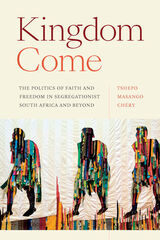 Kingdom Come: The Politics of Faith and Freedom in Segregationist South Africa and Beyond
Tshepo Masango Chéry
Duke University Press, 2023 In Kingdom Come, Tshepo Masango Chéry charts a new genealogy of early twentieth-century Black Christian activists who challenged racism in South Africa before the solidification of apartheid by using faith as a strategy against global racism. Masango Chéry traces this Black freedom struggle and the ways that South African church leaders defied colonial domination by creating, in solidarity with Black Christians worldwide, Black-controlled religious institutions that were geared toward their liberation. She demonstrates how Black Christians positioned the church as a site of political resistance and centered specifically African visions of freedom in their organizing. Drawing on archival research spanning South Africa, Zimbabwe, Kenya, the United Kingdom, and the United States, Masango Chéry tells a global story of the twentieth century that illuminates the formations of racial identity, state control, and religious belief. Masango Chéry’s recentering of South Africa in the history of worldwide Black liberation changes understandings of spiritual and intellectual routes of dissemination throughout the diaspora.
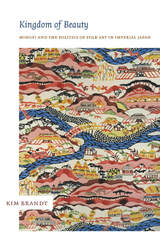 Kingdom of Beauty: Mingei and the Politics of Folk Art in Imperial Japan
Kim Brandt
Duke University Press, 2007 A Study of the Weatherhead East Asian Institute, Columbia University
Kingdom of Beauty shows that the discovery of mingei (folk art) by Japanese intellectuals in the 1920s and 1930s was central to the complex process by which Japan became both a modern nation and an imperial world power. Kim Brandt’s account of the mingei movement locates its origins in colonial Korea, where middle-class Japanese artists and collectors discovered that imperialism offered them special opportunities to amass art objects and gain social, cultural, and even political influence. Later, mingei enthusiasts worked with (and against) other groups—such as state officials, fascist ideologues, rival folk art organizations, local artisans, newspaper and magazine editors, and department store managers—to promote their own vision of beautiful prosperity for Japan, Asia, and indeed the world. In tracing the history of mingei activism, Brandt considers not only Yanagi Muneyoshi, Hamada Shōji, Kawai Kanjirō, and other well-known leaders of the folk art movement but also the often overlooked networks of provincial intellectuals, craftspeople, marketers, and shoppers who were just as important to its success. The result of their collective efforts, she makes clear, was the transformation of a once-obscure category of pre-industrial rural artifacts into an icon of modern national style.
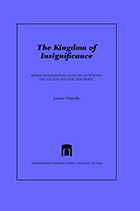 The Kingdom of Insignificance: Miron Bialoszewski and the Quotidian, the Queer, and the Traumatic
Joanna Nizynska
Northwestern University Press, 2012 In one of the first scholarly book in English on Miron Białoszewski (1922–1983), Joanna Niżyńska illuminates the elusive prose of one of the most compelling and challenging postwar Polish writers. Niżyńska’s study, exemplary in its use of theoretical concepts, introduces English-language readers to a preeminent voice of Polish literature. Niżyńska explores how a fusion of seemingly irreconcilable qualities, such as the traumatic and the everyday, imbues Białoszewski’s writing with its idiosyncratic appeal.
Białoszewski’s A Memoir of the Warsaw Uprising (1977, revised 1991) describes the Poles’ heroic struggle to liberate Warsaw from Nazi occupation in 1944 as harrowing yet ordinary. His later prose represents everyday life permeated by traces of the traumatic. Niżyńska closely examines the topic of autobiography and homosexuality, showing how Białoszewski discloses his homosexuality but, paradoxically, renders it inconspicuous by hiding it in plain sight.
 The Kingdom of Pylos: Warrior-Princes of Mycenaean Greece
Sharon R. Stocker
J. Paul Getty Trust, The, 2025 Presenting archaeological objects from the rich tombs of warrior-princes and the best-preserved Bronze Age palace on the Greek mainland, this volume features the latest discoveries from the dynamic world of Mycenaean Messenia.
Ancient Pylos has long captivated travelers, archaeologists, and historians familiar with Homer’s Iliad and Odyssey and his account of King Nestor, the prudent elder counselor in the Trojan War. Excavations begun in 1939 unearthed the storied Palace of Nestor in Messenia, an epicenter of Mycenaean civilization.
The Kingdom of Pylos features spectacular arts and crafts, many recently excavated at sites across Messenia, including goldwork of unparalleled artistry, masterfully carved sealstones, weapons, and wall paintings. Essays by international scholars examine the latest discoveries, including the Linear B tablets—the earliest written form of the Greek language—which document the political, religious, and economic organization of the prosperous Pylian realm. New research and cutting-edge science cast light on the 2015 find of the grave of the Griffin Warrior, an extraordinary, intact burial that held thousands of artifacts, including the celebrated Pylos Combat Agate, perhaps the finest work of art from the prehistoric Aegean. With over 300 illustrations, this is the first major publication in English to reconstruct the society of Pylos and settlements in its orbit during the Late Bronze Age (1700–1070 BCE).
This volume is published to accompany an exhibition on view at the Archaeological Museum of Messenia in Kalamata from February 15 to April 27, 2025, the J. Paul Getty Museum at the Getty Villa from June 25, 2025, to January 12, 2026, and the Hellenic National Archaeological Museum in Athens from March 1 to June 30, 2026.
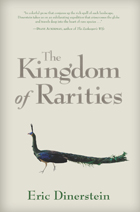 The Kingdom of Rarities
Eric Dinerstein
Island Press, 2014 When you look out your window, why are you so much more likely to see a robin or a sparrow than a Kirtland's warbler or a California condor? Why are some animals naturally rare and others so abundant? The quest to find and study seldom-seen jaguars and flamboyant Andean cocks-of-the-rock is as alluring to naturalists as it is vitally important to science. From the Himalayan slopes of Bhutan to the most isolated mountain ranges of New Guinea, The Kingdom of Rarities takes us to some of the least-traveled places on the planet to catch a glimpse of these unique animals and many others. As he shares stories of these species, Eric Dinerstein gives readers a deep appreciation of their ecological importance and the urgency of protecting all types of life — the uncommon and abundant alike.
An eye-opening tour of the rare and exotic, The Kingdom of Rarities offers us a new understanding of the natural world, one that places rarity at the center of conservation biology. Looking at real-time threats to biodiversity, from climate change to habitat fragmentation, and drawing on his long and distinguished scientific career, Dinerstein offers readers fresh insights into fascinating questions about the science of rarity and unforgettable experiences from the field.
The Kingdom of Rus'
Christian Raffensperger
Arc Humanities Press, 2017 As scholarship continues to expand the idea of medieval Europe beyond "the West," the Rus' remain the final frontier relegated to the European periphery. The Kingdom of Rus' challenges the perception of Rus' as an eastern "other" – advancing the idea of the Rus' as a kingdom deeply integrated with medieval Europe, through an innovative analysis of medieval titles. Examining a wide range of medieval sources, this book exposes the common practice in scholarship of referring to Rusian rulers as princes as a relic of early modern attempts to diminish the Rus'. Not only was Rus' part and parcel of medieval Europe, but in the eleventh and twelfth centuries Rus' was the largest kingdom in Christendom.
 The Kingdom of the Poor: My Journey Home
Edited by Katie Seigenthaler and Amy Frogge
Vanderbilt University Press, 2024 As Charles Strobel, beloved Nashville priest and champion of the unhoused, reached the end of his life in 2023, he began to contemplate the last message he wanted to leave his family, friends, and community. With the help of his niece, Katie Seigenthaler, and his colleague, Amy Frogge, Strobel began to dictate The Kingdom of the Poor. He wrote, “Mark Twain, the great American folk hero and writer, has said, ‘The two most important days of your life are the day you are born and the day you find out why.’ The following pages help to explain why I was born.”
The “why” of Charlie Strobel’s life, which was devoted to helping those without support systems and homes to call their own, was a simple belief that we are all poor and we are all worthy of love.
The Kingdom of the Poor is the story of the people and experiences that led him to this understanding and inspired him to live his life accordingly.
 The Kingdom of the Poor: My Journey Home
Edited by Katie Seigenthaler and Amy Frogge
Vanderbilt University Press, 2024 As Charles Strobel, beloved Nashville priest and champion of the unhoused, reached the end of his life in 2023, he began to contemplate the last message he wanted to leave his family, friends, and community. With the help of his niece, Katie Seigenthaler, and his colleague, Amy Frogge, Strobel began to dictate The Kingdom of the Poor. He wrote, “Mark Twain, the great American folk hero and writer, has said, ‘The two most important days of your life are the day you are born and the day you find out why.’ The following pages help to explain why I was born.”
The “why” of Charlie Strobel’s life, which was devoted to helping those without support systems and homes to call their own, was a simple belief that we are all poor and we are all worthy of love.
The Kingdom of the Poor is the story of the people and experiences that led him to this understanding and inspired him to live his life accordingly.
 Kingdom on the Mississippi Revisited: NAUVOO IN MORMON HISTORY
Edited by Roger D. Launius and John E. Hallwas
University of Illinois Press, 1996 "A significant collection . . . that provides a depth and breadth
of understanding reflective of the latest and best in Mormon history."
-- Paul M. Edwards, author of Our Legacy of Faith: A Brief History
of the RLDS
Who were the Nauvoo Mormons? Were they Jacksonian Americans or did they
embody some other weltanschaung? Why did this tiny Illinois town
become such a protracted battleground for the Mormons and non-Mormons
in the region? And what is the larger meaning of the Nauvoo experience
for the various inheritors of the legacy of Joseph Smith, Jr.?
Kingdom on the Mississippi Revisited includes fourteen thoughtful
explanations that represent the most insightful and imaginative work on
Mormon Nauvoo published in the last thirty years. The range of topics
includes the Nauvoo Legion, the Mormon press, the political kingdom of
God, the opposition of non-Mormons, the martyrdom of Joseph Smith, and
the meaning of Nauvoo for Mormons. The introduction provides a critique
of Nauvoo scholarship, and a closing bibliographical essay analyzes the
historical literature on the Mormon experience at Nauvoo.
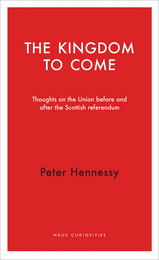 The Kingdom to Come: Thoughts on the Union before and after the Scottish Independence Referendum
Peter Hennessy
Haus Publishing, 2015 Despite the “No” vote in the Scottish Independence Referendum of September 2014, the issue of potential Scottish secession from the United Kingdom has likely only just begun. The Kingdom to Come is the first book-length look at the consequences and implications of this momentous event.
Peter Hennessy discusses the run-up to the Scottish Independence Referendum and its immediate aftermath, as well as the constitutional issues the referendum opened for the entire United Kingdom. This book includes Hennessy’s personal impressions of recent questioning of the Acts of Union that created Great Britain and describes when he, as the top expert on Britain’s unwritten constitution, became an important voice in what might happen next. The Kingdom to Come also offers a valuable examination of the possible agenda for remaking the constitution in both the medium and long term.
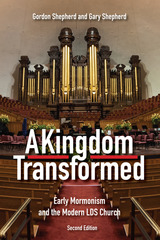 A Kingdom Transformed: Early Mormonism and the Modern LDS Church, New Edition
Gordon Shepherd and Gary Shepherd
University of Utah Press, 2015 To survive in an often disapproving external social world, the LDS Church has made many adaptive changes in belief, practice, and organization over time. Gordon and Gary Shepherd identify and elucidate these changes through statistical analysis of the rhetoric from General Conference proceedings in their book. The first edition of A Kingdom Transformed, published in 1984, covered the years 1830 to 1979. This new edition revises this earlier work and adds to it by examining the subsequent thirty years of LDS church rhetoric revealing what new trends have emerged and what old ones have continued. It retains the summary and analysis of data from the first 150 years of LDS Church history, but every chapter, including the narrative history of early Mormonism, has been thoroughly rewritten with updated theoretical and empirical support from contemporary research sources.
The first edition showed how early twentieth century LDS leaders were fairly liberal in mainstreaming church doctrines and social teaching, but by mid-twentieth century, as the church became more stable, accepted, and successful, church authorities reversed several earlier modifications and began emphasizing a stricter, more conservative theology that coincided with an increasingly conservative political orientation. The new book adds current issues of concern, such as the role of women in the church and international growth versus member retention. It also introduces a new conceptual framework for interpreting findings.
Kingdoms Come
Rowan Ireland
University of Pittsburgh Press, 1991 As scholars continue to explore the political implications of grass roots religions around the world, Kingdoms Come examines the three main popular religions in Brazil—folk Catholicism, Protestant Pentecostalism, and Afro-Brazilian spiritism—to trace the contrasting patterns of acceptance or rejection of political paradigms within these three groups. In spite of these differences, Ireland's close analysis of these movements leads him to the conclusion that all three embrace traditions that foster a deepening of Brazil's nascent democracy.
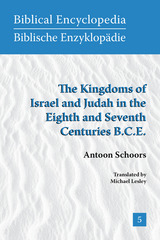 The Kingdoms of Israel and Judah in the Eighth and Seventh Centuries B.C.E.
Antoon Schoors
SBL Press, 2013 The period of Assyrian domination over Israel and Judah (ca. 750–650 B.C.E.) can be reconstructed with reasonable accuracy. For example, both biblical and extrabiblical records indicate that the northern kingdom (Israel) came to an end in 722 with the fall of Samaria, while several decades later Jerusalem, capital of the southern kingdom (Judah), narrowly escaped being taken by Sennacherib. The first half of the seventh century was dominated by Manasseh in Judah, who not only served his overlords the Assyrians but also practiced a bloody form of despotism. With regard to biblical literature, the eighth century was the period of Israel’s first great literary prophets: Amos, Hosea, Isaiah, and Micah. Other important texts, such as the Book of the Covenant, the early stories about the kings, the early forms of the patriarchal narratives in Genesis, and collections of proverbs, were either created or underwent profound editorial shaping during this time. This volume surveys the history of this formative period and presents a critical study of the biblical literature that originated within this historical context, as well as theological conclusions that readers may draw from these texts.
Kingdoms of the Savanna
Jan Vansina
University of Wisconsin Press "This signal contribution to African history and the writing of history more generally has emerged from the scholarship of one who is ranked by many as among the foremost of the contemporary historians of sub-Saharan Africa." —The American Historical Review
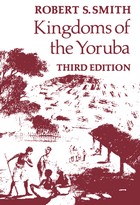 Kingdoms Of The Yoruba
Robert S. Smith
University of Wisconsin Press, 1988 This third edition of what has been described as “this minor classic” has been extensively revised to take account of advances in Nigerian historiography.
The twenty million Yorubas are one of the largest and most important groups of people on the African continent. Historically they were organized in a series of autonomous kingdoms and their past is richly recorded in oral tradition and archaeology. From the fifteenth century onwards there are descriptions by visitors and from the nineteenth century there are abundant official reports from administrators and missionaries.
Yoruba sculpture in stone, metal, ivory, and wood is famous. Less well-known are the elaborate and carefully designed constitutional forms which were evolved in the separate kingdoms, the methods of warfare and diplomacy, the oral literature, and the religion based on the worship of a “high god” surrounded by a pantheon of more accessible deities. Many of these aspects are shown in the drawings and photographs which have been used—for the first time—to illustrate this distinguished work.
 Kingly Crown
Solomon ibn Gabirol
University of Notre Dame Press, 2003 Solomon ibn Gabirol (1021-1058) of Spain was a Jewish philosopher and moralist who is perhaps best known for the beautiful forty-stanza poem Keter Malkhut (The Kingly Crown). Hailed by scholars as one of the most important classics of Hebrew literature, The Kingly Crown employs the metaphor of a king in his palace to describe the relationship between humanity and God. This medieval poem is full of vivid imagery and scriptural references. Within its many layers of meaning, readers will find not only an extended prayer and meditation, but also signs of the neoplatonic philosophy that formed the foundation of Gabirol's cosmology and theology.
The University of Notre Dame Press is pleased to bring back in print Bernard Lewis's lyrical translation of The Kingly Crown. This new edition includes Lewis's extensive notes and introduction as well as a new introduction, notes, and detailed philosophical commentary by Andrew L. Gluck. Gluck's meticulous correction of errors in the Hebrew text make this the most accurate version ever published with an English translation. Facing page Hebrew verse and English translation, as well as a new bibliographical section about the poet and poem, add to the utility and value of this wonderful book.
General readers will delight in The Kingly Crown's lucid text and scholars will discover a wealth of previously unavailable notes and historical information.
ANDREW L. GLUCK is a vocational and economic consultant in New York and a former member of the department of philosophy at Hofstra University.
BERNARD LEWIS is the Cleveland E. Dodge Professor of Near Eastern Studies and Professor Emeritus at Princeton University. He is the author of numerous books on Middle Eastern history.
"The Kingly Crown, one of the gems of Sephardic liturgy for the High Holidays, is the jewel in the crown of Solomon ibn Gabirol's religious poetry. Bernard Lewis's elegant and lively translation reflects the poetic beauty and grandeur of the Hebrew original as does no other translation I know. Andrew Gluck combines Bernard Lewis's peerless translation with a meticulous scholarly edition of the Hebrew text, adding his own introduction and commentary. He offers a comprehensive survey of the medieval philosophical and mystical environment that constituted the backdrop of Ibn Gabirol's philosophy and religious poetry. This volume is a substantial contribution to the understanding and appreciation of he Kingly Crown." --Henry Toledano, Hofstra University
"The Kingly Crown is one of the most important classics of Hebrew literature and the translation by Bernard Lewis has gained great acclaim since its original publication. Andrew Gluck's new materials add a great deal of richness to the book. His introduction and notes provide fresh, original insights into the text and illuminate the work of Solomon ibn Gabirol." --Menahem Schmelzer, Jewish Theological Seminary
"This edition of The Kingly Crown,featuring Bernard Lewis's translation and Andrew Gluck's intoduction and commentary, is a superb piece of work. It would be difficult to find a more literate translator than Lewis, and Gluck's contributions are both knowledgeable and eminently readable." --David B. Burrell, C.S.C., University of Notre Dame
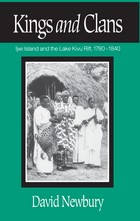 Kings And Clans: Ijwi Island And The Lake Kivu Rift, 1780-1840
David Newbury
University of Wisconsin Press, 1992 By reconstructing the history of kings and clans in the Kivu Rift Valley (on the border of today's Rwanda and Zaire) at a time of critical social change, David Newbury enlarges our understanding of social process and the growth of state power in Africa. In the early nineteenth century, many factors contributed to the creation of new social relations in the Lake Kivu region—ecological change, population movement, the expansion of the Rwandan state from the east, the rise of new political units to the west, and the movement of many population groups and their ritual forms through the area. Newbury looks in particular at the role of clans in the establishment of a new kingdom on Ijwi Island in Lake Kivu.
Drawing on detailed ethnographic observations of the social and ritual organizations of Ijwi society, an extensive body of oral data, and evidence from written sources, Newbury shows that the clans of Ijwi were not static formations, nor did the establishment of a royal family on the island emerge from military conquest and internal social breakdown. Instead, clan identities changed over time, and these changes actually facilitated the creation of kingship on Ijwi. Through a detailed examination of succession struggles, of local factors influencing the outcome of such struggles, and of specific clan participation in public rituals that legitimize royalty, Newbury’s study illustrates the importance of clan identities in both the creation of state power and its reproduction over time.
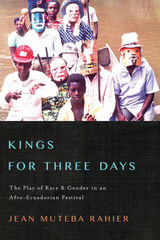 Kings for Three Days: The Play of Race and Gender in an Afro-Ecuadorian Festival
Jean Muteba Rahier
University of Illinois Press, 2013 With its rich mix of cultures, European influences, colonial tensions, and migration from bordering nations, Ecuador has long drawn the interest of ethnographers, historians, and political scientists. In this book, Jean Muteba Rahier delivers a highly detailed, thought-provoking examination of the racial, sexual, and social complexities of Afro-Ecuadorian culture, as revealed through the annual Festival of the Kings. During the Festival, the people of various villages and towns of Esmeraldas--Ecuador's province most associated with blackness--engage in celebratory and parodic portrayals, often donning masks, cross-dressing, and disguising themselves as blacks, indigenous people, and whites, in an obvious critique of local, provincial, and national white, white-mestizo, and light-mulatto elites. Rahier shows that this festival, as performed in different locations, reveals each time a specific location's perspective on the larger struggles over identity, class, and gender relations in the racial-spacial order of Esmeraldas, and of the Ecuadorian nation in general.
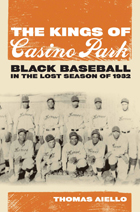 The Kings of Casino Park: Black Baseball in the Lost Season of 1932
Thomas Aiello
University of Alabama Press, 2011 In the 1930s, Monroe, Louisiana, was a town of twenty-six thousand in the northeastern corner of the state, an area described by the New Orleans Item as the “lynch law center of Louisiana.” race relations were bad, and the Depression was pitiless for most, especially for the working class—a great many of whom had no work at all or seasonal work at best. Yet for a few years in the early 1930s, this unlikely spot was home to the Monarchs, a national-caliber Negro League baseball team. Crowds of black and white fans eagerly filled their segregated grandstand seats to see the players who would become the only World Series team Louisiana would ever generate, and the first from the American South. By 1932, the team had as good a claim to the national baseball championship of black America as any other. Partisans claim, with merit, that league officials awarded the National Championship to the Chicago American Giants in flagrant violation of the league’s own rules: times were hard and more people would pay to see a Chicago team than an outfit from the Louisiana back country. Black newspapers in the South rallied to support Monroe’s cause, railing against the league and the bias of black newspapers in the North, but the decision, unfair though it may have been, was also the only financially feasible option for the league’s besieged leadership, who were struggling to maintain a black baseball league in the midst of the Great Depression. Aiello addresses long-held misunderstandings and misinterpretations of the Monarchs’ 1932 season. He tells the almost-unknown story of the team—its time, its fortunes, its hometown—and positions black baseball in the context of American racial discrimination. He illuminates the culture-changing power of a baseball team and the importance of sport in cultural and social history.
Kings of Disaster: Dualism, Centralism and the Scapegoat King in Southeastern Sudan
Simon Simonse
Michigan State University Press, 2018 The long-awaited, revised, and illustrated edition of Simon Simonse’s study of the Rainmakers of the Nilotic Sudan marks a breakthrough in anthropological thinking on African political systems. Taking his inspiration from René Girard’s theory of consensual scapegoating, the author shows that the longstanding distinction of states and stateless societies as two fundamentally different political types does not hold. Centralized and segmentary systems only differ in the relative emphasis put on the victimary role of the king as compared with that of enemy. Kings of Disaster proposes an elegant and powerful solution to the vexed problem of regicide.
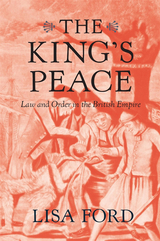 The King’s Peace: Law and Order in the British Empire
Lisa Ford
Harvard University Press, 2021 How the imposition of Crown rule across the British Empire during the Age of Revolution corroded the rights of British subjects and laid the foundations of the modern police state.
During the eighteenth and nineteenth centuries, the British Empire responded to numerous crises in its colonies, from North America to Jamaica, Bengal to New South Wales. This was the Age of Revolution, and the Crown, through colonial governors, tested an array of coercive peacekeeping methods in a desperate effort to maintain control. In the process these leaders transformed what it meant to be a British subject.
In the decades after the American Revolution, colonial legal regimes were transformed as the king’s representatives ruled new colonies with an increasingly heavy hand. These new autocratic regimes blurred the lines between the rule of law and the rule of the sword. Safeguards of liberty and justice, developed in the wake of the Glorious Revolution, were eroded while exacting obedience and imposing order became the focus of colonial governance. In the process, many constitutional principles of empire were subordinated to a single, overarching rule: where necessary, colonial law could diverge from metropolitan law. Within decades of the American Revolution, Lisa Ford shows, the rights claimed by American rebels became unthinkable in the British Empire. Some colonial subjects fought back but, in the empire, the real winner of the American Revolution was the king.
In tracing the dramatic growth of colonial executive power and the increasing deployment of arbitrary policing and military violence to maintain order, The King’s Peace provides important lessons on the relationship between peacekeeping, sovereignty, and political subjectivity—lessons that illuminate contemporary debates over the imbalance between liberty and security.
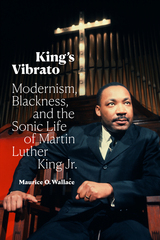 King's Vibrato: Modernism, Blackness, and the Sonic Life of Martin Luther King Jr.
Maurice O. Wallace
Duke University Press, 2022 In King’s Vibrato Maurice O. Wallace explores the sonic character of Martin Luther King Jr.’s voice and its power to move the world. Providing a cultural history and critical theory of the black modernist soundscapes that helped inform King’s vocal timbre, Wallace shows how the qualities of King’s voice depended on a mix of ecclesial architecture and acoustics, musical instrumentation and sound technology, audience and song. He examines the acoustical architectures of the African American churches where King spoke and the centrality of the pipe organ in these churches, offers a black feminist critique of the influence of gospel on King, and outlines how variations in natural environments and sound amplifications made each of King’s three deliveries of the “I Have a Dream” speech unique. By mapping the vocal timbre of one of the most important figures of black hope and protest in American history, Wallace presents King as the embodiment of the sound of modern black thought.
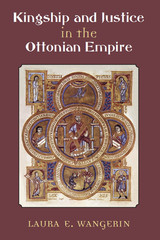 Kingship and Justice in the Ottonian Empire
Laura E. Wangerin
University of Michigan Press, 2019 Laura E. Wangerin challenges traditional views of the Ottonian Empire’s rulership. Drawing from a broad array of sources including royal and imperial diplomas, manuscript illuminations, and histories, Ottonian kingship and the administration of justice are investigated using traditional historical and comparative methodologies as well as through the application of innovative approaches such as modern systems theories. This study suggests that distinctive elements of the Ottonians’ governing apparatus, such as its decentralized structure, emphasis on the royal iter, and delegation of authority, were essential features of a highly developed political system. Kingship and Justice in the Ottonian Empire provides a welcome addition to English-language scholarship on the Ottonians, as well as to scholarship dealing with rulership and medieval legal studies.
Scholars have recognized the importance of ritual and symbolic behaviors in the Ottonian political sphere, while puzzling over the apparent lack of administrative organization, a contradiction between what we know about the Ottonians as successful rulers and their traditional characterization as rulers of a disorganized polity. Trying to account for the apparent disparity between their political and military achievements, cultural and artistic efflorescence, and relative dynastic stability, which seemingly accompanied a disinterest in writing law or creating a centralized hierarchical administration, is a tension that persists in the scholarship. This book argues that far from being accidental successes or employing primitive methods of governance, the Ottonians were shrewd rulers and administrators who exploited traditional methods of conflict resolution and delegated jurisdictional authority to keep control over their vast empire. Thus, one of the important things that this book aims to accomplish is to challenge our preconceived notions of what successful government looks like.
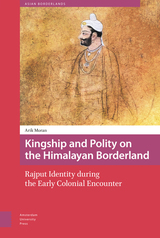 Kingship and Polity on the Himalayan Borderland: Rajput Identity during the Early Colonial Encounter
Arik Moran
Amsterdam University Press, 2019 Kingship and Polity on the Himalayan Borderland explores the modern transformation of state and society in the Indian Himalaya. Centred on three Rajput led-kingdoms during the transition to British rule (c. 1790-1840) and their interconnected histories, it demonstrates how border making practices engendered a modern reading of ‘tradition’ that informs communal identities to this day. Countering the common depiction of these states as all-male, caste-exclusive entities, it reveals the strong familial base of Rajput polity, wherein women — and regent queens in particular — played a key role alongside numerous non-Rajput groups. Drawing on rich archival records, rarely examined local histories, and nearly two decades of ethnographic research, it offers an alternative to the popular and scholarly discourses that developed with the rise of colonial knowledge. The analysis exposes the cardinal contribution of borderland spaces to the fabrication of group identities. This book will interest historians and anthropologists of South Asia and of the Himalaya, as well as scholars working on postcolonialism, gender, and historiography.
Kingship and Sacrifice: Ritual and Society in Ancient Hawaii
Valerio Valeri
University of Chicago Press, 1985 Valeri presents an overview of Hawaiian religious culture, in which hierarchies of social beings and their actions are mirrored by the cosmological hierarchy of the gods. As the sacrifice is performed, the worshipper is incorporated into the god of his class. Thus he draws on divine power to sustain the social order of which his action is a part, and in which his own place is determined by the degree of his resemblance to his god. The key to Hawaiian society—and a central focus for Valeri—is the complex and encompassing sacrificial ritual that is the responsibility of the king, for it displays in concrete actions all the concepts of pre-Western Hawaiian society. By interpreting and understanding this ritual cycle, Valeri contends, we can interpret all of Hawaiian religious culture.
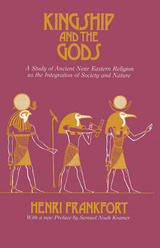 Kingship and the Gods: A Study of Ancient Near Eastern Religion as the Integration of Society and Nature
Henri Frankfort
University of Chicago Press, 1948 This classic study clearly establishes a fundamental difference in viewpoint between the peoples of ancient Egypt and Mesopotamia. By examining the forms of kingship which evolved in the two countries, Frankfort discovered that beneath resemblances fostered by similar cultural growth and geographical location lay differences based partly upon the natural conditions under which each society developed. The river flood which annually renewed life in the Nile Valley gave Egyptians a cheerful confidence in the permanence of established things and faith in life after death. Their Mesopotamian contemporaries, however, viewed anxiously the harsh, hostile workings of nature.
Frank's superb work, first published in 1948 and now supplemented with a preface by Samuel Noah Kramer, demonstrates how the Egyptian and Mesopotamian attitudes toward nature related to their concept of kingship. In both countries the people regarded the king as their mediator with the gods, but in Mesopotamia the king was only the foremost citizen, while in Egypt the ruler was a divine descendant of the gods and the earthly representative of the God Horus.
 The Kinks: Songs of the Semi-Detached
Mark Doyle
Reaktion Books, 2020 Of all the great British rock bands to emerge from the 1960s, none had a stronger sense of place than the Kinks. Often described as the archetypal English band, they were above all a quintessentially working-class band with a deep attachment to London, particularly the patch of suburban North London where most of the members grew up. In this illuminating study, Mark Doyle examines the relationship between the Kinks and their city, from their early songs of teenage rebellion to their later album-length works of social criticism, providing a unique perspective on the way in which the band responded to the shifting nature of working-class life. Along the way, he finds fascinating and sometimes surprising connections with figures as diverse as Edmund Burke, John Clare, Charles Dickens, and the Covent Garden Community Association. More than just a book about the Kinks, this is a book about a city, a nation, and a social class undergoing a series of profound, sometimes troubling changes—and about a group of young men who found a way to describe, lament, and occasionally even celebrate those changes through song.
 The Kinky Renaissance
Edited by Gillian Knoll and Joseph Gamble
Arizona Center for Medieval and Renaissance Studies, 2024 A provocative essay collection that theorizes the Renaissance through the lens of kink.
The Kinky Renaissance is a groundbreaking collection of essays that explore kink as a theoretical analytic, a historical formation, and an aesthetic mode. The essays in this work expand the sexual archive and its lexicon by introducing new vocabularies to familiar sexual scenes in early modern literature and culture and by bringing lesser-known scenes to bear on the study of sexuality in the period. Providing a capacious theory of sexuality and historical precedents for contemporary kinky practices, The Kinky Renaissance explores the erotic potential of early modern literature and pauses over various kinks nestled between and beside them. The collection boldly argues for a broader concept of a kinky Renaissance—one which reorients the terms of both the history of sexuality and queer theory more broadly.
 Kinshasa in Transition: Women's Education, Employment, and Fertility
David Shapiro and B. Oleko Tambashe
University of Chicago Press, 2003 After decades of tremendous growth, Kinshasa-capital of the Democratic Republic of the Congo-is now the second-largest urban area in sub-Saharan Africa. And as the city has grown-from around 300,000 people in the mid-1950s to more than five million today-it has experienced seismic social, economic, and demographic changes.
In this book, David Shapiro and B. Oleko Tambashe trace the impact of these changes on the lives of women, and their findings add dramatically to the field's limited knowledge of African demographic trends. They find that fertility has declined significantly in Kinshasa since the 1970s, and that women's increasing access to secondary education has played a key role in this decline. Better access to education has also given women greater access to employment opportunities. And by examining the impact of such factors as economic well-being and household demographic composition on the schooling of children, Shapiro and Tambashe reveal how one generation's fertility affects the next generation's education.
This book will be a valuable guide for anyone who wants to understand the complex and ongoing social, demographic, economic, and developmental changes in contemporary sub-Saharan Africa.
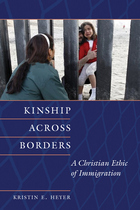 Kinship Across Borders: A Christian Ethic of Immigration
Kristin E. Heyer
Georgetown University Press, 2015 The failure of current immigration policies in the United States has resulted in dire consequences: a significant increase in border deaths, a proliferation of smuggling networks, prolonged family separation, inhumane raids, a patchwork of local ordinances criminalizing activities of immigrants and those who harbor them, and the creation of an underclass—none of which are appropriate or just outcomes for those holding Christian commitments. Kinship Across Borders analyzes contemporary US immigration in the context of fundamental Christian beliefs about the human person, sin, family life, and global solidarity. Kristin Heyer expertly demonstrates how current US immigration policies reflect harmful neoliberal economic priorities, and why immigration cannot be reduced to security or legal issues alone. Rather, she explains that immigration involves a broad array of economic issues, trade policies, concerns of cultural tolerance and criminal justice, and, at root, an understanding of the human person. In Kinship Across Borders, Heyer has developed a Christian immigration ethic—grounded in scriptural, anthropological, and social teachings and rooted in the experiences of undocumented migrants—that calls society to promote concrete practices and policies reflecting justice and solidarity.
Kinship and Casework
Hope Jensen Leichter
Russell Sage Foundation, 1967 Reaffirms the importance of the larger kinship network through analysis of extensive data on the clients of one social agency. The authors show that the less kinship-oriented caseworkers often attempt to change clients' kin relationships in the direction of less involvement, raising questions about value differences in therapeutic practice. The book also points to the importance of concepts, such as those dealing with family kinship, that will enable the caseworker to appraise the client's social relationships more fully. The authors emphasize the benefits to be derived from a closer liaison between social work and social science.
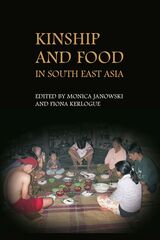 Kinship and Food in South East Asia
Edited by Monica Janowski and Fiona G. Kerlogue
National University of Singapore Press, 2007 Food has an important role in establishing and structuring social and kin relations in Southeast Asian societies. For this reason, there is growing interest within anthropology in understanding how the production, processing and consumption of food is one important basis for the construction of ties of relatedness, so-called ‘kin’ ties. These are often based at least partly on ‘shared substance’. In this respect, a book on Southeast Asia is especially interesting in understanding kinship since the region is generally taken to include a number of distinct types of kin structure. This book offers eleven chapters covering a range of societies in different parts of Southeast Asia. It examines ways in which food is used to think about and bring about ties between generations and within generations – including between the living and the dead – in particular through the feeding relationship. Significant parallels emerge between the societies covered: in the role of rice especially; in gender complementarity in relation to different foods; in the belief that food and drink carry fertility, ‘blessings’ or ‘life force’ from ascending to descending generations; and in the use of the feeding relationship to generate hierarchy. These parallels suggest that there may be underlying similarities in cosmology between these widely varying societies. A significant contribution to the ongoing debate on the nature of kinship in Southeast Asia, this volume will be useful as a textbook for courses within anthropology, including on the anthropology of food and environmental anthropology.
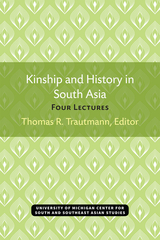 Kinship and History in South Asia: Four Lectures
Thomas R. Trautmann, Editor
University of Michigan Press, 1974 Kinship and History in South Asia presents four papers given at a small conference of kinship studies scholars, “Kinship and History in South Asia,” at the University of Toronto in 1973. They draw upon one another and show several common concerns, particularly the theoretical importance of Dravidian systems. Yey they remain specialist studies, each within its own raison d’être. Brendra E. F. Beck contributes a study of the “kinship nucleus” in Tamil folklore, Levi-Straussian both in its treatment of kinship and of mythology. George L. Hart’s study of woman and the sacred in the ancient Tamil literature of the Sangam attempts to elucidate this literature in its own terms, and also to relate it to Beck’s “kinship nucleus.” Thomas R. Trautmann presents a critical examination of the evidence for cross-cousin marriage in early North India, attempting to determine historical fact from literary materials. Narendra K. Wagle offers a survey of the kinship categories to be found in the Pali Jatakas.
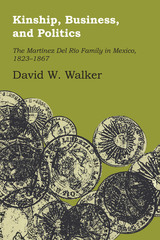 Kinship, Business, and Politics: The Martinez Del Rio Family in Mexico, 1823-1867
By David W. Walker
University of Texas Press, 1987 The Martínez del Río family was a vigorous contestant in the highly politicized economy of early national Mexico. David Walker’s case study of its successes and failures provides a unique insider’s view of the trials and tribulations of doing business in a hostile environment. The family’s ordeal in Mexico—a series of personal dislocations and traumas—mirrored the painful contractions of an old society reluctantly giving birth to a new nation. Using previously undiscovered primary source materials (including the private correspondence and business records of the family, public notary documents, transcripts of judicial proceedings, and the archives of Mexico’s Ministry of Foreign Relations and the British Foreign Office), Walker employs family history to analyze problems relating more generally to the development of state and society in newly independent Mexico. The processes of socioeconomic formation in Mexico differed from those of Western Europe and the United States; accordingly, entrepreneurial activity had markedly contrasting implications for economic development and class formation. In the downwardly spiraling economy of nineteenth-century Mexico, economic activity was a zero-sum game. No new wealth was being created; most sectors remained stagnant and unproductive. To make their fortunes, empresarios, the Mexican capitalists, could not rely on income generated from authentic economic growth. Instead, they exploited the arbitrary acts of the interventionist Mexican state, which proscribed the free movement of factors within the marketplace. Speculation in the public debt took the place of more substantive undertakings. Coercive state power was diverted to create artificial environments in which otherwise inefficient and unproductive enterprises could flourish. But however well the empresarios might imitate the outward forms of industrial capitalism, they could not unlock the productive capacity of the Mexican economy. Instead, they and their allies and rivals engaged in destructive struggles to manipulate the state for personal gain, to the detriment of class interests, economic growth, and political stability.
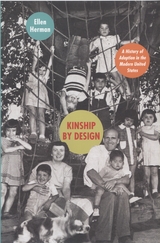 Kinship by Design: A History of Adoption in the Modern United States
Ellen Herman
University of Chicago Press, 2008 What constitutes a family? Tracing the dramatic evolution of Americans’ answer to this question over the past century, Kinship by Design provides the fullest account to date of modern adoption’s history.
Beginning in the early 1900s, when children were still transferred between households by a variety of unregulated private arrangements, Ellen Herman details efforts by the U.S. Children’s Bureau and the Child Welfare League of America to establish adoption standards in law and practice. She goes on to trace Americans’ shifting ideas about matching children with physically or intellectually similar parents, revealing how research in developmental science and technology shaped adoption as it navigated the nature-nurture debate.
Concluding with an insightful analysis of the revolution that ushered in special needs, transracial, and international adoptions, Kinship by Design ultimately situates the practice as both a different way to make a family and a universal story about love, loss, identity, and belonging. In doing so, this volume provides a new vantage point from which to view twentieth-century America, revealing as much about social welfare, statecraft, and science as it does about childhood, family, and private life.
 Kinship Diplomacy in the Ancient World
Christopher P. Jones
Harvard University Press, 1999 Heroic figures such as Heracles, Perseus, and Jason were seen by the Greeks not as mythical figures but as real people who in a bygone age traveled the world, settled new lands, and left descendants who, generation after generation, could trace their ancestry back to the "time of heroes." From the Homeric age to Byzantium, peoples and nations sharing the same fictive ancestry appealed to their kinship when forging military alliances, settling disputes, or negotiating trade connections. In this intriguing study of the political uses of perceived kinship, Christopher Jones gives us an unparalleled view of mythic belief in action.
Throughout the centuries of Greek preeminence, the Roman Republic and Empire, and into the early Christian era, examples of kinship diplomacy abound. Ancient historians report, for instance, that when the forces of Alexander the Great reached what is now southern Pakistan they encountered a people called the Siboi, whom they judged to be descendants of Heracles. Since Alexander was himself a descendant of the same hero, the invading Macedonians and the Siboi were clearly kinsmen and so parted in peace. Examining the very origins of ancient diplomacy, and kinship as one of its basic constituents, Kinship Diplomacy addresses fundamental questions about communal and national identity and sheds new light on the force of Greek mythic traditions.
Kinship in Bali
Hildred Geertz and Clifford Geertz
University of Chicago Press, 1978 This work constitutes the first book-length examination of Balinese kinship in English and an important theoretical analysis of the central ethnographic concept of "kinship system." Hildred and Clifford Geertz's findings challenge the prevailing anthropological notion of a kinship system as an autonomous set of institutionalized social relationships. Their research in Bali suggests that kinship cannot be studied in isolation but must be perceived as a symbolic subsystem governed by ideas and beliefs unique to each culture.
Kinship, Language, and Prehistory: Per Hage and the Renaissance in Kinship Studies
Doug Jones
University of Utah Press, 2011 A chronicle of the renaissance in kinship studies, these seventeen articles pay tribute to Per Hage, one of the founding fathers of the movement and long-time faculty member of the Department of Anthropology at the University of Utah. With mathematician Frank Harary, Hage pioneered the use of graph theoretical models in anthropology, a systematic analysis of diverse cognitive, social, and cultural components that provides a common technical vocabulary for the entire field. Anthropological studies have benefited from quantitative evaluation, particularly kinship, which is newly appreciated for its application to all social sciences. The chapters of this book, some original works by the contributors and some unpublished Hage material, attest to the importance of the continual study of kinship.
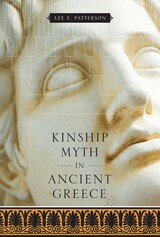 Kinship Myth in Ancient Greece
By Lee E. Patterson
University of Texas Press, 2010 In ancient Greece, interstate relations, such as in the formation of alliances, calls for assistance, exchanges of citizenship, and territorial conquest, were often grounded in mythical kinship. In these cases, the common ancestor was most often a legendary figure from whom both communities claimed descent. In this detailed study, Lee E. Patterson elevates the current state of research on kinship myth to a consideration of the role it plays in the construction of political and cultural identity. He draws examples both from the literary and epigraphical records and shows the fundamental difference between the two. He also expands his study into the question of Greek credulity—how much of these founding myths did they actually believe, and how much was just a useful fiction for diplomatic relations? Of central importance is the authority the Greeks gave to myth, whether to elaborate narratives or to a simple acknowledgment of an ancestor. Most Greeks could readily accept ties of interstate kinship even when local origin narratives could not be reconciled smoothly or when myths used to explain the link between communities were only "discovered" upon the actual occasion of diplomacy, because such claims had been given authority in the collective memory of the Greeks.
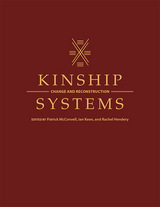 Kinship Systems: Change and Reconstruction
Patrick McConvell
University of Utah Press, 2013 Kinship systems are the glue that holds social groups together. This volume presents a novel approach to understanding the genesis of these systems and how and why they change. The editors bring together experts from the disciplines of anthropology and linguistics to explore kinship in societies around the world and to reconstruct kinship in ancient times. Kinship Systems presents evidence of renewed activity and advances in this field in recent years which will contribute to the current interdisciplinary focus on the evolution of society. While all continents are touched on in this book, there is special emphasis on Australian indigenous societies, which have been a source of fascination in kinship studies.
One key argument in the book is that linguistic evidence for reconstruction of ancient terminologies can provide strong independent evidence to complement anthropologists’ notions of structural kinship transformations and ground them in actual historical and geographical contexts. There are principles that we all share, no matter what kind of society we live in, and these provide a common “language” for anthropology and linguistics. With this language we can accurately compare how family relations are organized in different societies, as well as how we talk about such relations. Because this concept has often been denied by the trajectories in anthropology over the last few decades, Kinship Systems represents a reassertion of, and advances on, classical kinship theory and methods. Innovations and interdisciplinary methods are described by the originators of the new approaches and other leading regional experts.
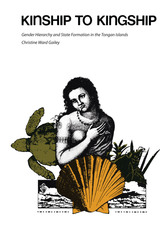 Kinship to Kingship: Gender Hierarchy and State Formation in the Tongan Islands
By Christine Ward Gailey
University of Texas Press, 1987 Have women always been subordinated? If not, why and how did women’s subordination develop? Kinship to Kingship was the first book to examine in detail how and why gender relations become skewed when classes and the state emerge in a society. Using a Marxist-feminist approach, Christine Ward Gailey analyzes women’s status in one society over three hundred years, from a period when kinship relations organized property, work, distribution, consumption, and reproduction to a class-based state society. Although this study focuses on one group of islands, Tonga, in the South Pacific, the author discusses processes that can be seen through the neocolonial world. This ethnohistorical study argues that evolution from a kin-based society to one organized along class lines necessarily entails the subordination of women. And the opposite is also held to be true: state and class formation cannot be understood without analyzing gender and the status of women. Of interest to students of anthropology, political science, sociology, and women’s studies, this work is a major contribution to social history.
 Kinship to Mastery: Biophilia In Human Evolution And Development
Stephen R. Kellert
Island Press, 1997 Kinship to Mastery is a fascinating and accessible exploration of the notion of biophilia -- the idea that humans, having evolved with the rest of creation, possess a biologically based attraction to nature and exhibit an innate affinity for life and lifelike processes. Stephen R. Kellert sets forth the idea that people exhibit different expressions of biophilia in different contexts, and demonstrates how our quality of life in the largest sense is dependent upon the richness of our connections with nature. While the natural world provides us with material necessities -- food, clothing, medicine, clean air, pure water -- it just as importantly plays a key role in other aspects of our lives, including intellectual capacity, emotional bonding, aesthetic attraction, creativity, imagination, and even the recognition of a just and purposeful existence. As Kellert explains, each expression of biophilia shows how our physical, material, intellectual, emotional, and spiritual well-being is to a great extent dependent on our relationships with the natural world that surrounds us. Kinship to Mastery is a thought-provoking examination of a concept that, while not widely known, has a significant and direct effect on the lives of people everywhere. Because the full expression of biophilia is integral to our overall health, our ongoing destruction of the environment could have far more serious consequences than many people think. In a readable and compelling style, Kellert describes and explains the concept of biophilia, and demonstrates to a general audience the wide-ranging implications of environmental degradation. Kinship to Mastery continues the exploration of biophilia begun with Edward O. Wilson's landmark book Biophilia (Harvard University Press, 1984) and followed by The Biophilia Hypothesis (Island Press, 1993), co-edited by Wilson and Kellert, which brought together some of the most creative scientists of our time to explore Wilson's theory in depth.
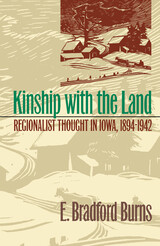 Kinship with the Land: Regionalist Thought In Iowa, 1894-1942
E. Bradford Burns
University of Iowa Press, 1996 Pioneers moving into Iowa in the nineteenth century created a distinctly rural culture: family, farm, church, and school were its dominant institutions. After decades of settlement, however, several lively and perceptive generations interpreted their political, economic, and cultural environment—their Iowa—much more imaginatively; they offered such abundant insight, understanding, meaning, and mission that they mentally and spiritually recreates Iowa. In Kinship with the Land historian Brad Burns celebrates this intense period of intellectual and cultural development. Through their novels, short stories, poems, essays, drawings, and paintings, Iowa's regionalists expressed a rich abstraction of people and place. They conferred meaning, imparted understanding, defined the soil and the folk, conveyed a sense of place. Grant Wood in his overalls—the quintessential symbol of sophisticated talent and rural values—clearly represented regionalism's spiritual solidarity with the land and the people who worked it. Burns lets these Iowans speak for themselves, then interprets their distinctive voices to present a cogent case for and an understanding of the rural in an overwhelming urban America. Kinship with the Land emphasizes the importance of Iowa's intellectual and cultural history and reaffirms the state's identity at the very moment that standardization threatened to eradicate it. By endowing Iowa with vibrant, independent art and literature, regionalists made refreshing sense of their environment. Readers from every state will appreciate their generous legacy.
 Kinyras: The Divine Lyre
John Curtis Franklin
Harvard University Press, 2015 Kinyras, in Greco-Roman sources, is the central culture-hero of early Cyprus: legendary king, metallurge, Agamemnon’s (faithless) ally, Aphrodite’s priest, father of Myrrha and Adonis, rival of Apollo, ancestor of the Paphian priest-kings, and much more. Kinyras increased in depth and complexity with the demonstration in 1968 that Kinnaru—the divinized temple-lyre—was venerated at Ugarit, an important Late Bronze Age city just opposite Cyprus on the Syrian coast. John Curtis Franklin seeks to harmonize Kinyras as a mythological symbol of pre-Greek Cyprus with what is known of ritual music and deified instruments in the Bronze Age Near East, using evidence going back to early Mesopotamia. Franklin addresses issues of ethnicity and identity; migration and colonization, especially the Aegean diaspora to Cyprus, Cilicia, and Philistia in the Early Iron Age; cultural interface of Hellenic, Eteocypriot, and Levantine groups on Cyprus; early Greek poetics, epic memory, and myth-making; performance traditions and music archaeology; royal ideology and ritual poetics; and a host of specific philological and historical issues arising from the collation of classical and Near Eastern sources.
Kinyras includes a vital background study of divinized balang-harps in Mesopotamia by Wolfgang Heimpel. This paperback edition contains minor corrections, while retaining the foldout maps of the original hardback edition as spreads, alongside illustrations and artwork by Glynnis Fawkes.
Kiosk Literature of Silver Age Spain: Modernity and Mass Culture
Edited by Jeffrey Zamostny and Susan Larson
Intellect Books, 2017 The so-called “Silver Age” of Spain ran from 1898 to the rise of Franco in 1939 and was characterized by intense urbanization, widespread class struggle and mobility, and a boom in mass culture. This book offers a close look at one manifestation of that mass culture: weekly collections of short, often pocket-sized books sold in urban kiosks at low prices. These series published a wide range of literature in a variety of genres and formats, but their role as disseminators of erotic and anarchist fiction led them to be censored by the Franco dictatorship. This book offers the most detailed scholarly analysis of kiosk literature to date, examining the kiosk phenomenon through the lens of contemporary interdisciplinary theories of urban space, visuality, celebrity, gender and sexuality, and the digital humanities.
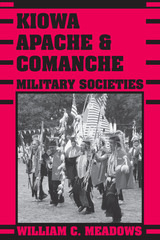 Kiowa, Apache, and Comanche Military Societies: Enduring Veterans, 1800 to the Present
By William C. Meadows
University of Texas Press, 1999 A CHOICE Outstanding Academic Book For many Plains Indians, being a warrior and veteran has long been the traditional pathway to male honor and status. Men and boys formed military societies to celebrate victories in war, to perform community service, and to prepare young men for their role as warriors and hunters. By preserving cultural forms contained in song, dance, ritual, language, kinship, economics, naming, and other semireligious ceremonies, these societies have played an important role in maintaining Plains Indian culture from the pre-reservation era until today. In this book, Williams C. Meadows presents an in-depth ethnohistorical survey of Kiowa, Apache, and Comanche military societies, drawn from extensive interviews with tribal elders and military society members, unpublished archival sources, and linguistic data. He examines their structure, functions, rituals, and martial symbols, showing how they fit within larger tribal organizations. And he explores how military societies, like powwows, have become a distinct public format for cultural and ethnic continuity.
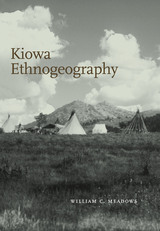 Kiowa Ethnogeography
By William C. Meadows
University of Texas Press, 2008 Examining the place names, geographical knowledge, and cultural associations of the Kiowa from the earliest recorded sources to the present, Kiowa Ethnogeography is the most in-depth study of its kind in the realm of Plains Indian tribal analysis. Linking geography to political and social changes, William Meadows applies a chronological approach that demonstrates a cultural evolution within the Kiowa community. Preserved in both linguistic and cartographic forms, the concepts of place, homeland, intertribal sharing of land, religious practice, and other aspects of Kiowa life are clarified in detail. Native religious relationships to land (termed "geosacred" by the author) are carefully documented as well. Meadows also provides analysis of the only known extant Kiowa map of Black Goose, its unique pictographic place labels, and its relationship to reservation-era land policies. Additional coverage of rivers, lakes, and military forts makes this a remarkably comprehensive and illuminating guide.
Kipling
Jad Adams
Haus Publishing, 2005 Joseph Rudyard Kipling was the greatest writer in a Britain that ruled the largest empire the world has known, yet he was always a controversial figure, as deeply hated as he was loved. This accessible biography aims at an understanding of the man behind the image and gives an explanation of his enduring popularity
 Kipling and Conrad: The Colonial Fiction
John A. McClure
Harvard University Press, 1981 In this skillfully written essay on the fiction of imperialism, John McClure portrays the colonialist—his nature, aspirations, and frustrations—as perceived by Kipling and Conrad. And he relates these perceptions to the world and experiences of both writers.
In the stories of the 1880s, McClure shows, Kipling focuses with bitter sympathy on “the white man’s burden” in India, the strains produced by early exile, ignorance of India, and the interference of liberal bureaucrats in the business of rule. Later works, including The Jungle Book and Kim, present proposals for imperial education intended to eliminate these strains.
Conrad also explores the strains of colonial life, but from a perspective antithetical in many respects to Kipling’s. In the Lingard novels and Lord Jim he challenges the imperial image of the colonialist as a wise, benign father protecting his savage dependents. The pessimistic assessment of the colonialist’s motives and achievements developed in these works finds full expression, McClure suggests, in Heart of Darkness. And in Nostromo Conrad explores the human dimensions of large-scale capitalist intervention in the colonial world, finding once again no cause to celebrate imperialism.
John McClure’s interpretation is forceful but ever attuned to the complexities of the texts discussed.
Kirby Smith's Confederacy: The TransMississippi South, 1863-1865
Robert L. Kerby
University of Alabama Press, 1991 Cut off, but not surrendered—one region’s desperate stand in the twilight of the Confederacy.
With the surrender of Vicksburg in July 1863, the Confederacy’s TransMississippi Department, which included Texas, Arkansas, Missouri, western Louisiana, and Indian Territory, was cut off from the remainder of the South. Robert Kerby’s insightful volume, originally published in 1972, “has gone far toward filling one of the most conspicuous gaps in the literature on the Confederacy,” according to The Journal of Southern History.
Kerby investigates the many factors that led to the Department’s disintegrating and offers a case study of a segment of American society that consumed itself by surrendering everything, including its principles and ideals, in pursuit of an unattainable military victory.
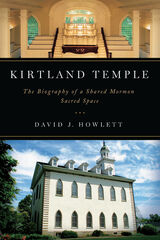 Kirtland Temple: The Biography of a Shared Mormon Sacred Space
David J. Howlett
University of Illinois Press, 2014 The only temple completed by Mormonism's founder, Joseph Smith Jr., the Kirtland Temple in Kirtland, Ohio, receives 30,000 Mormon pilgrims every year. Though the site is sacred to all Mormons, the temple’s religious significance and the space itself are contested by rival Mormon dominations: its owner, the relatively liberal Community of Christ, and the larger Church of Jesus Christ of Latter-day Saints.
David J. Howlett sets the biography of Kirtland Temple against the backdrop of religious rivalry. The two sides have long contested the temple's ownership, purpose, and significance in both the courts and Mormon literature. Yet members of each denomination have occasionally cooperated to establish periods of co-worship, host joint tours, and create friendships. Howlett uses the temple to build a model for understanding what he calls parallel pilgrimage--the set of dynamics of disagreement and alliance by religious rivals at a shared sacred site. At the same time, he illuminates social and intellectual changes in the two main branches of Mormonism since the 1830s, providing a much-needed history of the lesser-known Community of Christ.
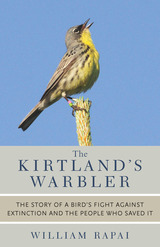 The Kirtland's Warbler: The Story of a Bird's Fight Against Extinction and the People Who Saved It
William Rapai
University of Michigan Press, 2013 At a time when the world is seeing its species rapidly go extinct, the Kirtland's warbler is not just a survivor, it's a rock star. The Kirtland's warbler is the rarest warbler species in North America and will always be rare because of its persnickety nesting preferences. But when the total population fell below 400 birds in the 1970s and 1980s---driven largely by a loss of habitat and the introduction of a parasite---a small group of dedicated biologists, researchers, and volunteers vowed to save the Kirtland's warbler despite long odds. This is the story of the warbler's survival and gradual recovery, the people and policies that kept it from extinction, and the ongoing challenges that may again jeopardize the bird's future. In The Kirtland's Warbler, William Rapai explores the bird's fascinating natural history as well as the complex and evolving relationships between the warbler, its environment, its human protectors, and state and federal policies that today threaten to eradicate decades of work done on the species' behalf. Beginning with an account of the warbler's discovery in the mid-nineteenth century and ornithologists' desperate hunt for information on the elusive new species, the book goes on to examine the dramatic events that quickly led to the warbler's precarious status and its eventual emergence as a lightning rod for controversy. The Kirtland's warbler is often described as a "bird of fire" for its preference for nesting in areas cleared by wildfire. But it also warrants the name for the passion it ignites in humans. Both tragic and uplifting, the story of this intriguing bird is a stirring example of how strong leadership, vision, commitment, sustained effort, and cooperation can come together to protect our natural world.
 THE KIRWAN YEARS
Chris Perry
Ohio State University Press, 2006 Starting under President Edward Jennings and continuing under Gordon Gee, The Ohio State University began a long-term drive to match the school’s ranking in football with a commensurate reputation for academic excellence. Initiatives to admit better-prepared students, attract and retain world-class faculty, and build highly rated programs were promising, but the university needed a broad strategy to coordinate these and other initiatives into a focused approach.
Enter President William “Brit” Kirwan, who understood this need perfectly and whose major legacy became widely known as the Academic Plan. This document became and remains the centerpiece of Ohio State’s agenda, with budget and other priorities emanating from its six strategies and 14 initiatives.
Continuing the Ohio State tradition of chronicling the university’s history through the work of its past presidents, The Kirwan Years recounts the Academic Plan’s creation, acceptance, and initial implementation, along with many major university accomplishments from mid-1998 through mid-2002. It also details the university’s ongoing, uphill struggle to maximize state financial support and its success in private and other fundraising. It provides a compelling look at the complexity permeating today’s research universities. And yes, it describes the firing of football coach John Cooper and the hiring of Jim Tressel.
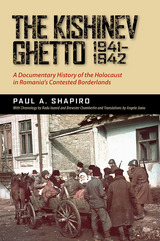 The Kishinev Ghetto, 1941–1942: A Documentary History of the Holocaust in Romania's Contested Borderlands
Paul A. Shapiro with chronology by Radu Ioanid and Brewster Chamberlin and translations by Angela Jianu
University of Alabama Press, 2015 The Kishinev Ghetto, 1941–1942 offers a wealth of primary sources and insightful commentary about the little-known slaughter of Jewish residents of Kishinev (Chisinau) under the military occupation by Romania under Marshal Ion Antonescu, a Hitler ally.
The Kishinev Ghetto, 1941–1942 sheds new light on the little-known historical events surrounding the creation, administration, and liquidation of the Kishinev (Chisinau) ghetto during the first months following the Axis attack on the Soviet Union (Operation Barbarossa) in late June 1941. Mass killings during the combined Romanian-German drive toward Kishinev in Bessarabia, after a year of Soviet rule in this Romanian border province, were followed by the shooting of thousands of Jews on the streets of the city during the first days of reestablished Romanian administration. Survivors were driven into a ghetto, persecuted, and liquidated by year’s end. The Kishinev Ghetto, 1941–1942 is the first major study of these events.
Often overshadowed by events in Germany and Poland, the history of the Holocaust in Romania, including what took place in Bessarabia (corresponding in large part with the territory of the modern Republic of Moldova), was obscured during decades of communist rule by denial and by policies that blocked access to wartime documentation. This book is the result of a lengthy research project that began with Paul A. Shapiro’s missions to Romania for the United States Holocaust Memorial Museum to negotiate access to these documents.
The volume includes:
· A preface describing the origin of the project in the immediate aftermath of the Ceausescu regime in Romania.
· A hundred-page study setting the events of the book within the historical context of Eastern European antisemitism, Romanian-Soviet conflict over control of Bessarabia, and Romania’s alliance with Nazi Germany.
· A thoughtfully curated collection of archival documents linked to the study.
· A chronology of related historical events.
· Twenty-one black and white photographs and a map of the ghetto.
Students and scholars of Holocaust history, Judaic studies, twentieth-century Eastern European history, Romania, Moldova, and historical Bessarabia will want to own this important, revealing volume.
Published in association with the United States Holocaust Memorial Museum
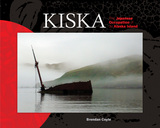 Kiska: The Japanese Occupation of an Alaska Island
Brendan Coyle
University of Alaska Press, 2014 Alaska’s windswept Aleutian Island chain arcs for over a thousand miles toward Asia from the Alaska Peninsula. In this remote and hostile archipelago is Kiska Island, an uninhabited sub-arctic speck in the tempestuous Bering Sea. Few have the opportunity even to visit this island, but in June of 1942 Japanese troops seized Kiska and neighboring Attu in the only occupation of North American territory since the War of 1812.
The bastion of Japan’s possessions in Alaska, Kiska was soon fortified with 7,500 enemy troops, their equipment, and a labyrinth of tunnels. For thirteen months Japanese troops withstood constant bombardment from American forces while retaining a tenuous hold on the island. Finally forced to abandon their position, the Japanese occupiers evacuated without their equipment and personal effects, leaving behind a trail of artifacts.
Brendan Coyle spent fifty-one days on the island searching out the tunnels, the equipment, and the objects, all frozen in time. Kiska brings together the images Coyle amassed during his exploration and his archival research. Accompanying explanations put the images in historical perspective, opening a window on a little-known battlefield and shining a rare light on a shadowy occupation.
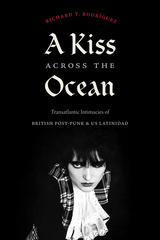 A Kiss across the Ocean: Transatlantic Intimacies of British Post-Punk and US Latinidad
Richard T. Rodríguez
Duke University Press, 2022 In A Kiss across the Ocean Richard T. Rodríguez examines the relationship between British post-punk musicians and their Latinx audiences in the United States since the 1980s. Melding memoir with cultural criticism, Rodríguez spotlights a host of influential bands and performers including Siouxsie and the Banshees, Adam Ant, Bauhaus, Soft Cell, Frankie Goes to Hollywood, and Pet Shop Boys. He recounts these bands’ importance for him and other Latinx kids and discusses their frequent identification with these bands’ glamorous performance of difference. Whether it was Siouxsie Sioux drawing inspiration from Latinx contemporaries and cultural practices or how Soft Cell singer Marc Almond’s lyrics were attuned to the vibrancy of queer Latinidad, Rodríguez shows how Latinx culture helped shape British post-punk. He traces the fandom networks that link these groups across space and time to illuminate how popular music establishes and facilitates intimate relations across the Atlantic. In so doing, he demonstrates how the music and styles that have come to define the 1980s hold significant sway over younger generations equally enthused by their matchlessly pleasurable and political reverberations.
 Kiss and Tell: Surveying Sex in the Twentieth Century
Julia A. Ericksen
Harvard University Press, 2001 Learning the details of others' sex lives is the most enticing of guilty pleasures. We measure our own practices against the "normalcy" that sex surveys seek to capture. Special interest groups use or attack survey findings (such as the claim that 10% of Americans are gay) for their own ends. Indeed, we all have some stake in these surveys, be it self-justification, recrimination, or curiosity--and this testifies to their significance in our culture.
Kiss and Tell chronicles the history of sex surveys in the United States over a century of changing social and sexual mores. Julia Ericksen and Sally Steffen reveal that the survey questions asked, more than the answers elicited, expose and shape the popular image of appropriate sexuality. We can learn as much about the history and practice of sexuality by looking at surveyors' changing concerns as we can by reading the results of their surveys. The authors show how surveys have reflected societal anxieties about adolescent development, teen sex and promiscuity, and AIDS, and have been employed in efforts to preserve marriage and to control women's sexuality.
Kiss and Tell is an important examination of the role of social science in shaping American sexual patterns. Revealing how surveys of sexual behavior help create the issues they purport merely to describe, it reminds us how malleable and imperfect our knowledge of sexual behavior is.
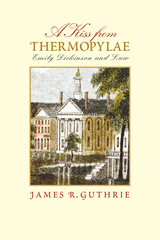 A Kiss from Thermopylae: Emily Dickinson and Law
James R. Guthrie
University of Massachusetts Press, 2015 Born into a family of attorneys, Dickinson absorbed law at home. She employed legal terms and concepts regularly in her writings, and her metaphors grounded in law derive much of their expressive power from a comparatively sophisticated lay knowledge of the various legal and political issues that were roiling nineteenth-century America. Dickinson displays interest in such areas as criminal law, contracts, equity, property, estate law, and bankruptcy. She also held in high regard the role of law in resolving disputes and maintaining civic order. Toward the end of her life, Dickinson cited the Spartans’ defense at Thermopylae as an object lesson demonstrating why societies should uphold the rule of law. Yet Dickinson was also capable of criticizing, even satirizing, law and lawyers. Her poetic personae inhabit various legal roles including those of jurymen, judges, and attorneys, and some poems simulate courtroom contests pitting the rights of individuals against the power of the state. She was keenly interested in legal matters pertaining to women, such as breach of promise, dower, and trusts. With her tone ranging from subservient to domineering, from reverential to ridiculing, Dickinson’s writings reflect an abiding concern with philosophic and political principles underpinning the law, as well as an identification with the plight of individuals who dared confront authority. A Kiss from Thermopylae reveals a new dimension of Dickinson’s writing and thinking, one indicating that she was thoroughly familiar with the legal community’s idiomatic language, actively engaged with contemporary political and ethical questions, and skilled at deploying a poetic register ranging from high romanticism to low humor.
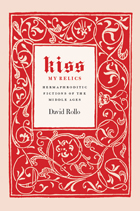 Kiss My Relics: Hermaphroditic Fictions of the Middle Ages
David Rollo
University of Chicago Press, 2011 Conservative thinkers of the early Middle Ages conceived of sensual gratification as a demonic snare contrived to debase the higher faculties of humanity, and they identified pagan writing as one of the primary conduits of decadence. Two aspects of the pagan legacy were treated with particular distrust: fiction, conceived as a devious contrivance that falsified God’s order; and rhetorical opulence, viewed as a vain extravagance. Writing that offered these dangerous allurements came to be known as “hermaphroditic” and, by the later Middle Ages, to be equated with homosexuality. At the margins of these developments, however, some authors began to validate fiction as a medium for truth and a source of legitimate enjoyment, while others began to explore and defend the pleasures of opulent rhetoric. Here David Rollo examines two such texts—Alain de Lille’s De planctu Naturae and Guillaume de Lorris and Jean de Meun’s Roman de la Rose—arguing that their authors, in acknowledging the liberating potential of their irregular written orientations, brought about a nuanced reappraisal of homosexuality. Rollo concludes with a consideration of the influence of the latter on Chaucer’s Pardoner’s Prologue and Tale.
 The Kiss of Death: Contagion, Contamination, and Folklore
Andrea Kitta
Utah State University Press, 2019 Disease is a social issue, not just a medical issue. Using examples of specific legends and rumors, The Kiss of Death explores the beliefs and practices that permeate notions of contagion and contamination. Author Andrea Kitta offers new insight into the nature of vernacular conceptions of health and sickness and how medical and scientific institutions can use cultural literacy to better meet their communities’ needs.
Using ethnographic, media, and narrative analysis, this book explores the vernacular explanatory models used in decisions concerning contagion to better understand the real fears, risks, concerns, and doubts of the public. Kitta explores immigration and patient zero, zombies and vampires, Slender Man, HPV, and the kiss of death legend, as well as systematic racism, homophobia, and misogyny in North American culture, to examine the nature of contagion and contamination.
Conversations about health and risk cannot take place without considering positionality and intersectionality. In The Kiss of Death, Kitta isolates areas that require better communication and greater cultural sensitivity in the handling of infectious disease, public health, and other health-related disciplines and industries.
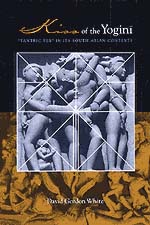 Kiss of the Yogini: "Tantric Sex" in its South Asian Contexts
David Gordon White
University of Chicago Press, 2003 For those who wonder what relation actual Tantric practices bear to the "Tantric sex" currently being marketed so successfully in the West, David Gordon White has a simple answer: there is none. Sweeping away centuries of misunderstandings and misrepresentations, White returns to original texts, images, and ritual practices to reconstruct the history of South Asian Tantra from the medieval period to the present day.
Kiss of the Yogini focuses on what White identifies as the sole truly distinctive feature of South Asian Tantra: sexualized ritual practices, especially as expressed in the medieval Kaula rites. Such practices centered on the exchange of powerful, transformative sexual fluids between male practitioners and wild female bird and animal spirits known as Yoginis. It was only by "drinking" the sexual fluids of the Yoginis that men could enter the family of the supreme godhead and thereby obtain supernatural powers and transform themselves into gods. By focusing on sexual rituals, White resituates South Asian Tantra, in its precolonial form, at the center of religious, social, and political life, arguing that Tantra was the mainstream, and that in many ways it continues to influence contemporary Hinduism, even if reformist misunderstandings relegate it to a marginal position.
Kiss of the Yogini contains White's own translations from over a dozen Tantras that have never before been translated into any European language. It will prove to be the definitive work for persons seeking to understand Tantra and the crucial role it has played in South Asian history, society, culture, and religion.
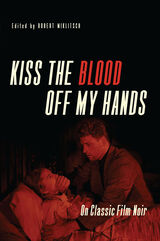 Kiss the Blood Off My Hands: On Classic Film Noir
Edited by Robert Miklitsch
University of Illinois Press, 2014 Consider the usual view of film noir: endless rainy nights populated by down-at-the-heel boxers, writers, and private eyes stumbling toward inescapable doom while stalked by crooked cops and cheating wives in a neon-lit urban jungle.
But a new generation of writers is pushing aside the fog of cigarette smoke surrounding classic noir scholarship. In Kiss the Blood Off My Hands: On Classic Film Noir, Robert Miklitsch curates a bold collection of essays that reassesses the genre's iconic style, history, and themes. Contributors analyze the oft-overlooked female detective and little-examined aspects of filmmaking like love songs and radio aesthetics, discuss the significance of the producer and women's pulp fiction, and investigate topics as disparate as Disney noir and the Fifties heist film, B-movie back projection and blacklisted British directors. At the same time the writers' collective reconsideration shows the impact of race and gender, history and sexuality, technology and transnationality on the genre.
As bracing as a stiff drink, Kiss the Blood Off My Hands writes the future of noir scholarship in lipstick and chalk lines for film fans and scholars alike.
Contributors: Krin Gabbard, Philippa Gates, Julie Grossman, Robert Miklitsch, Robert Murphy, Mark Osteen, Vivian Sobchack, Andrew Spicer, J. P. Telotte, and Neil Verma.
 Kissed By
Alexandra Chasin
University of Alabama Press, 2007 "Alexandra Chasin is a hugely brave writer. She dares to push the extremes of style, while daring to push the extremes of emotion" —Jonathan Safran Foer Alexandra Chasin’s remarkable stories employ forms as diverse as cryptograms (in "ELENA=AGAIN") and sentence diagrams (in "Toward a Grammar of Guilt") to display her interest in fiction as a form constituted by print on the page, every bit as much as poetry. In "They Come From Mars," the words are arrayed on the page like troops, embodying the xenophobic image of invading armies of immigrant and illegal aliens that animates the narrative. One story incorporates personal ads ("Lynette, Your Uniqueness"), another is organized alphabetically ("2 Alphabets"), while another leaves sentences unfinished ("Composer and I"). A number of stories take metafictional turns, calling attention to the process of writing itself. The last piece in the collection plays with genre distinctions, including an index of first lines and a general index. Set in New York, New England, Paris, and Morocco, these tales are narrated by men and women, old and young, gay, straight, and bisexual; one narrator is not a person at all, but a work of art. Each of these deft, playful, and sometimes anarchic fictions is different from the others, yet all are the unmistakable offspring of the same wildly inventive imagination.
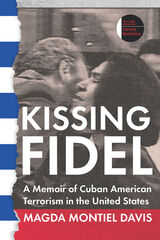 Kissing Fidel: A Memoir of Cuban American Terrorism in the United States
Magda Montiel Davis
University of Iowa Press, 2020 What does it mean to be instantly transformed into the most hated person in your community? After meeting Fidel Castro at a Havana reception in 1994, Cuban-born Magda Montiel Davis, founder of one of the largest immigration law firms in South Florida, soon found out. The reception—attended by hundreds of other Cuban émigrés—was videotaped for historical archives. In a seconds-long clip, Fidel pecks the traditional protocol kiss on Montiel Davis’s cheek as she thanks him for the social benefits conferred upon the Cuban people. The video, however, was mysteriously sold to U.S. reporters and aired incessantly throughout South Florida. Soon the encounter was an international cause célèbre. Life as she knew it was over for Montiel Davis and her family, including a father who worked with the CIA to topple Fidel, a nohablo-inglés mother who lived with the family, her five children, and her Jewish Brooklyn-born attorney husband. Kissing Fidel shares the sometimes dismal, sometimes comical realities of an ordinary citizen being thrown into a world of death threats, mob attacks, and terrorism.
Kissssss: A Miscellany
Steve Katz
University of Alabama Press, 2007 This collection—derived from many impulses but unified through one distinctive sensibility—contains passionate subversive acts of language, oblique takes on American life, outbursts of comic genius, long meditations on the cruelty of contemporary customs, and funny, disturbing glimpses of daily life. Reality is rendered pitilessly real, and fantasy bares its teeth. At once playful and devastatingly serious, the works in this collection employ a variety of forms—genres, anti-genres, fantasies, games—while highlighting the dangers and delights of contemporary life: Hollywood, tsunamis, war, the art world, AIDS, ambition, weapons of mass destruction, family values, perverse sexualities, urban violence, small change and big bucks, are all used to chum the waters of imagination and truth.
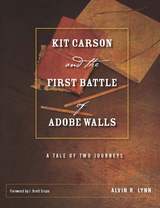 Kit Carson and the First Battle of Adobe Walls: A Tale of Two Journeys
Alvin R. Lynn
Texas Tech University Press, 2014 Following Kit Carson from Bascom to the Walls, one hundred years later
On a late November morning in 1864, Col. Kit Carson and his U.S. troops, under orders from the commander of the New Mexico Military Department, attacked Kiowa Chief Doh?san’s winter village in the Texas Panhandle. Warriors retaliated with stiff resistance as their women and children escaped. Fighting proceeded down the Canadian River to the abandoned trading post of Adobe Walls as hundreds more Kiowas and Comanches joined the battle. Nearing sunset, Carson’s troops burned Doh?san’s village, and although remarkably few lives were lost in the battle itself, the enduring consequences were hardly insignificant.
Well-known as an explorer, guide, and frontiersman, Carson’s involvement at the First Battle of Adobe Walls has been overlooked. Beginning his research in the 1990s, Alvin Lynn set out to fill that void when he located and walked the 200-mile-long wagon road from Fort Bascom to Adobe Walls and collected 1,800 metal artifacts from 15 historic camps, including the burned Kiowa village. Among the recovered artifacts were fired friction primers verifying the placement of howitzers at the battle site.
With nearly eighty battle site and artifact photographs taken by renowned photographer Wyman Meinzer, Kit Carson and the First Battle of Adobe Walls documents Carson’s military expedition from Fort Bascom to Adobe Walls and Lynn’s own journey more than a century later to discover what really happened.
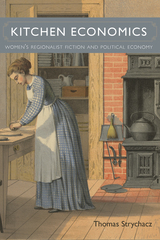 Kitchen Economics: Women’s Regionalist Fiction and Political Economy
Thomas Strychacz
University of Alabama Press, 2020 An analysis of how nineteenth-century women regional writers represent political economic thought
WINNER OF THE ELIZABETH AGEE PRIZE IN AMERICAN LITERATURE
Readers of late nineteenth-century female American authors are familiar with plots, characters, and households that make a virtue of economizing. Scholars often interpret these scenarios in terms of a mythos of parsimony, frequently accompanied by a sort of elegiac republicanism whereby self-sufficiency and autonomy are put to the service of the greater good—a counterworld to the actual economic conditions of the period.
In Kitchen Economics: Women’s Regionalist Fiction and Political Economy, Thomas Strychacz takes a new approach to the question of how female regionalist fictions represent “the economic” by situating them within traditions of classical political economic thought. Offering case studies of key works by Sarah Orne Jewett, Mary Wilkins Freeman, Harriet Beecher Stowe, Rose Terry Cooke, and Alice Dunbar-Nelson, this study focuses on three complex cultural fables—the island commonwealth, stadialism (or stage theory), and feeding the body politic—which found formal expression in political economic thought, made their way into endless public debates about the economic turmoil of the late nineteenth century, and informed female authors. These works represent counterparts, not counterworlds, to modernity; and their characteristic stance is captured in the complex trope of feminaeconomica.
This approach ultimately leads us to reconsider what we mean by the term “economic,” for the emphasis of contemporary neoclassical economics on economic agents given over to infinite wants and complete self-interest has caused the “sufficiency” and “common good” models of female regionalist authors to be misinterpreted and misvalued. These fictions are nowhere more pertinent to modernity than in their alliance with today’s important alternative economic discourses.
 Kitchen Literacy: How We Lost Knowledge of Where Food Comes from and Why We Need to Get It Back
Ann Vileisis
Island Press, 2008 Ask children where food comes from, and they’ll probably answer: “the supermarket.” Ask most adults, and their replies may not be much different. Where our foods are raised and what happens to them between farm and supermarket shelf have become mysteries. How did we become so disconnected from the sources of our breads, beef, cheeses, cereal, apples, and countless other foods that nourish us every day?
Ann Vileisis’s answer is a sensory-rich journey through the history of making dinner. Kitchen Literacy takes us from an eighteenth-century garden to today’s sleek supermarket aisles, and eventually to farmer’s markets that are now enjoying a resurgence. Vileisis chronicles profound changes in how American cooks have considered their foods over two centuries and delivers a powerful statement: what we don’t know could hurt us.
As the distance between farm and table grew, we went from knowing particular places and specific stories behind our foods’ origins to instead relying on advertisers’ claims. The woman who raised, plucked, and cooked her own chicken knew its entire life history while today most of us have no idea whether hormones were fed to our poultry. Industrialized eating is undeniably convenient, but it has also created health and environmental problems, including food-borne pathogens, toxic pesticides, and pollution from factory farms.
Though the hidden costs of modern meals can be high, Vileisis shows that greater understanding can lead consumers to healthier and more sustainable choices. Revealing how knowledge of our food has been lost and how it might now be regained, Kitchen Literacy promises to make us think differently about what we eat.
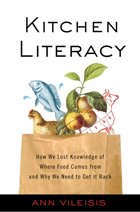 Kitchen Literacy: How We Lost Knowledge of Where Food Comes from and Why We Need to Get It Back
Ann Vileisis
Island Press, 2008 Ask children where food comes from, and they’ll probably answer: “the supermarket.” Ask most adults, and their replies may not be much different. Where our foods are raised and what happens to them between farm and supermarket shelf have become mysteries. How did we become so disconnected from the sources of our breads, beef, cheeses, cereal, apples, and countless other foods that nourish us every day?
Ann Vileisis’s answer is a sensory-rich journey through the history of making dinner. Kitchen Literacy takes us from an eighteenth-century garden to today’s sleek supermarket aisles, and eventually to farmer’s markets that are now enjoying a resurgence. Vileisis chronicles profound changes in how American cooks have considered their foods over two centuries and delivers a powerful statement: what we don’t know could hurt us.
As the distance between farm and table grew, we went from knowing particular places and specific stories behind our foods’ origins to instead relying on advertisers’ claims. The woman who raised, plucked, and cooked her own chicken knew its entire life history while today most of us have no idea whether hormones were fed to our poultry. Industrialized eating is undeniably convenient, but it has also created health and environmental problems, including food-borne pathogens, toxic pesticides, and pollution from factory farms.
Though the hidden costs of modern meals can be high, Vileisis shows that greater understanding can lead consumers to healthier and more sustainable choices. Revealing how knowledge of our food has been lost and how it might now be regained, Kitchen Literacy promises to make us think differently about what we eat.
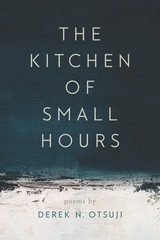 The Kitchen of Small Hours
Derek N. Otsuji
Southern Illinois University Press, 2021 Reimagining the elusive American dream
In The Kitchen of Small Hours, Derek N. Otsuji embraces the fragility and endurance of a family of immigrants from two prefectures in Japan: Kagoshima in the south and Okinawa, an island more than four hundred miles from the mainland. In these poems, five generations sing, save, scold, bury, and cook against the culture and history that emerged from the pineapple and sugar cane plantations of mid-nineteenth-century Hawaii, from the bomb-scapes and hatreds of World War II, and from the canning and tourism industry of the twentieth century. Otsuji writes of how his family used stories and rugged cheer to fill the spaces apart from the cane fields and the canning factory. Their recipes, rituals, celebrations, songs, dances, myths, and family stories passed from grandmother to father to son, who folds them into lyrics.
Here too are whispers, failures, and traceable absences: a face removed from photos, a love silenced to be acceptable, a dead firstborn housed in an urn. There are things that no one intended to give. Otsuji’s language hungers for them anyway. The haunting reunions between author and ancestor sink just as deep as roots and hold just as fast. The cooking pot, the family photo, the moon recur as images that feed and comfort. Lyrical and warm, Otsuji’s voice sounds out a sinew of words that make the remnants of heritage and home durable. In these poems each new generation seeks to reimagine for itself the elusive American Dream
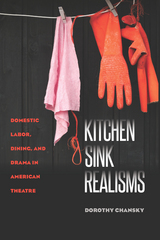 Kitchen Sink Realisms: Domestic Labor, Dining, and Drama in American Theatre
Dorothy Chansky
University of Iowa Press, 2015 From 1918’s Tickless Time through Waiting for Lefty, Death of a Salesman, A Streetcar Named Desire, A Raisin in the Sun, and The Prisoner of Second Avenue to 2005’s The Clean House, domestic labor has figured largely on American stages. No dramatic genre has done more than the one often dismissively dubbed “kitchen sink realism” to both support and contest the idea that the home is naturally women’s sphere. But there is more to the genre than even its supporters suggest.
In analyzing kitchen sink realisms, Dorothy Chansky reveals the ways that food preparation, domestic labor, dining, serving, entertaining, and cleanup saturate the lives of dramatic characters and situations even when they do not take center stage. Offering resistant readings that rely on close attention to the particular cultural and semiotic environments in which plays and their audiences operated, she sheds compelling light on the changing debates about women’s roles and the importance of their household labor across lines of class and race in the twentieth century.
The story begins just after World War I, as more households were electrified and fewer middle-class housewives could afford to hire maids. In the 1920s, popular mainstream plays staged the plight of women seeking escape from the daily grind; African American playwrights, meanwhile, argued that housework was the least of women’s worries. Plays of the 1930s recognized housework as work to a greater degree than ever before, while during the war years domestic labor was predictably recruited to the war effort—sometimes with gender-bending results. In the famously quiescent and anxious 1950s, critiques of domestic normalcy became common, and African American maids gained a complexity previously reserved for white leading ladies. These critiques proliferated with the re-emergence of feminism as a political movement from the 1960s on. After the turn of the century, the problems and comforts of domestic labor in black and white took center stage. In highlighting these shifts, Chansky brings the real home.
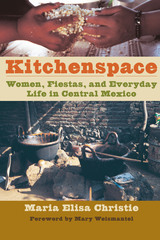 Kitchenspace: Women, Fiestas, and Everyday Life in Central Mexico
By Maria Elisa Christie
University of Texas Press, 2008 Throughout the world, the kitchen is the heart of family and community life. Yet, while everyone has a story to tell about their grandmother's kitchen, the myriad activities that go on in this usually female world are often devalued, and little scholarly attention has been paid to this crucial space in which family, gender, and community relations are forged and maintained. To give the kitchen the prominence and respect it merits, Maria Elisa Christie here offers a pioneering ethnography of kitchenspace in three central Mexican communities, Xochimilco, Ocotepec, and Tetecala. Christie coined the term "kitchenspace" to encompass both the inside kitchen area in which everyday meals for the family are made and the larger outside cooking area in which elaborate meals for community fiestas are prepared by many women working together. She explores how both kinds of meal preparation create bonds among family and community members. In particular, she shows how women's work in preparing food for fiestas gives women status in their communities and creates social networks of reciprocal obligation. In a culture rigidly stratified by gender, Christie concludes, kitchenspace gives women a source of power and a place in which to transmit the traditions and beliefs of older generations through quasi-sacramental food rites.
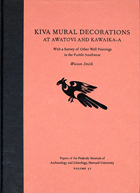 Kiva Mural Decorations at Awatovi and Kawaika-a: With a Survey of Other Wall Paintings in the Pueblo Southwest
Watson Smith
Harvard University Press, 2005 From 1935 to 1939, the Peabody Museum sponsored an archaeological expedition at the ancient Pueblo and early Spanish colonial site of Awatovi on the Hopi Reservation in Arizona. The multidisciplinary project attracted professional and avocational scholars from a wide range of disciplines. Former lawyer Watson Smith was, at the time, an enthusiastic amateur archaeologist. He joined the expedition as a volunteer during the 1936 season and became one of its most productive researchers, as well as one of the Southwest's foremost archaeological scholars.
In this classic volume of the Peabody Museum Papers series, first published in 1952, Smith reported on the remarkable painted murals found at Awatovi and other Puebloan sites in the underground ceremonial chambers known as kivas. Now reissued in a stunning facsimile edition, the volume includes color reproductions of the original serigraphs by Louie Ewing. Smith's groundbreaking work first brought to public and scholarly attention the sacred wall-painting tradition of the aboriginal American Southwest. The aesthetic power and symbolic imagery of this artistic tradition still fascinates today. Archaeologists, art historians, collectors, and artists alike will welcome the return of this long out-of-print classic.
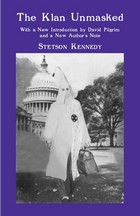 The Klan Unmasked: With a New Introduction by David Pilgrim and a New Author's Note
Stetson Kennedy
University of Alabama Press, 2011 The Klan Unmasked is a riveting exposé of one of the most daring undercover operations in American history. In the 1920s, journalist Stetson Kennedy infiltrated the Ku Klux Klan at the height of its power, risking his life to expose the group’s secrets, rituals, and violent agenda. With the precision of a spy and the pen of a poet, Kennedy documented the Klan’s inner workings and fed intelligence to law enforcement and even popular radio shows—turning public opinion against the hooded order. This book reads like a noir thriller, but its stakes are real and its impact profound. Kennedy’s fearless reporting helped dismantle one of the most dangerous hate groups in the country, making The Klan Unmasked not just a gripping narrative, but a landmark in anti-racist literature. It’s a testament to the power of truth, the necessity of resistance, and the enduring fight for justice. Whether you're drawn to undercover intrigue or passionate about civil rights, this classic delivers both. It’s not just history—it’s a call to action, wrapped in suspense and driven by moral clarity. Few books are this brave. Fewer still are this urgent. The Klan Unmasked is part of a three-book set that includes Southern Exposure and Jim Crow Guide to the U.S.A., all available from the University of Alabama Press.
 Klaus Fuchs, Atom Spy
Robert Chadwell Williams
Harvard University Press, 1987 The 1950 espionage case of Klaus Fuchs, who betrayed British and American atomic secrets to the Soviet Union, touched off a witch hunt in the United States that led to the capture of the Rosenbergs and many other alleged spies. The case fueled the fires of national concern over communism, Soviet espionage, internal subversion, and security in the nuclear age. Robert C. Williams has tenaciously retraced Fuchs's trail from Nazi Germany to Britain, Canada, Los Alamos, and finally to Dresden, where Fuchs now lives the life of a successful retired nuclear physicist. In his search Williams has not only uncovered Fuchs's personal story but has also established that his espionage was part of a much larger Soviet effort to penetrate and control British intelligence.
Klaus Fuchs had access to the most highly classified secrets of the wartime Manhattan Project. Cleared eight times by British security, and consequently accepted without investigation by the Americans, Fuchs worked in a hermetic world of security through secrecy—a world whose rules he publicly defended and privately betrayed. He played his role carefully for almost a decade, passing classified information to Soviet intelligence through a German communist espionage ring that operated under the very nose of the British government during and after the war. As part of the secret Anglo-American bomb project, he brought to Britain—and gave to Russia—technological know-how that helped both countries develop their own A-bombs.
This first full-length portrait of Klaus Fuchs and his case, based in part on newly available American and British archives on the subject, is an exciting find for general readers in the history of science, espionage, World War II, and the Cold War. It will also be of high professional interest to historians and physicists.
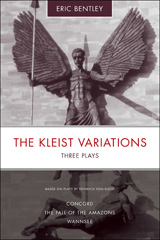 The Kleist Variations: Three Plays
Eric Bentley
Northwestern University Press, 2005 Winner of 2006 International Association of Theatre Critics Thalia Prize
Winner of 2006 Village Voice OBIE Awards Lifetime Achievement Award
In this collection, Eric Bentley presents Concord, a comedy adapted from Kleist's The Broken Jug;The Fall of the Amazons, a tragedy written in response to Kleist's Penthesilea; and Wannsee, a tragic-comedy which is Bentley's rendering of Kleist's Cathy of Heilbronn.
Bentley sets Concord in a courthouse during the early days of the Republic. Convened to discover who broke an irreplaceable jug symbolic of the chivalric age of Sir Walter Raleigh, Judge Adam's madcap court flounders in hilarious chaos induced by huge lies to cover comic lust.
Fall of the Amazons is the story of Achilles and the Amazon queen, Penthesilea. Through this pagan play, Bentley explores improbably love, which he exemplifies in the biblical story of Abraham and Isaac: "In seeming to be cruel to both father and son, God has enabled them to find, in total vulnerability, total love," a theme that also pervades Wannsee.
Bentley's Wannsee is a play of pageantry: emperors, counts, dueling knights, a young beauty of seemingly low birth, cherubs, and witches masked in loveliness. A fabulous love story ostensibly designed to dissuade Kleist from self-destruction, Wannsee demonstrates with a flourish that, though devils roam the earth, there are also angels.
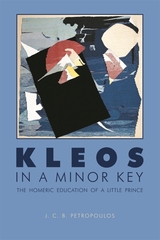 Kleos in a Minor Key: The Homeric Education of a Little Prince
J. C. B. Petropoulos
Harvard University Press, 2011 As scholars have remarked, the word kleos in the Iliad and the Odyssey alike refers to something more substantive and complex than “fame” or “glory.” Kleos distinctly supposes an oral narrative—principally an “oral history,” a “life story” or ultimately an “oral tradition.” When broken down into its twin constituents, “words” and “actions” or “deeds,” a hero’s kleos serves to define him as a fully gendered social being.
This book is a meditation on this concept as expressed and experienced in the adult society Telemachos find himself in. Kleos is the yardstick by which his psychological change was appreciated by Homer’s audiences. As this book shows through philological and interdisciplinary analysis, Prince Telemachos grows up in the course of the Telemachy and arguably even beyond (in book 24): his education, which is conceived largely as an apprenticeship on land and sea, admits him gradually if unevenly to a full-fledged adult kleos—a kleos that nonetheless necessarily remains minor in comparison to that of his father and other elders.
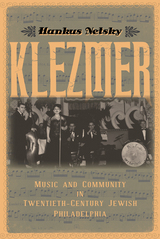 Klezmer: Music and Community in Twentieth-Century Jewish Philadelphia
Hankus Netsky
Temple University Press, 2017 Klezmer presents a lively and detailed overview of the folk musical tradition as practiced in Philadelphia's twentieth-century Jewish community. Through interviews, archival research, and recordings, Hankus Netsky constructs an ethnographic portrait of Philadelphia’s Jewish musicians, the environment they worked in, and the repertoire they performed at local Jewish lifestyle and communal celebrations.
Netsky defines what klezmer music is, how it helped define Jewish immigrant culture in Philadelphia, and how its current revival has changed klezmer’s meaning historically. Klezmer also addresses the place of musicians and celebratory music in Jewish society, the nature of klezmer culture, the tensions between sacred and secular in Jewish music, and the development of Philadelphia's distinctive “Russian Sher” medley, a unique and masterfully crafted composition.
Including a significant amount of musical transcriptions, Klezmer chronicles this special musical genre from its heyday in the immigrant era, through the mid-century period of its decline through its revitalization from the 1980s to today.
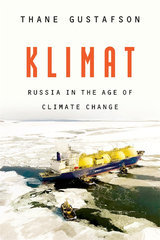 Klimat: Russia in the Age of Climate Change
Thane Gustafson
Harvard University Press, 2021 A discerning analysis of the future effects of climate change on Russia, the major power most dependent on the fossil fuel economy.
Russia will be one of the countries most affected by climate change. No major power is more economically dependent on the export of hydrocarbons; at the same time, two-thirds of Russia’s territory lies in the arctic north, where melting permafrost is already imposing growing damage. Climate change also brings drought and floods to Russia’s south, threatening the country’s agricultural exports.
Thane Gustafson predicts that, over the next thirty years, climate change will leave a dramatic imprint on Russia. The decline of fossil fuel use is already underway, and restrictions on hydrocarbons will only tighten, cutting fuel prices and slashing Russia’s export revenues. Yet Russia has no substitutes for oil and gas revenues. The country is unprepared for the worldwide transition to renewable energy, as Russian leaders continue to invest the national wealth in oil and gas while dismissing the promise of post-carbon technologies. Nor has the state made efforts to offset the direct damage that climate change will do inside the country. Optimists point to new opportunities—higher temperatures could increase agricultural yields, the melting of arctic ice may open year-round shipping lanes in the far north, and Russia could become a global nuclear-energy supplier. But the eventual post-Putin generation of Russian leaders will nonetheless face enormous handicaps, as their country finds itself weaker than at any time in the preceding century.
Lucid and thought-provoking, Klimat shows how climate change is poised to alter the global order, potentially toppling even great powers from their perches.
 Klondike Saga: The Chronicle of a Minnesota Gold Mining Company
Carl L. Lokke
University of Minnesota Press, 1965
Klondike Saga was first published in 1965. Minnesota Archive Editions uses digital technology to make long-unavailable books once again accessible, and are published unaltered from the original University of Minnesota Press editions.
This is the story of the Monitor Gold Mining and Trading Company, an organization of sixteen Minnesotans who went to the Canadian Klondike region in the late 1890's to prospect for gold. It is based on diaries and letters written by the men during their venture. Most of the company members were of Scandinavian origin, recent immigrants to America, and a number of the letters were written to Nye Normanden, a Norwegian-language newspaper published in Minneapolis at the time.
The leader of the company, Lars Gunderson, was the grandfather of the late Carl L. Lokke, author of the book. Mr. Lokke, a historian, was chief of the foreign affairs branch of the National Archives at the time of his death in 1960.
This is the first book issued under a joint publishing arrangement between the University of Minnesota Press and the Norwegian-American Historical Association. It is Volume 7 in the association's Travel and Description Series. There is a preface by Kenneth O. Bjork, editor of the association, and Senator Ernest Gruening of Alaska writes a foreword.
 Klondike Women: True Tales of the 1897–1898 Gold Rush
Melanie J. Mayer
Ohio University Press, 1989 Klondike Women is a compelling collection of historical photographs and first-hand accounts of the adventures, challenges, and disappointments of women on the trails to the Klondike gold fields. In the midst of a depression near the turn of the twentieth century, these women dared to act on the American dream. As they journeyed through the Northwest wilderness, they explored and extended not only the physical frontiers of North America but also the social frontiers about the “women’s place.”
Challenging the myth that the only women who participated in gold rushes were prostitutes and gold-diggers of the euphemistic sort, Melanie Mayer shows us that Klondike women came from all walks of life—socialites to poor immigrants, single women, wives, widows, and children. They planned to make their money through many different undertakings including mining, business, entertainment, professional, and service enterprises. Their approaches to life were as varied as their roles—optimistic or skeptical; cautious or adventuresome; gregarious or self-contained; contemplative or active. There was no typical Klondike woman. Individually, their stories can be funny, hopeful, tragic, or poignant. Taken together, they give rich, complex images of the people, times, and places of the gold rush.
A visually exciting book, Klondike Women features over 150 photographs and illustrations. This volume should appeal not only to the general reader, but to those interested in history, women’s studies, and the Pacific Northwest as well.
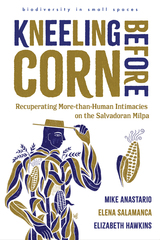 Kneeling Before Corn: Recuperating More-than-Human Intimacies on the Salvadoran Milpa
Mike Anastario, Elena Salamanca, and Elizabeth Hawkins
University of Arizona Press, 2024 The cultivation of the three sisters (corn, beans, and squash) on subsistence farms in El Salvador is a multispecies, world-making, and ongoing process. Milpa describes a small subsistence corn farm. It is derived from the word milli (‘field’, or a piece of land under active cultivation) in Nahuatl. The milpa is a farming practice that uses perennial, intercropping, and swidden (fire and fallow) techniques that predates the Spanish conquest of the Americas.
Kneeling Before Corn focuses on the intimate relations that develop between plants and humans in the milpas of the northern rural region of El Salvador. It explores the ways in which more-than-human intimacies travel away from and return to the milpa through human networks.
Collective and multivocal, this work reflects independent lines of investigation and multiple conversations between co-authors—all of whom have lived in El Salvador for extended periods of time. Throughout the six chapters, the co-authors invite readers to consider more-than-human intimacies by rethinking, experimenting with, and developing new ways of documenting, analyzing, and knowing the intimacies that form between humans and the plants that they cultivate, conserve, long for, and eat. This book offers an innovative account of rural El Salvador in the twenty-first century.
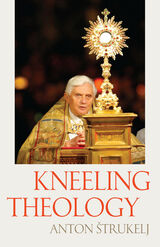 Kneeling Theology
Anton Strukelj
Catholic University of America Press, 2022 Anton Štrukelj, in this English edition of his book Kneeling Theology, which was published in German, Italian, Polish, Russian and Slovenian, based his theme on the concept first developed by Hans Urs von Balthasar. This Swiss intellectual is considered one of the most important theologians of the 20th century. Štrukelj sees as his task, through a synthetic survey of questions, to seek from his subjects a holistic perspective regarding the role of the theologian, without doing a critical analysis of all their work.
Kneeling Theology analyzes the process and its consequences that gave rise to the religious and cultural developments of the past and the present. It is his thesis that the essence of theology should flow from holiness. He relies for his evidence on the life and work of Hans Urs von Balthasar (which included the insights of Adrienne von Speyr, physician and mystic), Cardinal Joseph Ratzinger (Pope Benedict XVI), the Slovenian theologian Anton Strle (now servant of God) and Anton Vovk, former Archbishop of Ljubljana, fearless witness of Christ and his Church, also servant of God.
Štrukelj's purpose with this book is to point out that Catholic theology is best served, not only by competent research and a thorough knowledge of Church tradition, but by theologians who approach their work prayerfully and on their knees. The rich theological and pastoral heritage that has been bequeathed to us by a small group of special people in this book has come about because of their scholarship and their holiness. They have, each in their own way, demonstrated what it means to do theology on their knees, and they have shared their scholarship and insights with us.
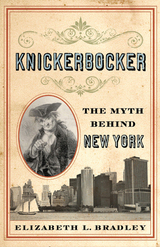 Knickerbocker: The Myth behind New York
Bradley, Elizabeth L
Rutgers University Press, 2009 Deep within New York's compelling, sprawling history lives an odd, ornery Manhattan native named Diedrich Knickerbocker. The name may be familiar today: his story gave rise to generations of popular tributes—from a beer brand to a basketball team and more—but Knickerbocker himself has been forgotten. In fact, he was New York's first truly homegrown chronicler, and as a descendant of the Dutch settlers, he singlehandedly tried to reclaim the city for the Dutch. Almost singlehandedly, that is. Diedrich Knickerbocker was created in 1809 by a young Washington Irving, who used the character to narrate his classic satire, A History of New York. According to Irving's partisan narrator, everything good and distinctive, proud and powerful, about New York City—from the doughnuts to the twisting streets of lower Manhattan—could be traced back to New Amsterdam. Terrific general interest, cultural history of a city with a rich and lively literary past. First-ever book on the eponymous myth that has informed New York City culture since the early 1800s. Coincides with the two-hundredth anniversary of Washington Irving's publication of A History of New York. Perfect gift book or addition to library collection of New York Cityùthemed books. Includes a gallery of images that brings Diedrich Knickerbocker, his myth, time, and place to life Knickerbocker engagingly traces the creation, evolution, and prevalence of Irving's imaginary historian in New York literature and history, art and advertising, from the early nineteenth century to the present day. Who would imagine this satiric character, at once a snob and a champion of the people, would endure for two hundred years? In Elizabeth L. Bradley's words, "Whether you call it 'blood,' style, attitude, or moxie, the little Dutchman could deliver." And, from this engaging work, it is clear that he does. Bradley's stunning volume offers a surprising and delightful glimpse behind the scenes of New York history, and invites readers into the world of Knickerbocker, the antihero who surprised everyone by becoming the standard-bearer for the city's exceptional sense of self, or what we now call a New York "attitude."
The Knight and His Shadow
Boubacar Boris Diop
Michigan State University Press, 2015 A brilliant tour de force, The Knight and His Shadow tells the tale of Lat-Sukabé’s quest to find his former lover, Khadidja, who writes him to “come before it’s too late.” As Lat-Sukabé recounts his past with Khadidja, reality shapeshifts and takes on a dreamlike quality. He describes how Khadidja is hired by a wealthy stranger to sit before an open door and tell stories into an uncertain darkness, unable to see the person to whom she speaks. Like Lat-Sukabé and Khadidja, the reader feels farther from home with every page, as the world turns and morphs. With those shifts, the symbolic order, the basis of meaning and sanity, begins to tremble. Postmodernist sensibilities meet postcolonial concerns in this lyrical novel from a master of Senegalese literature.
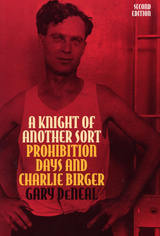 A Knight of Another Sort: Prohibition Days and Charlie Birger, Second Edition
Gary DeNeal. Foreword by Jim Ballowe
Southern Illinois University Press, 1998 In 1913 Charlie Birger began his career as a bootlegger, supplying southern Illinois with whiskey and beer. He was charismatic, with an easygoing manner and a cavalier generosity that made him popular. The stuff of legend, he was part monster, part Robin Hood. In the early days, he would emerge from his restaurant/saloon in tiny Ledford in Saline County with a cigar box full of coins and throw handfuls in the air for the children. Echoing the consensus on Birger, an anonymous gang member called him "enigmatic," noting that "he had a wonderful quality, a heart of gold. There in Harrisburg sometimes he'd support twelve or fifteen families, buy coal, groceries. . . . [But] he had cold eyes, a killer's eyes. He would kill you for something somebody else would punch you in the nose for." Drawing from the colorful cast of the living, the dead, and the soon-to-be-dead—a state shared by many associated with Birger and his enemies, the Shelton gang—DeNeal re-creates Prohibition-era southern Illinois. He depicts the fatal shootout between S. Glenn Young and Ora Thomas, the battle on the Herrin Masonic Temple lawn in which six were slain and the Ku Klux Klan crushed, and the wounding of Williamson County state's attorney Arlie O. Boswell. As the gang wars escalated and the roster of corpses lengthened, the gangsters embraced technology. The Sheltons bombed Birger's roadhouse, Shady Rest, from a single-engine airplane. Both Birger and the Sheltons used armored vehicles to intimidate their enemies, and the chatter of machine gun fire grew common. The gang wars ended with massive arrests, trials, and convictions of gangsters who once had seemed invincible. Charlie Birger was convicted of the murder of West City mayor Joe Adams and sentenced to death. On April 19, 1928, he stood on the gallows looking down on the large crowd that had come to see him die. "It's a beautiful world," Birger said softly as he prepared to leave it.
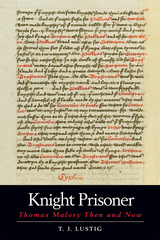 Knight Prisoner: Thomas Malory Then and Now
T.J. Lustig
Sussex Academic Press, 2022 "THIS WAS DRAWYN BY A KNYGHT PRESONER, SIR THOMAS MALLEORE, THAT GOD SENDE HYM GOOD RECOVER." In 1934, these were the lines which made the Librarian of Winchester College realize that he had discovered a hitherto unknown version of Sir Thomas Malory's Le Morte d'Arthur, a work known to all previous readers only through Caxton's 1485 edition. For it was known that Thomas Malory of Newbold Revel had been imprisoned on numerous occasions between the 1450s and his death in 1471 - by Lancastrians and Yorkists. But who was Malory? Why did successive authorities want to lock him up? How did he come to write the Morte d'Arthur? And why has that text been so persistent a presence in English culture? Going in quest of Malory and of the meaning of the Morte the author addresses the text's central preoccupations - violence, desire, and the nature of Englishness. Malory is placed in his social context, at a time of unprecedented national and regional unrest. Lustig traces the connections between writers and commentators - from Tennyson to T.S. Eliot - who have been fascinated by Malory's work. . A prime purpose of the volume is to reveal the Morte's extraordinary ability to move its readers intensely, to become part of their lives. Accordingly, the author delves into his own boyhood fascination with the stories of King Arthur, exploring their influence on him both then and now. The Morte d'Arthur was one of the last great literary works of the Middle Ages. But it was also one of the first to articulate a distinctively modern set of concerns - particularly with the nature of identity, both personal and national. Knight Prisoner: Thomas Malory Then and Now will send readers back to Malory's work with renewed enjoyment and understanding.
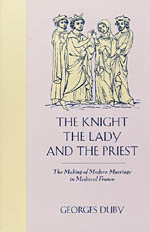 The Knight, the Lady and the Priest: The Making of Modern Marriage in Medieval France
Georges Duby
University of Chicago Press, 1993 This ambitious study sets out to discover what marriage meant in the daily lives of the nobles of the tenth, eleventh, and twelfth centuries. Through entertaining anecdotes, family dramas, and striking quotations, Duby succeeds in bringing his subjects to life, making us feel as if we understand the motives and conflicts of those who inhabited the distant past.
"It is typical of Duby's modest spirit and his book-long concern with the ancient status of beleaguered wives that he ends his study with a plea: 'We must not forget the women. Much has already been said about them. But how much do we really know?' Not everything, certainly, but far more than we did before the author began these charmingly erudite investigations."—Ken Turan, Time
"It is refreshing to find a historian who is always conscious that we simply do not know what or how people thought 1000 years ago. . . . Duby explains the complicated machinations of the medieval churchman and the paterfamilias in a scholarly but lively style."—Sarah Lawson, New Statesman
"Duby has written an extraordinarily rich book—a panoramic view of medieval marriage and the relations between men and women, full of arresting insights and human detail. . . . It is the work of a master historian at the peak of his powers on a subject of central relevance, compulsive and essential reading."—P. Stafford, British History
Georges Duby (1919-1996) was a member of the Académie française and for many years held the distinguished chair in medieval history at the Collège de France. His books include The Three Orders; The Age of Cathedrals; The Knight, the Lady, and the Priest; Love and Marriage in the Middle Ages; and History Continues, all published by the University of Chicago Press.
The Knights Templar
Helen J. Nicholson
Arc Humanities Press, 2021 Over seven hundred years after the pope dissolved their Order, the Templars remain as controversial as ever. How could warriors also be monks? What did they really believe in? Why did they fail to protect the Holy Land? What impact did they have on society? Why were they dissolved–-were they really heretics? Based on the medieval evidence and the latest research by modern scholars, this book surveys some key areas of the Templars' history. It argues that despite their wide landholdings and apparent power the Templars‘ influence depended on the patronage of popes and kings, and that they were destroyed when their most powerful patron had more to gain than lose from their dissolution.
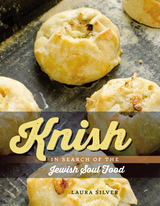 Knish: In Search of the Jewish Soul Food
Laura Silver
Brandeis University Press, 2014 When Laura Silver’s favorite knish shop went out of business, the native New Yorker sank into mourning, but then she sprang into action. She embarked on a round-the-world quest for the origins and modern-day manifestations of the knish. The iconic potato pie leads the author from Mrs. Stahl’s bakery in Brighton Beach, Brooklyn, to an Italian pasta maker in New Jersey—and on to a hunt across three continents for the pastry that shaped her identity. Starting in New York, she tracks down heirs to several knish dynasties and discovers that her own family has roots in a Polish town named Knyszyn. With good humor and a hunger for history, Silver mines knish lore for stories of entrepreneurship, survival, and major deliciousness. Along the way, she meets Minnesota seniors who make knishes for weekly fundraisers, foodies determined to revive the legacy of Mrs. Stahl, and even the legendary knish maker’s granddaughters, who share their joie de vivre—and their family recipe. Knish connections to Eleanor Roosevelt and rap music? Die-hard investigator Silver unearths those and other intriguing anecdotes involving the starchy snack once so common along Manhattan’s long-lost Knish Alley. In a series of funny, moving, and touching episodes, Silver takes us on a knish-eye tour of worlds past and present, thus laying the foundation for a global knish renaissance.
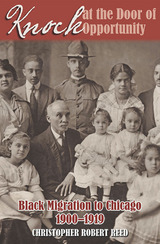 Knock at the Door of Opportunity: Black Migration to Chicago, 1900-1919
Christopher Robert Reed
Southern Illinois University Press, 2014 Disputing the so-called ghetto studies that depicted the early part of the twentieth century as the nadir of African American society, this thoughtful volume by Christopher Robert Reed investigates black life in turn-of-the-century Chicago, revealing a vibrant community that grew and developed on Chicago’s South Side in the early 1900s. Reed also explores the impact of the fifty thousand black southerners who streamed into the city during the Great Migration of 1916–1918, effectively doubling Chicago’s African American population. Those already residing in Chicago’s black neighborhoods had a lot in common with those who migrated, Reed demonstrates, and the two groups became unified, building a broad community base able to face discrimination and prejudice while contributing to Chicago’s growth and development. Reed not only explains how Chicago’s African Americans openly competed with white people for jobs, housing and an independent political voice but also examines the structure of the society migrants entered and helped shape. Other topics include South Side housing, black politics and protest, the role of institutionalized religion, the economic aspects of African American life, the push for citizenship rights and political power for African Americans, and the impact of World War I and the race riot of 1919. The first comprehensive exploration of black life in turn-of-the-century Chicago beyond the mold of a ghetto perspective, this revealing work demonstrates how the melding of migrants and residents allowed for the building of a Black Metropolis in the 1920s. 2015 ISHS Superior Achievement Award
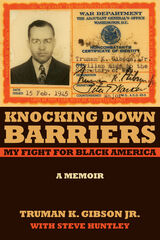 Knocking Down Barriers: My Fight for Black America
Truman K. Gibson Jr. with Steve Huntley
Northwestern University Press, 2005 Winner, 2006 Illinois State Historical Society Book Award Certificate of Excellence
Recipient, 2007 Hyde Park Historical Society Paul Cornell Award
Sixty years ago, when Truman Gibson reported for duty at the War Department, Washington, D.C. was a southern city in its unbending segregation as well as in its steamy summers. Gibson had no illusions, but as someone who'd enjoyed the best of the vibrant black culture of prewar America, he was shocked to find the worst of the Jim Crow South in the nation's capital. What Gibson accomplished as an advocate for African American soldiers-first as a lawyer working for the Secretary of War, then as a member of President Truman's "Black Cabinet"--is a large part of the history of the struggle for civil rights in the American military; and it is a compelling part of the story that Gibson tells in this book, a memoir of a life spent making a difference in the world one step at a time.
A graduate of the University of Chicago Law School, Gibson took his fight for racial justice to the corridors of powers, arguing against restrictive real estate covenants before the U.S. Supreme Court, opposing such iconic figures as Generals Dwight Eisenhower and George C. Marshall in campaigning for the integration of the armed forces, and challenging white control of professional sports by creating a boxing promotion empire that made television history. A firsthand account of the nitty-gritty of twentieth-century race relations in the worlds of law, the military, sports, and entertainment, Gibson's memoir is also an engaging recollection of encounters with the likes of Thurgood Marshall, W. E. B. DuBois, Eleanor Roosevelt, George Patton, Jackie Robinson, and Joe Louis, among others. As a historical record and as an intimate look at a bygone era with all its charms and hardships, the book is an essential chapter in our nation's story.
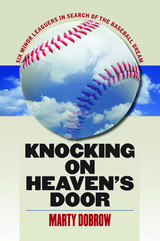 Knocking on Heaven’s Door: Six Minor Leaguers in Search of the Baseball Dream
Marty Dobrow
University of Massachusetts Press, 2010 The rich slice of Americana found in minor league baseball presents a contradictory culture. On the one hand, the minors are filled with wholesome, family-friendly entertainment-fluffy mascots, kitschy promotions, and earnest young men signing autographs for wide-eyed Little Leaguers. On the other, they comprise a world of cutthroat competition in which a teammate's failure or injury can be the cause of quiet celebration and 90 percent of all players never play a single inning in the major leagues.
In Knocking on Heaven's Door, award-winning sportswriter Marty Dobrow examines this double-edged culture by chronicling the lives of six minor leaguers-Brad Baker, Doug Clark, Manny Delcarmen, Randy Ruiz, Matt Torra, and Charlie Zink-all struggling to make their way to "The Show." What links them together, aside from their common goal, is that they are all represented by the same team of agents-Jim and Lisa Masteralexis and their partner Steve McKelvey-whose own aspirations parallel those of the players they represent.
The story begins during spring training in 2005 and ends in the fall of 2008, followed by a brief epilogue that updates each player's fortunes through the 2009 season. Along the way Dobrow offers a revealing, intimate look at life in minor league baseball: the relentless tedium of its itinerant routines and daily rituals; the lure of performance-enhancing drugs as a means of gaining a competitive edge; the role of agents in negotiating each player's failures as well as his successes; and the influence of wives, girlfriends, and family members who have invested in the dream.
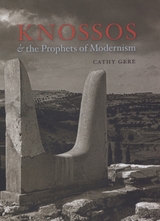 Knossos and the Prophets of Modernism
Cathy Gere
University of Chicago Press, 2009 In the spring of 1900, British archaeologist Arthur Evans began to excavate the palace of Knossos on Crete, bringing ancient Greek legends to life just as a new century dawned amid far-reaching questions about human history, art, and culture. With Knossos and the Prophets of Modernism, Cathy Gere relates the fascinating story of Evans’s excavation and its long-term effects on Western culture. After the World War I left the Enlightenment dream in tatters, the lost paradise that Evans offered in the concrete labyrinth—pacifist and matriarchal, pagan and cosmic—seemed to offer a new way forward for writers, artists, and thinkers such as Sigmund Freud, James Joyce, Giorgio de Chirico, Robert Graves, and Hilda Doolittle. Assembling a brilliant, talented, and eccentric cast at a moment of tremendous intellectual vitality and wrenching change, Cathy Gere paints an unforgettable portrait of the age of concrete and the birth of modernism.
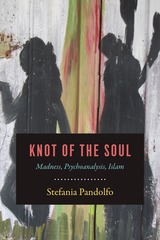 Knot of the Soul: Madness, Psychoanalysis, Islam
Stefania Pandolfo
University of Chicago Press, 2018 Through a dual engagement with the unconscious in psychoanalysis and Islamic theological-medical reasoning, Stefania Pandolfo’s unsettling and innovative book reflects on the maladies of the soul at a time of tremendous global upheaval. Drawing on in-depth historical research and testimonies of contemporary patients and therapists in Morocco, Knot of the Soul offers both an ethnographic journey through madness and contemporary formations of despair and a philosophical and theological exploration of the vicissitudes of the soul.
Knot of the Soul moves from the experience of psychosis in psychiatric hospitals, to the visionary torments of the soul in poor urban neighborhoods, to the melancholy and religious imaginary of undocumented migration, culminating in the liturgical stage of the Qur’anic cure. Demonstrating how contemporary Islamic cures for madness address some of the core preoccupations of the psychoanalytic approach, she reveals how a religious and ethical relation to the “ordeal” of madness might actually allow for spiritual transformation.
This sophisticated and evocative work illuminates new dimensions of psychoanalysis and the ethical imagination while also sensitively examining the collective psychic strife that so many communities endure today.
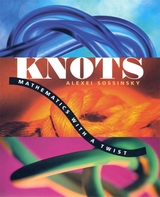 Knots: Mathematics with a Twist
Alexei Sossinsky
Harvard University Press, 2002 Ornaments and icons, symbols of complexity or evil, aesthetically appealing and endlessly useful in everyday ways, knots are also the object of mathematical theory, used to unravel ideas about the topological nature of space. In recent years knot theory has been brought to bear on the study of equations describing weather systems, mathematical models used in physics, and even, with the realization that DNA sometimes is knotted, molecular biology.
This book, written by a mathematician known for his own work on knot theory, is a clear, concise, and engaging introduction to this complicated subject. A guide to the basic ideas and applications of knot theory, Knots takes us from Lord Kelvin’s early—and mistaken—idea of using the knot to model the atom, almost a century and a half ago, to the central problem confronting knot theorists today: distinguishing among various knots, classifying them, and finding a straightforward and general way of determining whether two knots—treated as mathematical objects—are equal.
Communicating the excitement of recent ferment in the field, as well as the joys and frustrations of his own work, Alexei Sossinsky reveals how analogy, speculation, coincidence, mistakes, hard work, aesthetics, and intuition figure far more than plain logic or magical inspiration in the process of discovery. His spirited, timely, and lavishly illustrated work shows us the pleasure of mathematics for its own sake as well as the surprising usefulness of its connections to real-world problems in the sciences. It will instruct and delight the expert, the amateur, and the curious alike.
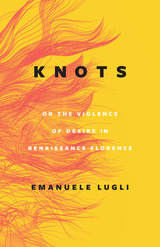 Knots, or the Violence of Desire in Renaissance Florence
Emanuele Lugli
University of Chicago Press, 2023 An interdisciplinary study of hair through the art, philosophy, and science of fifteenth-century Florence.
In this innovative cultural history, hair is the portal through which Emanuele Lugli accesses the cultural production of Lorenzo il Magnifico’s Florence. Lugli reflects on the ways writers, doctors, and artists expressed religious prejudices, health beliefs, and gender and class subjugation through alluring works of art, in medical and political writings, and in poetry. He considers what may have compelled Sandro Botticelli, the young Leonardo da Vinci, and dozens of their contemporaries to obsess over braids, knots, and hairdos by examining their engagement with scientific, philosophical, and theological practices.
By studying hundreds of fifteenth-century documents that engage with hair, Lugli foregrounds hair’s association to death and gathers insights about human life at a time when Renaissance thinkers redefined what it meant to be human and to be alive. Lugli uncovers overlooked perceptions of hair when it came to be identified as a potential vector for liberating culture, and he corrects a centuries-old prejudice that sees hair as a trivial subject, relegated to passing fashion or the decorative. He shows hair, instead, to be at the heart of Florentine culture, whose inherent violence Lugli reveals by prompting questions about the entanglement of politics and desire.
Know It by Heart
Karl Luntta
Northwestern University Press, 2003 When a racially mixed family moves into an all-white neighborhood in East Hartford, Connecticut, in 1961, lives are altered forever. Karl Luntta's Know It by Heart follows the adventures of young Dub Teed, his sister Susan and neighbor Doug Hammer, who befriend newly arrived Ricky Dubois, the daughter of an African-American woman and her white husband. When a burning cross flares in the night—and worse—the young adolescents set out to find justice and discover themselves in the process. Despite the book's serious anti-racist theme, Know It by Heart is filled with humor reminiscent of Mark Twain. In this suspenseful novel, Karl Luntta brilliantly captures the world of the young adolescent in his characters and dialogue and in the innate comedy and awkwardness of that age. This is a book that will appeal to parents and teenagers alike.
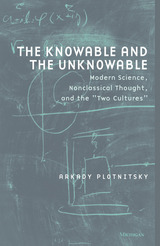 The Knowable and the Unknowable: Modern Science, Nonclassical Thought, and the "Two Cultures"
Arkady Plotnitsky
University of Michigan Press, 2002 This book investigates the relationships between modern mathematics and science (in particular, quantum mechanics) and the mode of theorizing that Arkady Plotnitsky defines as "nonclassical" and identifies in the work of Bohr, Heisenberg, Lacan, and Derrida. Plotinsky argues that their scientific and philosophical works radically redefined the nature and scope of our knowledge. Building upon their ideas, the book finds a new, nonclassical character in the "dream of great interconnections" Bohr described, thereby engaging with recent debates about the "two cultures" (the humanities and the sciences).
Plotnitsky highlights those points at which the known gives way to the unknown (and unknowable). These points are significant, he argues, because they push the boundaries of thought and challenge the boundaries of disciplinarity. One of the book's most interesting observations is that key figures in science, in order to push toward a framing of the unknown, actually retreated into a conservative disciplinarity. Plotnitsky's informed, interdisciplinary approach is more productive than the disparaging attacks on postmodernism or scientism that have hitherto characterized this discourse.
Arkady Plotnitsky is Professor of English and Director, Theory and Cultural Studies Program, Purdue University. Trained in both mathematics and literary theory, he is author of several books, including In the Shadow of Hegel: Complementarity, History and the Unconscious and Reconfigurations: Critical Theory and General Economy.
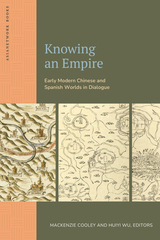 Knowing an Empire: Early Modern Chinese and Spanish Worlds in Dialogue
Edited by Mackenzie Cooley and Huiyi Wu
Lever Press, 2025 Knowing an Empire: Early Modern Chinese and Spanish Worlds in Dialogue unveils how these two vast empires, separated by thousands of miles, developed comparable systems to gather, order, and wield knowledge about their local worlds in the process of empire-building. From the sixteenth to the eighteenth centuries, officials in both empires compiled large quantities of structured data on the climate, topography, natural products, languages, religions, and more of their locales, creating a vision of their empires as diverse yet unified. Through a new methodology of “juxtapositional comparison,” the book reads the difangzhi 地方志 (local gazetteers) of China and the relaciones geográficas of the Spanish world in parallel.
Knowing an Empire does not see the conveyance of information across an empire as a top-down process with an active center as a knowledge-maker. Instead, it amplifies a blend of voices that speak as much to imperial bureaucracy as to the rich local and Indigenous cultures, revealing these two early modern empires as diverse polities whose equilibria were constantly rebalanced among local powers. Comprised of 18 chapters, this edited collection reflects on the historical evolution and inner structures of the imperial epistemologies, as well as the many ways historians today read difangzhi and relaciones geográficas to understand the spatial, natural, and social order in both the Chinese and the Spanish empires. At once a comparative and a connected history, it places Chinese and Spanish imperial knowledge in the globalizing early modern world, highlighting the migration of people, goods, and ideas and revealing how these wide-ranging influences are reflected—or not—in the difangzhi and the relaciones. The book concludes by broadening our scope beyond China and Spain to reflect how other early modern empires, such as the Portuguese, failed to develop such systematized imperial genres.
With contributions from leading scholars across Latin American and Asian Studies, this book synthesizes political, environmental, and socio-economic history with historical anthropology to highlight parallel governance and knowledge structures. The contributors challenge conventional binaries of Western versus Eastern, and colonial versus non-colonial, presenting a nuanced perspective of early modern empires as dynamic, interconnected entities through the shared challenges of scale, diversity, and increasing globalization. Through these dialogues, Knowing an Empire illuminates the complex entanglement of ruling and understanding. This groundbreaking collection offers a highly innovative and dialogic approach to comparative studies of empires, with major implications for Asian, European, Latin American, transnational, and global history.
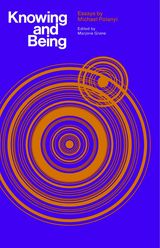 Knowing and Being
Michael Polanyi
University of Chicago Press, 1973 Because of the difficulty posed by the contrast between the search for truth and truth itself, Michael Polanyi believes that we must alter the foundation of epistemology to include as essential to the very nature of mind, the kind of groping that constitutes the recognition of a problem.
This collection of essays, assembled by Marjorie Grene, exemplifies the development of Polanyi's theory of knowledge which was first presented in Science, Faith, and Society and later systematized in Personal Knowledge. Polanyi believes that the dilemma of the modern mind arises from the peculiar relation between the positivist claim for total objectivity in scientific knowledge and the unprecedented moral dynamism characterizing the social and political aspirations of the last century. The first part of Knowing and Being deals with this theme. Part two develops Polanyi's idea that centralization is incompatible with the life of science as well as his views on the role of tradition and authority in science. The essays on tacit knowing in Part Three proceed directly from his preoccupation with the nature of scientific discovery and reveal a pervasive substructure of all intelligent behavior. Polanyi believes that all knowing involves movement from internal clues to external evidence. Therefore, to explain the process of knowing, we must develop a theory of the nature of living things in general, including an account of that aspect of living things we call "mind." Part Four elaborates upon this theme.
Knowing and Seeing: Reflections on Fifty Years of Drawing Cities
Douglas Cooper
University of Pittsburgh Press, 2019 In Knowing and Seeing, Douglas Cooper reflects on his long career as a muralist in various cities around the world, including in Pittsburgh. The essays are also personal discussing family, memories from his childhood, mentoring from his Carnegie Mellon University professors, and his collaborations. They are also instructive. Murals are not walls but provide the appearance as such and require the artist to have a different skill set that is part architect, part painter, and part builder.
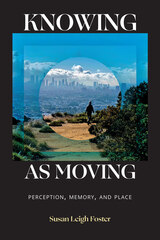 Knowing as Moving: Perception, Memory, and Place
Susan Leigh Foster
Duke University Press, 2025 In Knowing as Moving, Susan Leigh Foster theorizes how the act of moving in and through the world creates the potential for individual and collective bodies to connect. Starting from the assertion that knowing takes place through bodily movement, Foster moves away from the Western philosophical traditions of dance, critiquing the Cartesian mind-body duality and its colonizing politics. She draws on Native and Indigenous studies, ecological cognitive science, disability studies, phenomenology, and new materialism to explore how knowledge is neither static nor storable. Thinking is a physical action and the product of an entire neuromuscular system with its mobile postural and gestural configurations, perceptual systems, and brain activity. Foster outlines how reading, examining, talking, and remembering are all forms of moving and contends that any process of knowing establishes one’s identity and relationality. By focusing on the centrality of bodily movement to thought and self, she contributes a decolonial critique of the study of knowledge and being. In so doing, Foster replaces the Cartesian-colonial “I think, therefore I am” with a decolonial “I move, and therefore I know.”
Knowing Bodies, Passionate Souls: Sense Perceptions in Byzantium
Susan Ashbrook Harvey
Harvard University Press How does sense perception contribute to human cognition? How did the Byzantines understand that contribution? Byzantine culture in all its domains showed deep appreciation for sensory awareness and sensory experience. The senses were reckoned as modes of knowledge—intersecting realms both human and divine, bodily and spiritual, physical and intellectual.
Scholars have attended to aspects of sight and sound in Byzantine culture, but have generally left smell, taste, and touch undervalued and understudied. Through collected essays that redress the imbalance, the contributors explore how the Byzantines viewed the senses; how they envisaged sensory interactions within their world; and how they described, narrated, and represented the senses at work. The result is a fresh charting of the Byzantine sensorium as a whole.
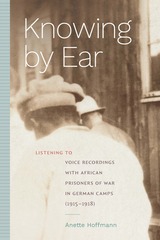 Knowing by Ear: Listening to Voice Recordings with African Prisoners of War in German Camps (1915–1918)
Anette Hoffmann
Duke University Press, 2024 During World War I, thousands of young African men conscripted to fight for France and Britain were captured and held as prisoners of war in Germany, where their stories and songs were recorded and archived by German linguists. In Knowing by Ear, Anette Hoffmann demonstrates that listening to these acoustic recordings as historical sources, rather than linguistic samples, opens up possibilities for new historical perspectives and the formation of alternate archival practices and knowledge production. She foregrounds the archival presence of individual speakers and positions their recorded voices as responses to their experiences of colonialism, war, and the journey from Africa to Europe. By engaging with the recordings alongside written sources, photographs, and artworks depicting the speakers, Hoffmann personalizes speakers from present-day Senegal, Somalia, Togo, and Congo. Knowing by Ear includes transcriptions of numerous recordings of spoken and sung texts, revealing acoustic archives as significant yet under-researched sources for recovering the historical speaking positions of colonized subjects and listen to the acoustic echo of colonial knowledge production.
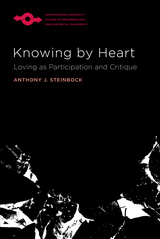 Knowing by Heart: Loving as Participation and Critique
Anthony J. Steinbock
Northwestern University Press, 2021 Drawing on and developing the phenomenological work of figures such as Edmund Husserl and Max Scheler, Knowing by Heart: Loving as Participation and Critique provides an account of the various feelings and feeling‑states that pertain to matters of the heart. Anthony J. Steinbock’s work investigates the special kind of knowing that is revealed most profoundly through love.
Knowing by Heart describes the movement of loving as a participation that bears on all beings. Eschewing the dichotomy of rationalism and sensibility that has dominated discussions of love and emotion, Steinbock understands the heart as a vast schema ranging from the deepest loving to affects and felt conditions. The book brings into focus the importance of a full‑bodied relational account of a normative critique based in emotion. From a phenomenological description of diverse feelings to the normativity of loving as the discernment of the heart, this work evaluates hating’s relation to loving. At the basis of all this is a phenomenological and philosophical anthropology in response to the basic question: In reality, who and what are we?
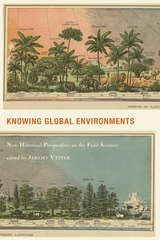 Knowing Global Environments: New Historical Perspectives on the Field Sciences
Vetter, Jeremy
Rutgers University Press, 2011 Knowing Global Environments brings together nine leading scholars whose work spans a variety of environmental and field sciences, including archaeology, agriculture, botany, climatology, ecology, evolutionary biology, oceanography, ornithology, and tidology.
Collectively their essays explore the history of the field sciences, through the lens of place, practice, and the production of scientific knowledge, with a wide-ranging perspective extending outwards from the local to regional, national, imperial, and global scales. The book also shows what the history of the field sciences can contribute to environmental history-especially how knowledge in the field sciences has intersected with changing environments-and addresses key present-day problems related to sustainability, such as global climate, biodiversity, oceans, and more.
Contributors to Knowing Global Environments reveal how the field sciences have interacted with practical economic activities, such as forestry, agriculture, and tourism, as well as how the public has been involved in the field sciences, as field assistants, students, and local collaborators.
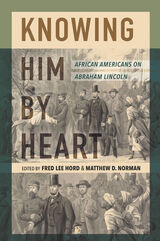 Knowing Him by Heart: African Americans on Abraham Lincoln
Edited by Frederick Hord and Matthew D. Norman
University of Illinois Press, 2023 Winner of an Abraham Lincoln Institute Book Award Though not blind to Abraham Lincoln's imperfections, Black Americans long ago laid a heartfelt claim to his legacy. At the same time, they have consciously reshaped the sixteenth president's image for their own social and political ends. Frederick Hord and Matthew D. Norman's anthology explores the complex nature of views on Lincoln through the writings and thought of Frederick Douglass, Ida B. Wells-Barnett, Mary McLeod Bethune, Thurgood Marshall, Malcolm X, Gwendolyn Brooks, Barbara Jeanne Fields, Barack Obama, and dozens of others. The selections move from speeches to letters to book excerpts, mapping the changing contours of the bond--emotional and intellectual--between Lincoln and Black Americans over the span of one hundred and fifty years. A comprehensive and valuable reader, Knowing Him by Heart examines Lincoln’s still-evolving place in Black American thought.
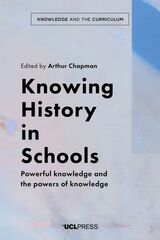 Knowing History in Schools: Powerful Knowledge and the Powers of Knowledge
Edited by Arthur Chapman
University College London, 2021 A dialogue among leading figures in history education research and practice.
The “knowledge turn” in curriculum studies has drawn attention to the central role that the knowledge of the disciplines plays in education and the need for fresh perspectives on knowledge-building. Knowing History in Schools explores these issues in the context of the discipline of history through a dialogue between the eminent sociologist of curriculum Michael Young, and leading figures in history education research and practice from a range of traditions and contexts. Focusing on Young’s “powerful knowledge” theorization of the curriculum, and on his more recent articulations of the “powers” of knowledge, this dialogue explores the many complexities facing history education. The book attempts to clarify how educators can best conceptualize knowledge-building in history education, and it will be of interest to history education students, history teachers, teacher educators, and history curriculum designers, as they navigate the challenges that knowledge-building processes pose for learning history in schools.
 Knowing Jesus Christ: An Introduction to Christology
Francis Selman
Catholic University of America Press, 2026 Knowing Jesus Christ answers the call of John Paul II, at the beginning of the new millennium, to contemplate the face of Christ. It covers all the main topics of Christology, taking a broadly historical approach to the doctrine of Christ.
After laying the foundation of the doctrine in Scripture with the first four of its twelve chapters, it then goes on in the middle four chapters to trace the formation of the Church's doctrine of Christ first in the patristic age and then in its medieval continuation, especially at the hand of Thomas Aquinas, which built on the patristic sources. The doctrine in its medieval form provides the vital bridge between the early Church and the modern era.
The final four chapters discuss modern questions and present new approaches to Christology (for example, Rahner), beginning with the new impetus given by the Reformed tradition with its theology of the cross that gives the doctrine new relevance in an age, like our own, that has seen so much suffering through wars and oppression. The book ends with the writings of Benedict XVI, who proposed that we best discover who Christ is through his prayers as this has been recorded in the Gospels.
Knowing Jesus Christ has been written in an easily accessible style, so that it may both serve academic purposes and be read as a resource for one's own meditation on the person and saving mysteries of Christ.
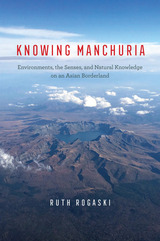 Knowing Manchuria: Environments, the Senses, and Natural Knowledge on an Asian Borderland
Ruth Rogaski
University of Chicago Press, 2022 Making sense of nature in one of the world’s most contested borderlands.
According to Chinese government reports, hundreds of plague-infected rodents fell from the skies over Gannan county on an April night in 1952. Chinese scientists determined that these flying voles were not native to the region, but were vectors of germ warfare, dispatched over the border by agents of imperialism. Mastery of biology had become a way to claim political mastery over a remote frontier. Beginning with this bizarre incident from the Korean War, Knowing Manchuria places the creation of knowledge about nature at the center of our understanding of a little-known but historically important Asian landscape.
At the intersection of China, Russia, Korea, and Mongolia, Manchuria is known as a site of war and environmental extremes, where projects of political control intersected with projects designed to make sense of Manchuria’s multiple environments. Covering more than 500,000 square miles, Manchuria’s landscapes include temperate rainforests, deserts, prairies, cultivated plains, wetlands, and Siberian taiga. With analysis spanning the seventeenth century to the present day, Ruth Rogaski reveals how an array of historical actors—Chinese poets, Manchu shamans, Russian botanists, Korean mathematicians, Japanese bacteriologists, American paleontologists, and indigenous hunters—made sense of the Manchurian frontier. She uncovers how natural knowledge, and thus the nature of Manchuria itself, changed over time, from a sacred “land where the dragon arose” to a global epicenter of contagious disease; from a tragic “wasteland” to an abundant granary that nurtured the hope of a nation.
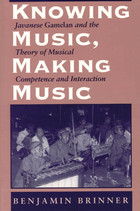 Knowing Music, Making Music: Javanese Gamelan and the Theory of Musical Competence and Interaction
Benjamin Brinner
University of Chicago Press, 1995 How do musicians know what they know? This study is a new approach to the nature of musical competence. Using the intricate collaborative structure of gamelan—Javanese ensemble music—as a point of departure, Knowing Music, Making Music lays the foundation for a comprehensive theory of musical competence and interaction.
Using illustrative examples from a variety of traditions, Benjamin Brinner first examines the elements and characteristics of musical competence, the different kinds of competence in a musical community, the development of multiple competences, and the acquisition and transformation of competence through time. He then shows how these factors come into play in musical interaction, establishing four intersecting theoretical perspectives based on ensemble roles, systems of communication, sound structures, and individual motivations. These perspectives are applied to the dynamics of gamelan performance to explain the social, musical, and contextual factors that affect the negotiation of consensus in musical interaction. The discussion ranges from sociocultural norms of interpersonal conduct to links between music, dance, theater, and ritual, and from issues of authority and deference to musicians' self-perceptions and mutual assessments.
Much more than a portrait of artists making music together, this book brings together a variety of cognitive approaches and a wide range of examples from many cultures to suggest ways of integrating our knowledge of music making both in individual cultures and crossculturally.
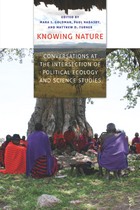 Knowing Nature: Conversations at the Intersection of Political Ecology and Science Studies
Edited by Mara J. Goldman, Paul Nadasdy, and Matthew D. Turner
University of Chicago Press, 2011 Political ecology and science studies have found fertile meeting ground in environmental studies. While the two distinct areas of inquiry approach the environment from different perspectives—one focusing on the politics of resource access and the other on the construction and perception of knowledge—their work is actually more closely aligned now than ever before.
Knowing Nature brings together political ecologists and science studies scholars to showcase the key points of encounter between the two fields and how this intellectual mingling creates a lively and more robust ecological framework for the study of environmental politics. The contributors all actively work at the interface between these two fields, and here they use empirical material to explore questions of theoretical and practical import for understanding the politics that surround nature-society relations, from wildlife management in the Yukon to soil fertility in Kenya. In addition, they examine how various environmental knowledge claims are generated, packaged, promoted, and accepted (or rejected) by the different actors involved in specific cases of environmental management, conservation, and development. Finally, they ask what is at stake in the struggles surrounding environmental knowledge, how such struggles shape conceptions of the environment, and whose interests are served in the process.
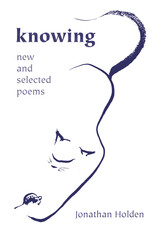 Knowing: New and Selected Poems
Jonathan Holden
University of Arkansas Press, 2000 These poems are the best poems from Jonathan Holden's first seven books, four of which have won significant national competitions: Design for a House (The Devins Award, 1972), Leverage (The AWP Award Series, 1982), The Names of the Rapids (The Juniper Prize, 1985), and The Sublime (The Vassar Miller Prize, 1995). Holden's command of language is staggering, and his range of subjects is extensive. He writes about sex, mathematics, nationalism, propaganda, baseball, and blackmail with an emotional honesty that pushes his observations in surprising directions that the reader can never anticipate. These poems have a sustained leanness and concentrated power. Holden is a craftsman whose poems carry one along with the vigor and the inevitability of rapids and the illumination of chain lightning. His dramatic lyrics, like those of the late Richard Hugo, evoke a quality of light in the studied landscapes whose common denominator is solitude but where, through art, beauty and the heartening sense of human community can coexist.
Knowing Nukes: The Politics and Culture of the Atom
William Chaloupka
University of Minnesota Press, 1992 Countering critics who charge that postmodern positions on language, authority, and power cannot inform effective political responses, this compelling analysis employs these same methods to examine antinuclear politics. Star Wars (the movie and the antimissile system), the Freeze movement, Reaganism, and “lifestyle” politics all receive new treatments.
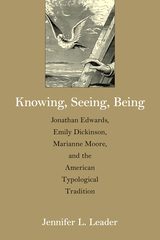 Knowing, Seeing, Being: Jonathan Edwards, Emily Dickinson, Marianne Moore, and the American Typological Tradition
Jennifer L. Leader
University of Massachusetts Press, 2016 Scholars no longer see Jonathan Edwards as the fire-and-brimstone preacher who deemed his parishioners “sinners in the hands of an angry god.” Edwards now figures as caring and socially conscious and exerts increased influence as a philosopher of the American school of Protestantism. In this study, he becomes the progenitor of an alternative tradition in American letters. In Knowing, Seeing, Being, Jennifer L. Leader argues that Edwards, the nineteenth-century poet Emily Dickinson, and the twentieth-century poet Marianne Moore share a heretofore underrecognized set of religious and philosophical preoccupations. She contends that they represent an alternative tradition within American literature, one that differs from Transcendentalism and is grounded in Reformed Protestantism and its ways of reading and interpreting the King James Bible and the natural world. According to Leader, these three writers’ most significant commonality is the Protestant tradition of typology, a rigorous mode of interpreting scripture and nature through which certain figures or phenomena are read as the fulfillment of prophecy and of God’s work. Following from their similar ways of reading, they also share philosophical and spiritual questions about language, epistemology (knowing), perception (seeing), and physical and spiritual ontology (being). In connecting Edwards to these two poets, in exploring each writer’s typological imagination, and through a series of insightful readings, this innovative book reevaluates three major figures in American intellectual and literary history and compels a reconsideration of these writers and their legacies.
 Knowing Silence: How Children Talk about Immigration Status in School
Ariana Mangual Figueroa
University of Minnesota Press, 2024 Learning from children about citizenship status and how it shapes their schooling
There is a persistent assumption in the field of education that children are largely unaware of their immigration status and its implications. In Knowing Silence, Ariana Mangual Figueroa challenges this “myth of ignorance.” By listening carefully to both the speech and significant silences of six Latina students from mixed-immigration-status families, from elementary school into middle school and beyond, she reveals the complex ways young people understand and negotiate immigration status and its impact on their lives. Providing these children with iPod Touches to record their own conversations, Mangual Figueroa observes when and how they choose to talk about citizenship at home, at school, and in public spaces. Analyzing family conversations about school forms, in-class writing assignments, encounters with the police, and applications for college, she demonstrates that children grapple with the realities of citizenship from an early age. Educators who underestimate children’s knowledge, Mangual Figueroa shows, can marginalize or misunderstand these students and their families. Combining significant empirical findings with reflections on the ethical questions surrounding research and responsibility, Mangual Figueroa models new ways scholars might collaborate with educators, children, and families. With rigorous and innovative ethnographic methodologies, Knowing Silence makes audible the experiences of immigrant-origin students in their own terms, ultimately offering teachers and researchers a crucial framework for understanding citizenship in the contemporary classroom.
 Knowing the Amorous Man: A History of Scholarship on Tales of Ise
Jamie L. Newhard
Harvard University Press, 2013 Tales of Ise (Ise monogatari) is traditionally identified as one of the most important Japanese literary texts of the Heian period (794–1185). Since its enshrinement in the classical literary canon as early as the eleventh century, the work has also been the object of intensive study and extensive commentary. Its idiosyncratic form—125 loosely connected episodes recounting the life and loves of an anonymous courtier—and mysterious authorship have provoked centuries of explication.
Jamie Newhard’s study skillfully combines primary-source research with a theoretically framed analysis, exploring commentaries from the medieval period into the early twentieth century, and situating the text’s critical reception within an evolving historical and social context. By giving a more comprehensive picture of the social networks and scholastic institutions within which literary scholarship developed and circulated, Newhard identifies the ideological, methodological, and literary issues that shaped the commentators’ agendas as the audience for classical literature expanded beyond aristocratic circles to include other social groups. Her approach illuminates how exegesis of Tales of Ise ultimately reflects shifting historical and social assessments that construct, transform, and transmit the literary and cultural value of the work over time.
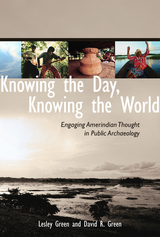 Knowing the Day, Knowing the World: Engaging Amerindian Thought in Public Archaeology
Lesley Green and David R. Green
University of Arizona Press, 2013 Based on more than a decade of research in Palikur lands known as Arukwa in the state of Amapá, Brazil, Knowing the Day, Knowing the World reconsiders the dialogue between formal scholarship and Amerindian ways of knowing. Beginning and ending with a public archaeology project in the region, the book engages head-on with Amerindian ways of thinking about space, time, and personhood. Demonstrating that Palikur knowledges are based on movement and a careful theorization of what it means to be present in a place, the book makes a sustained case for engaging with different ways of knowing. It shows how this kind of research can generate rich dialogues about nature, reality, and the ethical production of knowledge.
The structure of the book reflects a gradual comprehension of Palikur ways of knowing during the course of field research. The text enters into the ethnographic material from the perspective of familiar disciplines—history, geography, astronomy, geometry, and philosophy—and explores the junctures in which conventional disciplinary frameworks cannot adequately convey Palikur understandings. Beginning with reflections on questions of personhood, ethics, and ethnicity, the authors rethink assumptions about history and geography. They learn and recount an alternative way of thinking about astronomy from the Palikur astronomical narratives, and they show how topological concepts embedded in everyday Palikur speech extend to different ways of conceptualizing landscape. In conclusion, they reflect on the challenges of comprehending alternative cosmologies and consider the insights that come from allowing ethnographic material to pose questions of modernist frameworks.
 Knowing the Love of Christ: An Introduction to the Theology of St. Thomas Aquinas
Michael Dauphinais
University of Notre Dame Press, 2002
Knowing the Love of Christprovides a thorough introduction to the theology of St. Thomas Aquinas in accessible language. As a complement to the many short introductions to St. Thomas’s philosophy, this book fills a gap in the literature on Thomas—a comprehensive introduction to his thought written by theologians. With enthusiasm and insight, Michael Dauphinais and Matthew Levering make available the vast theology of Thomas Aquinas.
Focusing upon the Summa Theologiae, Dauphinais and Levering illumine the profoundly biblical foundations of Thomas’s powerful vision of reality. Drawing upon their own experience, the authors guide readers into grappling with the fresh and penetrating insights of St. Thomas. Students at all stages of theological education will find this book an enriching introduction to the mysteries of the Christian faith.
“Dauphinais and Levering capture the teaching of Thomas with thoroughness, lucidity, and completeness. I find this book an extraordinary accomplishment.” —Romanus Cessario, O.P., St. John’s Seminary, Brighton, Massachusetts
“The beginner often finds St. Thomas Aquinas daunting. Dauphinais and Levering have done a masterful job of presenting the major themes of Thomas’ thought in a clear, concise, and yet faithful fashion. Anyone wanting to begin to study Thomas could not find a better starting point than this book. An added blessing is that the book will lead the reader to a deeper love and appreciation of the Christian Gospel. Aquinas himself would heartily approve.” —Thomas G. Weinandy, O.F.M., Cap., University of Oxford
“The strength of this book is to give an overview of Aquinas’ theological developments in prose that is accessible to nearly everyone. It is a remarkable piece of work.” —David B. Burrell, C.S.C., University of Notre Dame
“One of St. Thomas’s many prodigies was his ability to speak, at once, as a biblical theologian and a dogmatic theologian. He is the exemplar in both fields. I know of no other introductory text that presents Thomas’s dual genius so richly, so clearly, and in a way that is accessible to ordinary lay Catholics and undergraduates.” —Scott Hahn, Franciscan University of Steubenville
Knowing the Natural Law
Steven Jensen
Catholic University of America Press, 2015 Knowing the Natural Law traces the thought of Aquinas from an understanding of human nature to a knowledge of the human good, from there to an account of ought-statements, and finally to choice, which issues in human actions. The much discussed article on the precepts of the natural law (I-II, 94, 2) provides the framework for a natural law rooted in human nature and in speculative knowledge. Practical knowledge is itself threefold: potentially practical knowledge, virtually practical knowledge, and fully practical knowledge.
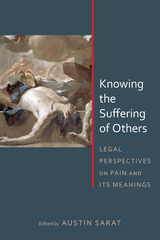 Knowing the Suffering of Others: Legal Perspectives on Pain and Its Meanings
Austin Sarat
University of Alabama Press, 2014 In Knowing the Suffering of Others, legal scholar Austin Sarat brings together essays that address suffering as it relates to the law, highlighting the ways law imagines suffering and how pain and suffering become jurisprudential facts.
From fetal imaging to end-of-life decisions, torts to international human rights, domestic violence to torture, and the law of war to victim impact statements, the law is awash in epistemological and ethical problems associated with knowing and imagining suffering. In each of these domains we might ask: How well do legal actors perceive and understand suffering in such varied domains of legal life? What problems of representation and interpretation bedevil efforts to grasp the suffering of others? What historical, political, literary, cultural, and/or theological resources can legal actors and citizens draw on to understand the suffering of others?
In Knowing the Suffering of Others, Austin Sarat presents legal scholarship that explores these questions and puts the problem of suffering at the center of thinking about law. The contributors to this volume do not regard pain and suffering as objective facts of a universe remote from law; rather they examine how both are discursively constructed in and by law. They examine how pain and suffering help construct and give meaning to the law as we know it. The authors attend to the various ways suffering appears in law as well as the different forms of suffering that require the law’s attention.
Throughout this book law is regarded as a domain in which the meanings of pain and suffering are contested, and constituted, as well as an instrument for inflicting suffering or for providing or refusing its relief. It challenges scholars, lawyers, students, and policymakers to ask how various legal actors and audiences understand the suffering of others.
Contributors
Montré D. Carodine / Cathy Caruth / Alan L. Durham / Bryan K.Fair / Steven H. Hobbs / Gregory C. Keating
/ Linda Ross Meyer / Meredith M. Render / Jeannie Suk / John Fabian Witt
Knowing the Unknowable God: Ibn-Sina, Maimonides, Aquinas
David B. Burrell
University of Notre Dame Press, 1992 “This study of Ibn-Sina, Maimonides, and Thomas Aquinas on the structure and significance of language about God reminds us that such ecumenical dialogue was immensely productive in the Middle Ages, and the author’s perspective suggests how richly rewarding the renewal of such conversations might be for current philosophy among Jews, Christians, and Muslims.” —Bernard McGinn, Naomi Shenstone Donnelley Professor of Historical Theology and the History of Christianity, University of Chicago Divinity School
“Historians, philosophers, theologians, and those concerned with interreligious dialogue will all find this book important.” —George Lindbeck, Pitkin Professor Emeritus of Historical Theology and Religious Studies, Yale University
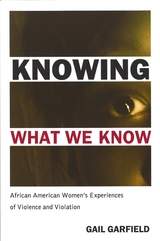 Knowing What We Know: African American Women's Experiences of Violence and Violation
Garfield, Gail
Rutgers University Press, 2005 In recent years there has been an attempt by activists, service providers, and feminists to think about violence against women in more inclusive ways. In Knowing What We Know, activist and sociologist Gail Garfield argues that this effort has not gone far enough and that in order to understand violence, we must take the lived experiences of African American women seriously. Doing so, she cautions, goes far beyond simply adding voices of black women to existing academic and activist discourses, but rather, requires a radical shift in our knowledge of these women’s lives and the rhetoric used to describe them.
Bringing together a series of life-history interviews with nine women, this unique study urges a departure from established approaches that position women as victims of exclusively male violence. Instead, Garfield explores what happens when women’s ability to make decisions and act upon those choices comes into conflict with cultural and social constraints. Chapters explore how women experience racialized or class-based violence, how these forms of violence are related to gendered violence, and what these violations mean to a woman’s sense of identity. By showing how women maintain, sustain, and in some instances regain their sense of human worth as a result of their experiences of violation, Garfield complicates the existing dialogue on violence against women in new and important ways.
Knowing Where It Comes From: Labeling Traditional Foods to Compete in a Global Market
Fabio Parasecoli
University of Iowa Press, 2017 Offering the first broadly comparative analysis of place-based labeling and marketing systems, Knowing Where It Comes From examines the way claims about the origins and meanings of traditional foods get made around the world, from Italy and France to Costa Rica and Thailand. It also highlights the implications of different systems for both producers and consumers.
Labeling regimes have moved beyond intellectual property to embrace community-based protections, intangible cultural heritage, cultural landscapes, and indigenous knowledge. Reflecting a rich array of juridical, regulatory, and activist perspectives, these approaches seek to level the playing field on which food producers and consumers interact.
 Knowledge and Computing: Computer Epistemology and Constructive Skepticism
Tibor Vámos
Central European University Press, 2010 The result of the author's extensive practical experience: a decade in computer process control using large scale systems, another decade in machine pattern-recognition for vision systems, and nearly a decade dealing with artificial intelligence and expert systems. These real-life projects have taught Vámos a critical appreciation of, and respect for, both abstract theory and the practical methodology that grows out of—and, in turn, shapes—those theories.Machine representation means a level of formalization that can be expressed by the instruments of mathematics, whereas programming is not more and not less than a special linguistic translation of these mathematical formulae. How these all are related and controlled is a most practical philosophical and computation professional task. Wide experience in the practical fields of computer science, and the research of the underlying theoretical issues have led Vámos to the development of the attitude and activity of constructive skepticism.
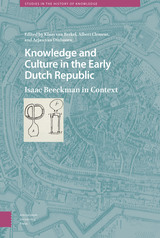 Knowledge and Culture in the Early Dutch Republic: Isaac Beeckman in Context
Klaas van Berkel
Amsterdam University Press, 2022 The Dutch Republic around 1600 was a laboratory of the Scientific Revolution of the seventeenth century. Here conditions were favourable for the development of new ways of knowing nature and the natural philosopher Isaac Beeckman, who was born in Middelburg in 1588, was a seminal figure in this context. He laid the groundwork for the strictly mechanical philosophy that is at the heart of the new science. Descartes and others could build on what they learned, directly or indirectly, from Beeckman. As previous studies have mainly dealt with the scientific content of Beeckman’s thinking, this volume also explores the wider social, scientific and cultural context of his work. Beeckman was both a craftsman and a scholar and fruitfully combined artisanal ways of knowing with international scholarly traditions. Beeckman’s extensive private notebook offers a unique perspective on the cultures of knowledge that emerged in this crucial period in intellectual history.
Knowledge and Experience
C. D. Rollins
University of Pittsburgh Press, 1963 The fifteen papers in this volume deal with the two overlapping topics of knowledge and experience from the perspective of analytic philosophical inquiry. The topics addressed are prominent in the work of such modern philosophers as Ludwig Wittgenstein, Bertrand Russell, C. I. Lewis, Gilbert Ryle, A. J. Ayer, and John L. Austin.
Contributors include: Hector-Neri Castañeda, Newton Garver, Arthur N. Prior, John R. Searle, G. J. Warnock, with commentary by Paul Benacerraf, V. C. Chappell, Carl Ginet, F. A. Siegler, James F. Thomson, Zeno Vendler, and Paul Ziff.
 Knowledge and Knowing in Media and Film Studies
Steve Connolly
University College London, 2025 Are media and film studies truly new subjects? Steve Connolly uncovers their deep disciplinary roots and evaluates how knowledge is constructed and taught in the classroom.
The nature of knowledge in the curriculum is well-defined for traditional subjects like History and Science, but for newer disciplines like Media and Film Studies, the boundaries are far less clear. Knowledge and Knowing in Media and Film Studies is the first book to explore this question in depth, tracing the epistemological foundations of these subjects and their place in the English school curriculum.
Steve Connolly argues that while both Media and Film Studies have distinct intellectual traditions, their inclusion of craft skills alongside theoretical and factual knowledge has shaped a different set of criteria for what counts as valuable knowledge. Consisting of historical sources and interviews with teachers, this work goes against the assumption that these are novel subjects and shows their deep parallels with more established fields. Essential reading for educators and researchers, the book provides a necessary framework for understanding how knowledge in these disciplines is taught and legitimized in schools today.
Knowledge and Representation
Albert Newen, Andreas Bartels, and Eva-Maria Jung
CSLI, 2011 This compilation of cutting-edge philosophical and scientific research comprises a survey of recent neuroscientific research on representational systems in animals and humans. Representational systems provide their owners with useful information about their environment and are shaped by the special informational needs of the organism with respect to its environment. In this volume, the authors address the long-standing dispute about the usefulness of the notion of representation in the study of behavior systems and offer a fresh perspective on representational systems that combines philosophical insights and experimental experience.
Knowledge and Social Imagery
David Bloor
University of Chicago Press, 1991 The first edition of this book profoundly challenged and divided students of philosophy, sociology, and the history of science when it was published in 1976. In this second edition, Bloor responds in a substantial new Afterword to the heated debates engendered by his book.
Knowledge and the Flow of Information
Fred I. Dretske
CSLI, 1999 An attempt to develop a theory of knowledge and philosophy of mind using ideas derived from the mathematical theory of communication developed by Claude Shannon. Information is seen as an objective commodity defined by the dependency relations between distinct events. Knowledge is then analyzed as information caused belief. Perception is the delivery of information caused belief. Perception is the delivery of information in analog form (experience) for conceptual utilization by cognitive mechanisms. The final chapters attempt to develop a theory of meaning (or belief content) by viewing meaning as a certain kind of information-carrying role.
Knowledge Discovery and Data Mining
M.A. Bramer
The Institution of Engineering and Technology, 1999 Modern computing systems of all kinds accumulate various data at an almost unimaginable rate. Alongside the advances in technology that make such storage possible has grown a realisation that buried within this mass of data there may exist some knowledge of considerable value. This could be information critical for a company's business success or something leading to a scientific or medical discovery or breakthrough. Most data is simply stored and never examined, but machine-learning technology has the potential to extract knowledge of value (i.e. data mining).
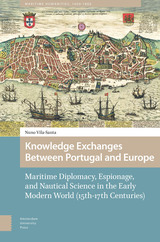 Knowledge Exchanges Between Portugal and Europe: Maritime Diplomacy, Espionage, and Nautical Science in the Early Modern World (15th-17th Centuries)
Nuno Luís Vila-Santa Braga Campos
Amsterdam University Press, 2024 Following recent historiographical appeals on the need to study knowledge exchanges between European maritime rivals and their impact on overseas expansionist processes, this book makes this study for the Portuguese overseas empire between the fifteenth and seventeenth centuries. As the first European maritime power to systematically launch long-distance voyages, Portugal became a model worth emulation when Spain, France, England and the Dutch Republic started their own overseas enterprises. In different chapters that each adopt a case study relation (Portugal-Spain, Portugal-England, Portugal-France and Portugal-Dutch Republic), this book documents how Portuguese maritime knowledge was outsourced by its maritime rivals. The impact that Portuguese nautical knowledge had is evaluated, resorting particularly to a wide range of diplomatic and espionage documents. Finally, the book discusses the alleged Iberian secrecy policies regarding maritime knowledge, explaining why there is no serious reason to consider their success.
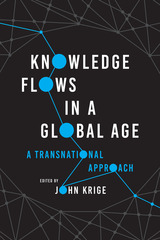 Knowledge Flows in a Global Age: A Transnational Approach
Edited by John Krige
University of Chicago Press, 2022 A transnational approach to understanding and analyzing knowledge circulation.
The contributors to this collection focus on what happens to knowledge and know-how at national borders. Rather than treating it as flowing like currents across them, or diffusing out from center to periphery, they stress the human intervention that shapes how knowledge is processed, mobilized, and repurposed in transnational transactions to serve diverse interests, constraints, and environments. The chapters consider both what knowledge travels and how it travels across borders of varying permeability that impede or facilitate its movement. They look closely at a variety of platforms and objects of knowledge, from tangible commodities—like hybrid wheat seeds, penicillin, Robusta coffee, naval weaponry, seed banks, satellites and high-performance computers—to the more conceptual apparatuses of plant phenotype data and statistics. Moreover, this volume decenters the Global North, tracking how knowledge moves along multiple paths across the borders of Mexico, India, Portugal, Guinea-Bissau, the Soviet Union, China, Angola, Palestine and the West Bank, as well as the United States and the United Kingdom. An important new work of transnational history, this collection recasts the way we understand and analyze knowledge circulation.
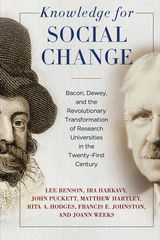 Knowledge for Social Change: Bacon, Dewey, and the Revolutionary Transformation of Research Universities in the Twenty-First Century
Lee Benson, Ira Harkavy, Matthew Hartley
Temple University Press, 2017 Employing history, social theory, and a detailed contemporary case study, Knowledge for Social Change argues for fundamentally reshaping research universities to function as democratic, civic, and community-engaged institutions dedicated to advancing learning and knowledge for social change. The authors focus on significant contributions to learning made by Francis Bacon, Benjamin Franklin, Seth Low, Jane Addams, William Rainey Harper, and John Dewey—as well as their own work at Penn’s Netter Center for Community Partnerships—to help create and sustain democratically-engaged colleges and universities for the public good. Knowledge for Social Change highlights university-assisted community schools to effect a thoroughgoing change of research universities that will contribute to more democratic schools, communities, and societies. The authors also call on democratic-minded academics to create and sustain a global movement dedicated to advancing learning for the “relief of man’s estate”—an iconic phrase by Francis Bacon that emphasized the continued betterment of the human condition—and to realize Dewey’s vision of an organic “Great Community” composed of participatory, democratic, collaborative, and interdependent societies.
 Knowledge in Modern Transimperial History: Actors, Formations, Causes
Cyrus Schayegh
Leiden University Press, 2026 This volume intervenes in the growing field of transimperial history, which explores interactions across empires—European and non-European—between the mid-1800s and mid-1900s, a period of heightened imperial entanglement. It focuses on how actors from one empire came to know, interpret, and position themselves in relation to actors from other empires, emphasizing the role of socio-professional profiles, informal networks, and formal institutions. The volume is structured around three themes. First, it examines actors, including both individuals (e.g. a Chinese diplomat in Europe) and professional groups (e.g. journalists, military officers). Second, it analyzes formations of transimperial knowledge through diverse textual objects such as bank chops and travelogues, highlighting processes of commensurabilization. Third, it explores causes, noting how specific inter-imperial junctures and enabling factors—like language skills and institutional access—facilitated knowledge creation. Altogether, the volume sheds light on the concrete, situated ways in which transimperial knowledge was produced, mediated, and made meaningful in a competitive imperial world.
 Knowledge in Modern Transimperial History: Actors, Formations, Causes
Cyrus Schayegh
Leiden University Press, 2026 This volume intervenes in the growing field of transimperial history, which explores interactions across empires—European and non-European—between the mid-1800s and mid-1900s, a period of heightened imperial entanglement. It focuses on how actors from one empire came to know, interpret, and position themselves in relation to actors from other empires, emphasizing the role of socio-professional profiles, informal networks, and formal institutions. The volume is structured around three themes. First, it examines actors, including both individuals (e.g. a Chinese diplomat in Europe) and professional groups (e.g. journalists, military officers). Second, it analyzes formations of transimperial knowledge through diverse textual objects such as bank chops and travelogues, highlighting processes of commensurabilization. Third, it explores causes, noting how specific inter-imperial junctures and enabling factors—like language skills and institutional access—facilitated knowledge creation. Altogether, the volume sheds light on the concrete, situated ways in which transimperial knowledge was produced, mediated, and made meaningful in a competitive imperial world.
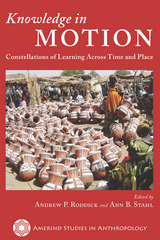 Knowledge in Motion: Constellations of Learning Across Time and Place
Edited by Andrew P. Roddick and Ann B. Stahl
University of Arizona Press, 2019 Spirit mediums of East Africa. Healers and fishermen of the Amazon River Basin. Potters of the American Southwest. People contending with climate change long ago. All share “knowledge in motion,” a process of drawing on experiences past and present while engaging in daily practice in relation to contexts of time, place, and power.
In the last twenty-five years, scholars from a number of disciplines have explored “situated learning,” specifically investigating how learning relates to social reproduction and daily life. In Knowledge in Motion, contributors focus on learning through time and at a variety of scales, particularly as they relate to power and politics, with implications for emergent communities and constellations of practice.
This volume brings together archaeologists, historians, and cultural anthropologists to examine communities engaged in a range of learning practices around the globe, from Africa to the Americas. Contributors draw on the growing interdisciplinary scholarship on situated learning to explore those processes in relation to power and broader forces that shape knowledge during times of turbulent change.
Enriching the diversity of regions and disciplines, Knowledge in Motion focuses on how learning, knowledge transmission, and the emergent qualities of communities and constellations of practice are shaped by changing spheres of interaction or other unstable events and influences. The contributions forge productive theories and methodologies for exploring situated learning and its broad-ranging outcomes.
 Knowledge in the Age of Digital Capitalism: An Introduction to Cognitive Materialism
Mariano Zukerfeld
University of Westminster Press, 2017 Author Mariano Zukerfeld was awarded the best book prize by The Association ESOCITE (Asociación Latinamericana de Estudios Sociales de la Cience y la Tecnología). “the book is a refreshing, dynamic approach leading back into discussions which have been neglected during the last 20 years.” -https://www.triple-c.at/index.php/tripleC/article/view/971 Knowledge in the Age of Digital Capitalism proposes a new critical theory concerning the functioning of capitalism and how we consider knowledge and information. This ambitious book systematically and lucidly introduces contemporary phenomena into the framework of cognitive materialism to address some of the great themes of the social sciences: knowledge, exploitation and social class in an account of capitalism's totality in the present day. Author Mariano Zukerfeld reinvigorates materialist study of communications, presenting a typology of knowledge to explain the underlying material forms of information, intellectual property and cognitive work in contemporary societies. Using current examples the book also examines concerns such as free labour and the pivotal role of intellectual property. The book offers nothing less than an introduction to the theory of cognitive materialism and an account of the entirety of the digital (or knowledge) capitalism of our time.
 Knowledge in the Time of Cholera: The Struggle over American Medicine in the Nineteenth Century
Owen Whooley
University of Chicago Press, 2013 Vomiting. Diarrhea. Dehydration. Death. Confusion. In 1832, the arrival of cholera in the United States created widespread panic throughout the country. For the rest of the century, epidemics swept through American cities and towns like wildfire, killing thousands. Physicians of all stripes offered conflicting answers to the cholera puzzle, ineffectively responding with opiates, bleeding, quarantines, and all manner of remedies, before the identity of the dreaded infection was consolidated under the germ theory of disease some sixty years later. These cholera outbreaks raised fundamental questions about medical knowledge and its legitimacy, giving fuel to alternative medical sects that used the confusion of the epidemic to challenge both medical orthodoxy and the authority of the still-new American Medical Association. In Knowledge in the Time of Cholera, Owen Whooley tells us the story of those dark days, centering his narrative on rivalries between medical and homeopathic practitioners and bringing to life the battle to control public understanding of disease, professional power, and democratic governance in nineteenth-century America.
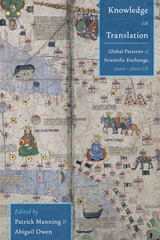 Knowledge in Translation: Global Patterns of Scientific Exchange, 1000-1800 CE
Patrick Manning, Abigail Owen
University of Pittsburgh Press, 2018
In the second millennium CE, long before English became the language of science, the act of translation was crucial for understanding and disseminating knowledge and information across linguistic and geographic boundaries. This volume considers the complexities of knowledge exchange through the practice of translation over the course of a millennium, across fields of knowledge—cartography, health and medicine, material construction, astronomy—and a wide geographical range, from Eurasia to Africa and the Americas. Contributors literate in Arabic, Catalan, Chinese, Greek, Hebrew, Italian, Japanese, Latin, Minnan, Ottoman, and Persian explore the history of science in the context of world and global history, investigating global patterns and implications in a multilingual and increasingly interconnected world. Chapters reveal cosmopolitan networks of shared practice and knowledge about the natural world from 1000 to 1800 CE, emphasizing both evolving scientific exchange and the emergence of innovative science. By unraveling the role of translation in cross-cultural communication, Knowledge in Translation highlights key moments of transmission, insight, and critical interpretation across linguistic and faith communities.
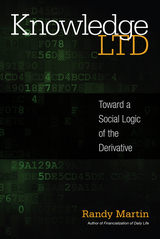 Knowledge LTD: Toward a Social Logic of the Derivative
Randy Martin
Temple University Press, 2015 Catastrophes ranging from the travesties of financial markets and the explosion of the Deepwater Horizon oil well to the tsunami that struck northern Japan and the levees breaking in New Orleans are examples of the limits of knowledge. Author Randy Martin insists that the expertise erected to prevent these natural and social disasters failed in each case.
In Knowledge LTD, Martin explores how both the limits of knowledge and the social constructions of culture reflect the way we organize social life in the face of disasters and their aftermath. He examines this crisis of knowledge as well as the social movements that rose up in its wake. Martin not only treats derivatives as financial contracts for pricing risk, but also shows how the derivative works in economic terms, where the very unity of the economy is undone.
Knowledge LTD ultimately points to a more comprehensive reordering of the once separate spheres of economy, polity, and culture. Martin provides a new way of understanding the social significance of the all-pervasive derivative logic.
|
|

